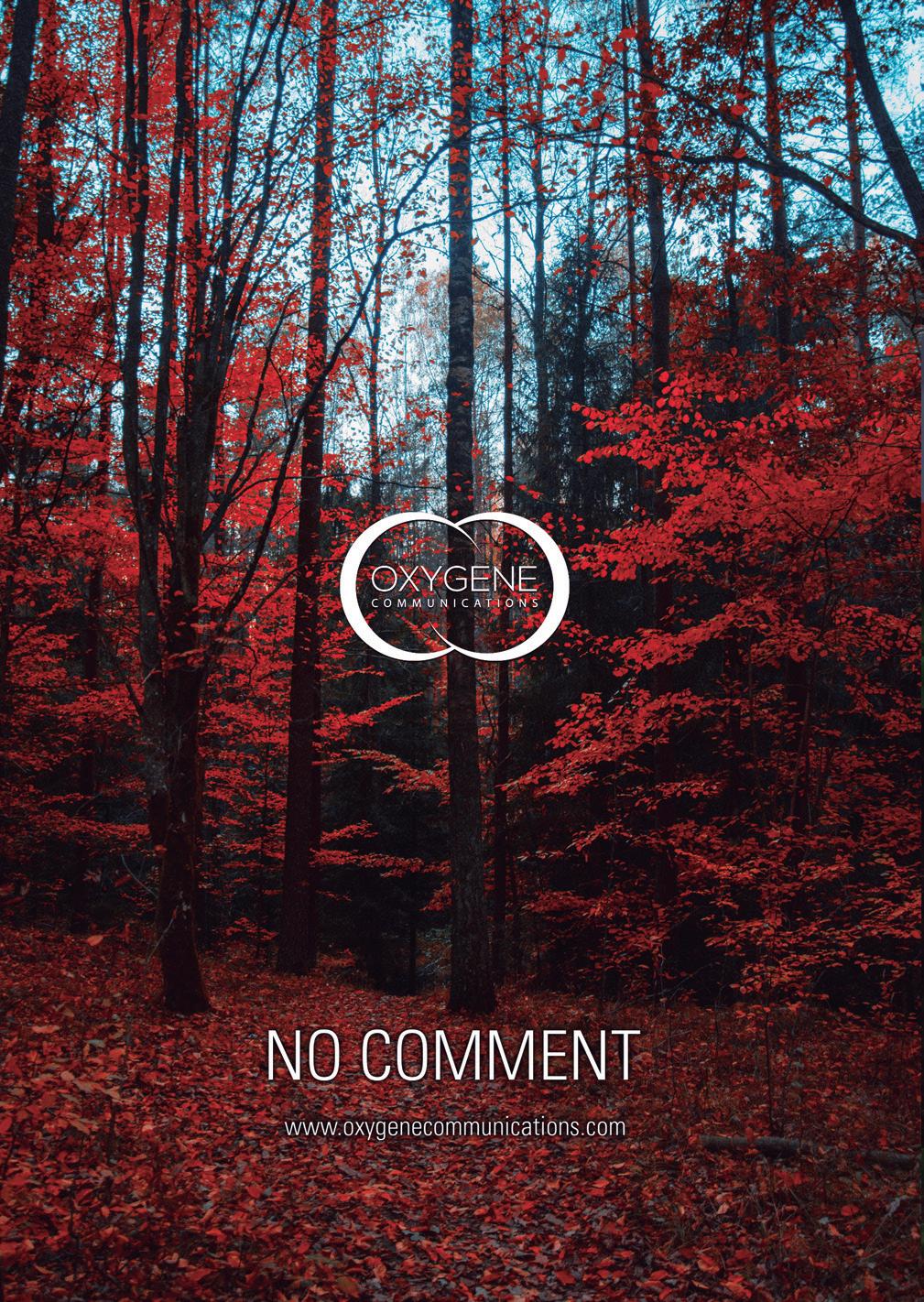


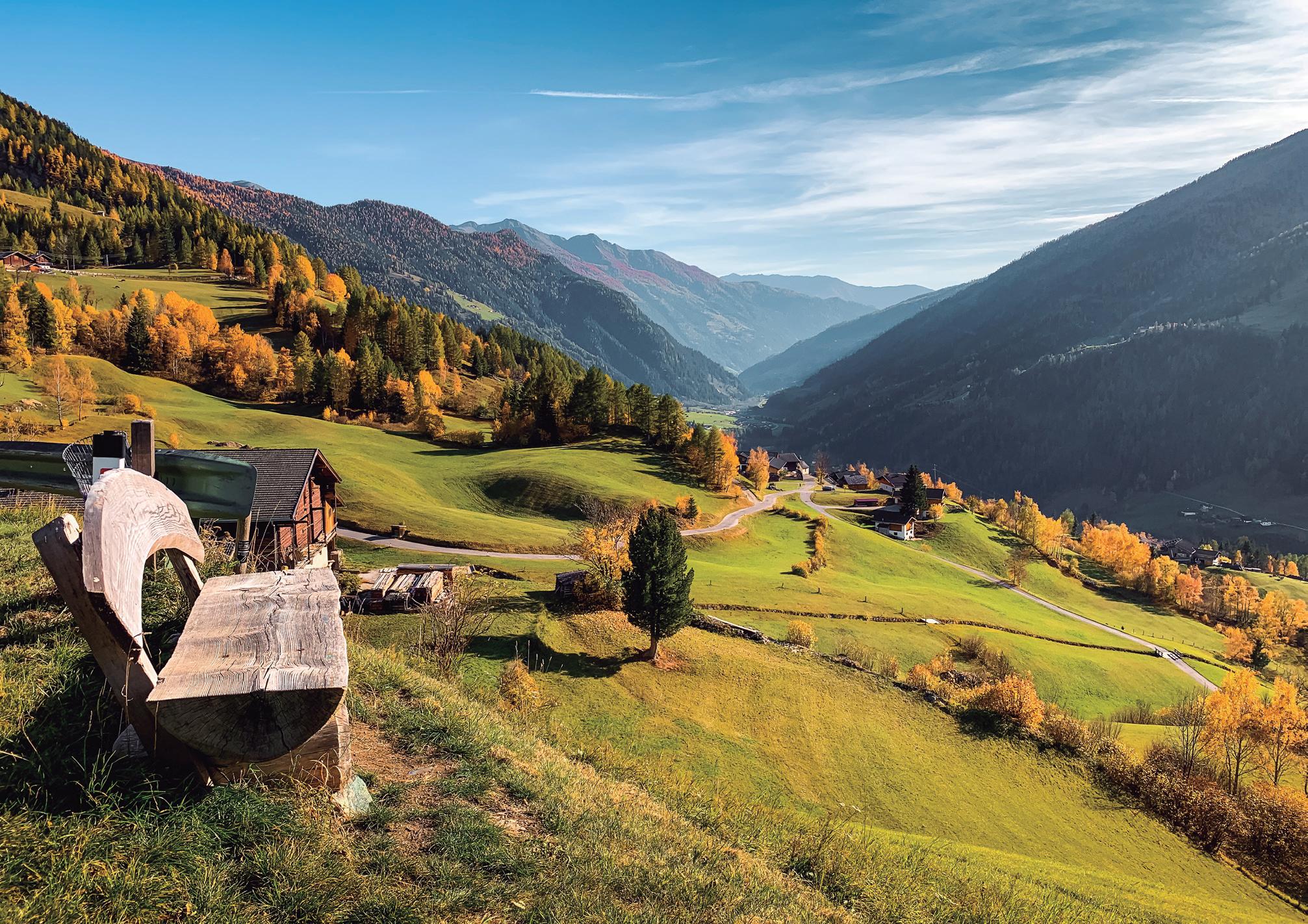
“Old age is like climbing a mountain. You climb from ledge to ledge. The higher you get, the more tired and breathless you become, but your views become more extensive.”.
(Ingmar Bergman)
“Envejecer es como escalar una gran montaña: mientras se sube las fuerzas disminuyen, pero la mirada es más libre, la vista más amplia y serena”.
(Ingmar Bergman)
PHOTOGRAPHY: PEXELS.COM

“When a flower opens, it’s spring all over the world”.
(Alejandro Jodorowsky)
“Cuando se abre una flor, es primavera en todo el mundo”. (Alejandro Jodorowsky)
PHOTOGRAPHY: PEXELS.COM
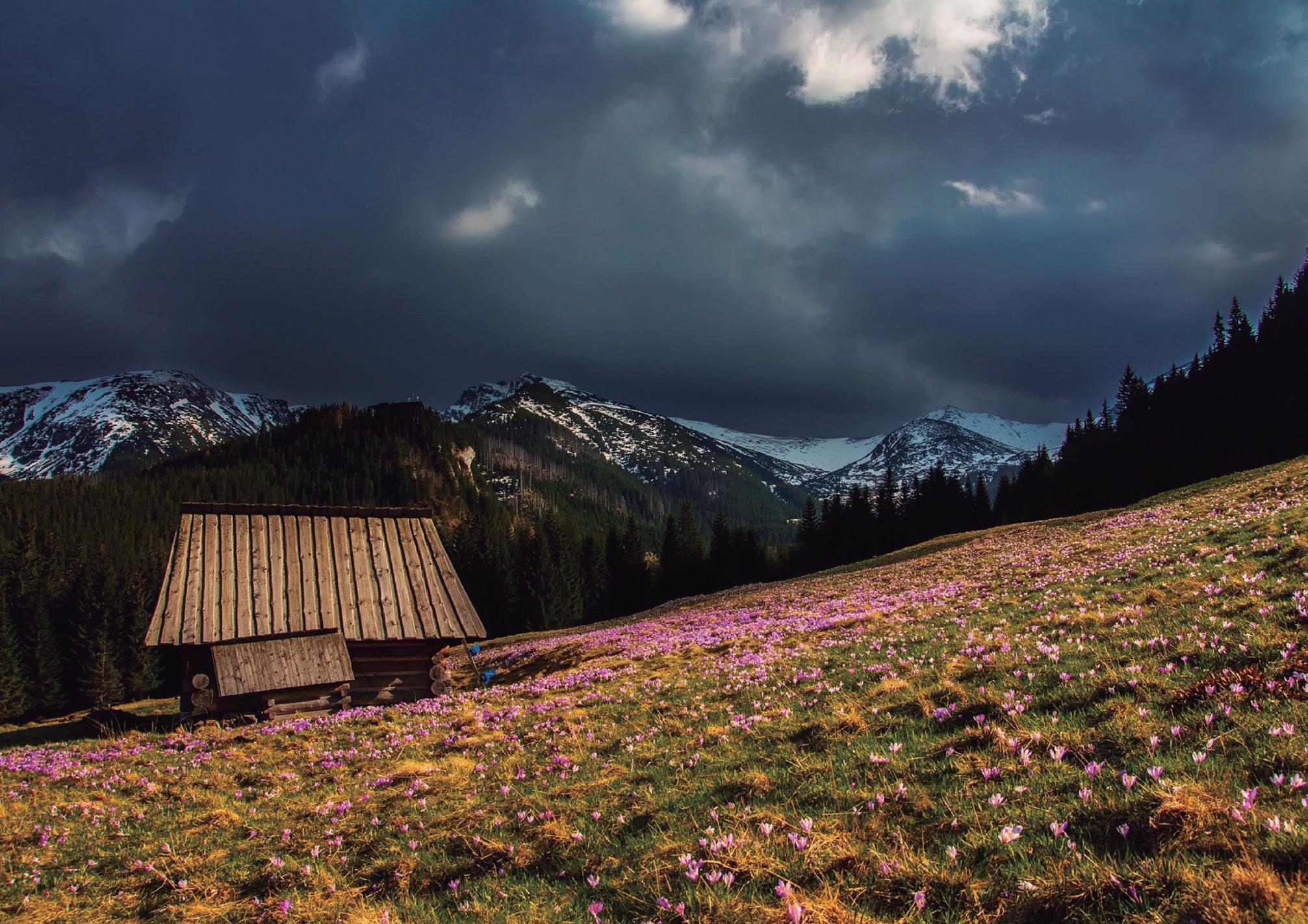
“I can’t imagine descending defeated from the mountain ...”. (George Mallory)
“No puedo imaginarme descendiendo derrotado de la montaña ...“. (George Mallory)
PHOTOGRAPHY: PEXELS.COM

This volume was published in March 2020 by Oxygene Ltd. OTWO Issue 8
Oxygene Ltd.Business Centre. 19 George´s Lane.
GX11 1AA, Gibraltar Tel. +00350 54080331 www.oxygenecommunications.com
© Publishing: Oxygene Ltd.
Vanessa Byrne Managing Director
Juanjo Trujillo Creative Director
Sarah Birch Columnist
Ana Villalta Sales Representative
Photographer: Gibraltar Heritage Trust, David Rodríguez, David Parody, John Piris, Sarah Birch, Jorge Luis Romo Villalba, Rafael Martin, Nicolas Pantelick .
10
Editorial
14
Shorts / Cortos.

46
Cover photo: Avery Nielsen-Webb.
Back Cover photo: Artem Saranin.
Translation:
Sarah Birch, Ana Villata and Merlin Gutherless
Printing: Santa Teresa Industrias Graficas SA
All rights reserved. No part of this publication may be reproduced, stored in a retrieval system or transmitted in any form or by any means, electronic, mechanical, photocopying, recording or otherwise, without the prior permission in writing from the publishers.
All rights reserved. ISSN 2633-7401


Collection “The flower of the month”. Colección “La flor del mes”
The Natural Swap. El Cambio Natural.
Eco Passion.
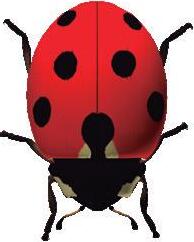
The importance of preserving our heritage
La importancia de conservar nuestro patrimonio
Sustainable Events
Evento Sostenible
Eco Park Glass
Parque Ecológico: Reciclar vidrio
Spelunking in Lower St Michael’s Cave, Gibraltar speleología en la cueva de San Miguel, Gibraltar
La Sierra de la Utrera
Skatepark Málaga “Rubén Alcántara”

Green Week Gibraltar
Where tradition meets climate change
La tradición frente al cambio climático
Quick Guide to Galápagos Islands. Guía Rápida de Islas Galápagos.
12 Spring Catalog 20


OTWO 8
001
78 72 66 56
90
92
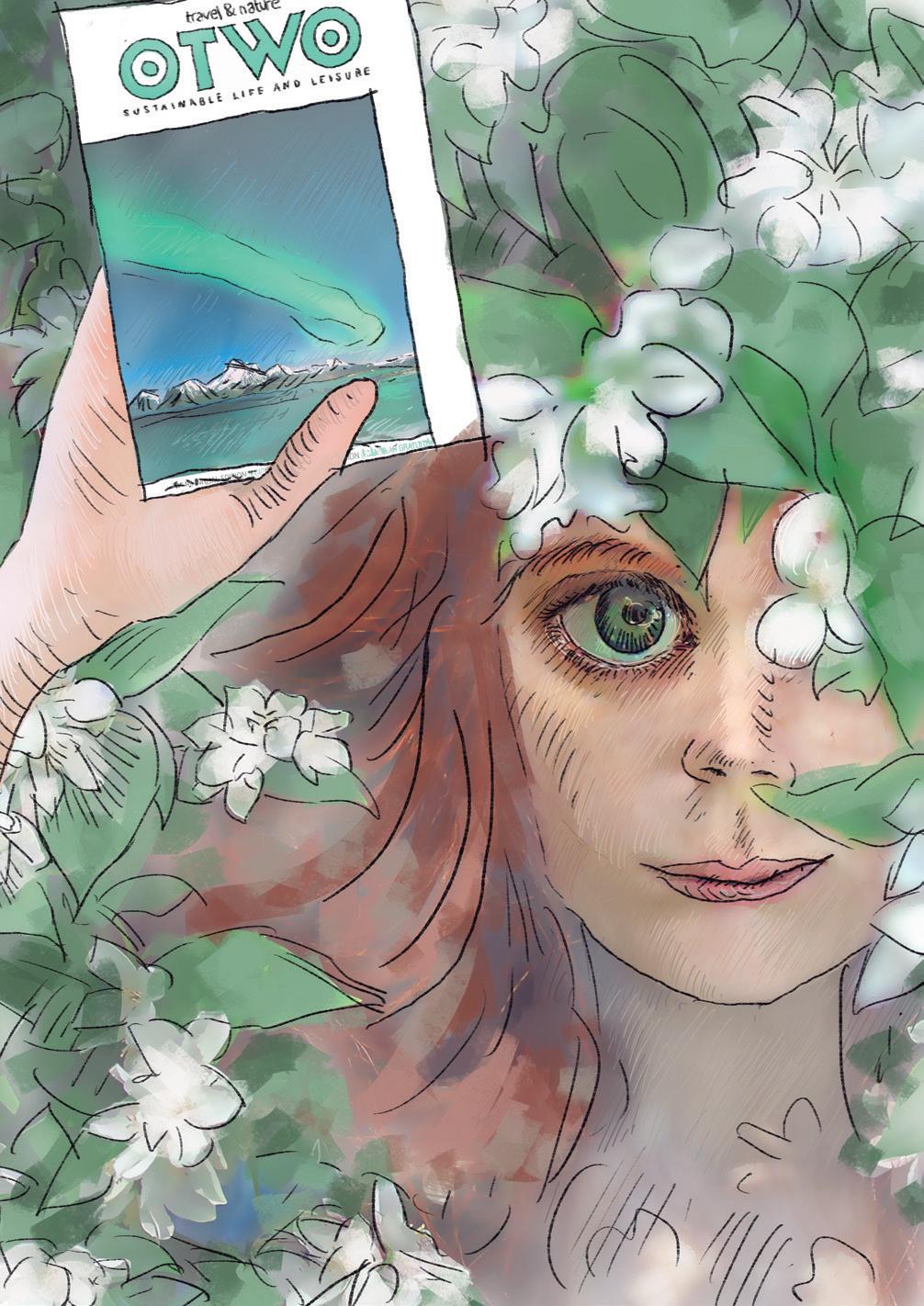
March 2020 that can only mean… Spring is here!!
Marzo de 2020 solo puede significar ... ¡La primavera está aquí!
Vanessa Byrne / Managing Director
March 2020 that can only mean… Spring is here!!
In this edition we gave it a bit of a twist and provide a focus on cultural and sporting events. We provide an amazing article on sustainable events. A focus on the Gibraltar Island Games and how its organization in general has and continues to add to debate increasing awareness of our environmental responsibilities.
We also provide you with an amazing bio on Ruben Alcantara – A professional BMX rider from Malaga – We share his amazing journey and how incredibly far he has taken his passion for the BMX sport to now own his very own skate park in his home town. His passion, professionalism and experience has driven him to host the Final World Championships for the Vans BMX Pro Cup 2018 in his own skatepark. Makes me think of what can be done over here. Clean, healthy, non polluting sports, perfect add to the local scene.
One product I would like to give a special highlight are the Soap Nuts promoted by the lovely girls at EcoPassion. I have personally started using this product and I am amazed on how good they are. Definitely a must try.
This will be our 8th Month running and I cannot believe the support we have had both locally and internationally. We are doubling on online subscribers every month, and have felt privileged to see our printed editions flying off the stands. We are a forever grateful team of ecowarriors who are able to share, support and provide amazing ecotourism spots, sustainable alternatives, amazing articles and news at an international scale. My tremendous heartfelt gratitude to all our subscribers, contributors, supporters and readers and please, if there is anything you feel you would like to see on here ping us a message on social media or email us on info@otwomag.com with your ideas.
x We are in this together x One Love x
En esta edición le dimos un pequeño giro al contenido y nos enfocamos en eventos culturales y deportivos. Ofrecemos un artículo increíble sobre eventos sostenibles. También un enfoque a los Juegos de las Islas, celebrados en Gibraltar y cómo su organización intensifica el debate para una mayor conciencia de nuestras responsabilidades ambientales.
También le proporcionamos una biografía increíble sobre Rubén Alcántara, un ciclista profesional de BMX de Málaga. Compartimos su apasionante viaje y lo lejos que le ha llevado su pasión por este deporte para poseer su propio parque de skate en su ciudad natal. Su pasión, profesionalismo y experiencia lo han llevado a organizar el Campeonato Mundial Final de la Vans BMX Pro Cup 2018 en su propio skatepark. Me hace pensar en lo que se puede hacer por aquí. Deportes limpios, saludables y no contaminantes, perfectos para agregar a la escena local. Un producto que me gustaría destacar es el Soap Nuts promocionado por las encantadoras chicas de EcoPassion. Yo personalmente comencé a usar este producto y estoy sorprendida de lo buenas que son. Definitivamente hay que probarlo.
Este será nuestro octavo mes consecutivo y no puedo creer el apoyo que hemos tenido tanto a nivel local como internacional. Estamos duplicando los suscriptores todos los meses, y nos hemos sentido privilegiados de ver nuestras ediciones impresas volando desde las gradas. Somos un equipo de ecowarriors siempre agradecido de compartir, apoyar y proporcionar increíbles lugares de ecoturismo, alternativas sostenibles, artículos inolvidables y noticias a escala internacional.
Mi enorme y sincera gratitud a todos nuestros suscriptores, colaboradores, seguidores y lectores y, por favor, si hay algo que le gustaría ver aquí, envíenos un mensaje en las redes sociales o envíenos un correo electrónico a info@otwomag.com con sus ideas.
x Estamos juntos en esto x One Love x Paz y amor
11
OTWO 08 / MARCH 2020
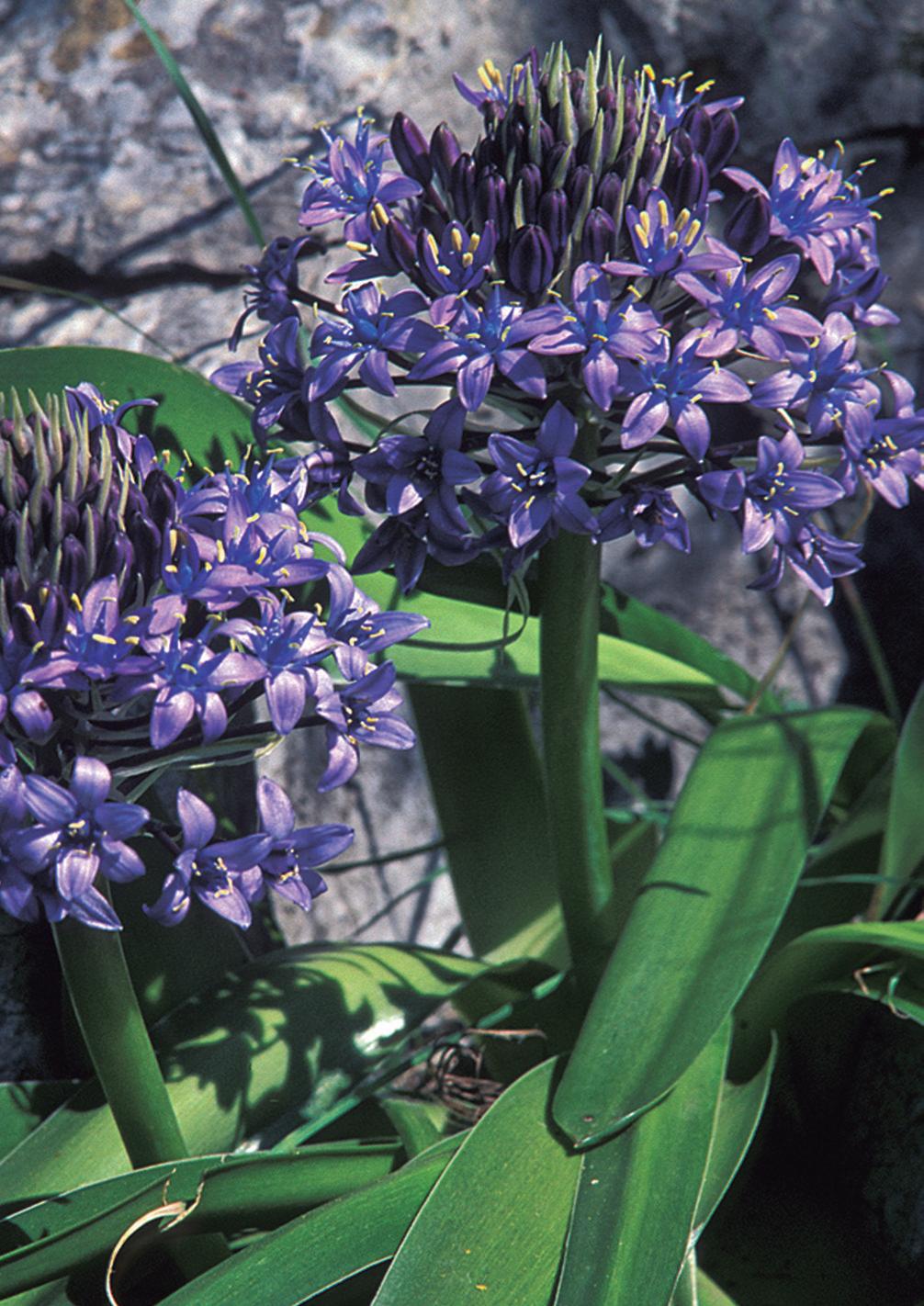

MARCH / Marzo
Collection “The flower of the month”
Giant Squill
Jacinto Estrellado Peruano Gigante
Dr Keith Bensusan Director Gibraltar Botanic Gardens, The Alameda.
The Giant Squill is a large bulbous plant with extremely beautiful, bright blue and yellow flowers. Another common name for the species is the Portuguese Squill. Despite its scientific name, Scilla peruviana, and its exotic look, it is native to the western Mediterranean, including Gibraltar where it is common in open, rocky habitats throughout the Rock. The confusing species name is due to a mistake made when it was first named. The Swedish botanist Linnaeus, the father of modern biological nomenclature, received a specimen from Spain that arrived aboard a ship named Peru, and thought that ‘Peru’ referred to the plant’s provenance, thus naming it ‘peruviana’ or ‘from Peru’. Due to rule of priority that operates in botanical nomenclature, this non-Peruvian species is stuck with its name. The Giant Squill is used to excellent effect throughout the Gibraltar Botanic Gardens, but it is best seen in the Rockery near the top of the gardens, next to the Lions’ Pond, alongside a large array of Mediterranean plants that flower in spring. As it is native to Gibraltar, it is popular with indigenous pollinating insects such as bees and especially hoverfiles, which often sit on its large inflorescences.
El Jacinto estrellado peruano o flor de la corona es una planta bulbosa, grande, con flores muy hermosas, azules brillantes y amarillas. Otra denominación común para esta especie es Otro nombre común para la especie es el jacinto portugués. A pesar de su nombre científico y su exótica apariencia, la Scilla peruviana, es de origen mediterráneo occidental, incluyendo en esta localización a Gibraltar, donde es una planta común en entornos abiertos y rocosos de toda la Roca. La confusión en su denominación se debe al error cometido en su primera nomenclatura. El botánico sueco Linneo, padre de la nomenclatura biológica moderna, recibió un ejemplar español que procedía de un barco llamado Perú, lo que le llevó a pensar que era el país de procedencia de la planta en cuestión, por eso la “peruviana” o “de Perú”. Como consecuencia de la regla de prioridad que opera en la nomenclatura botánica, se ha mantenido el nombre a pesar de que su procedencia no es originaria de Perú. El Jacinto Estrellado causa un extraordinario efecto a lo largo de todo el Jardín Botánico de Gibraltar, pero luce mejor en los jardines de la parte superior de la roca, junto al Estanque de los Leones, rodeado de una gran variedad de plantas mediterráneas que florecen en primavera. Como es oriunda de Gibraltar, es popular entre los insectos polinizadores como las abejas y las avispas que a menudo se posan en sus destacadas cabezuelas.
13
OTWO 08 / MARCH 2020
Photo courtesy: Leslie Linares

FIRST DEDICATED EBIKE SHOP OPENS IN GIBRALTAR

After months of successfully running eBike tours, the eBike Gibraltar retail store opened its doors on the 1st February offering an emissions free, healthy and fun transport alternative.
This dedicated shop is the only one of its kind in the local area and currently stocks super premium eBikes by Riese and Müller. Shortly they will be stocking UK made Brompton foldable eBikes.
Electric bikes have been soaring in popularity over the last few years. In the Netherlands, where traditional bicycles have been popular for decades, eBike sales now outnumber regular bike sales. Not only are they a green method of getting around, but they also make cycling for long distances and tackling uphill journeys incredibly easy. And with a full battery charge costing 35p and offering up to a 50km range, eBikes are also very cheap to run.
Starting out last year, eBike Gibraltar began with their unique eBike sightseeing tours of the Upper Rock. Soon, they will be launching a new panoramic tour of Gibraltar which will circumnavigate the Rock taking in the city’s defences and military history.
Speaking to eBike Gibraltar founder, Stuart Hedley, we asked what had inspired him to bring this project to life, he said “I wanted to do something for the local community and try to make Gibraltar a nicer place to live and to give people the opportunity to try out an emissions free alternative”.
EBike rentals are also available with pricing starting from £35. You can choose between a regular eBike or a cargo ebike that can fit up to two toddlers.
If you would just like to test one out for yourself, you can take an eBike for a quick test drive for free, but for those of you who would like a little longer, a
keys4bike scheme is in the works whereby you can hand in your car keys in exchange for borrowing an eBike for a week.
To try one out for yourself visit eBike Gibraltar at the entrance of Ocean Village or visit their website to book one of their sightseeing tours. For locals who wish to purchase an eBike, a government rebate of £200 is also available.
Abre en Gibraltar la primera tienda exclusiva de eBikes
Tras el exitoso lanzamiento de los recorridos con bicis eléctricas, la tienda de eBike en Gibraltar abrió sus puertas el pasado uno de febrero, incorporando así al mercado una alternativa saludable, divertida y libre de emisiones.
Esta tienda es la única de su tipo en toda la zona y en la actualidad vende eBikes de las marcas Riese y Müller. En breve incorporará a su stock modelos plegables de la marca británica Brompton.
La popularidad de estas bicis se ha disparado en los últimos años. En los Países Bajos, donde las bicicletas tradicionales suman décadas de popularidad, las ventas de modelos eléctricos se están imponiendo. Además de permitir moverse de forma más ecológica, también facilitan sobremanera el reto de cubrir distancias largas o cuestas empinadas. La carga total de la bacteria cuesta 35 peniques para cubrir hasta 50 kilómetros, por lo que son también tremendamente económicas.
eBike Gibraltar se presentó el año pasado a través de recorridos turísticos por la parte alta del Peñón. En breve lanzarán un nuevo tour panorámico que recorrerá la roca por las defensas militares.
Preguntado por el qué le inspiró para materializar este proyecto, el fundador eBike, Stuart Hedley, nos dijo que quería “aportar algo a la comunidad local de cara a convertir Gibraltar en un lugar más habitable intentándolo a través de una alternativa libre de emisiones”.También están disponibles las eBike de alquiler a partir de 35 euros. Se puede elegir entre el modelo individual y uno para llevar uno o dos niños. Si desea probar una, puede hacer un recorrido gratuito y si prefiere una experiencia más larga, se pueden contratar el programa que permite disfrutar de un modelo durante una semana a cambio de dejar las llaves de su coche.
Para probar una, visite eBike Gibraltar a la entrada Ocean Village o entre en la página web para reservar uno de sus itinerarios. Los residentes que deseen comprar una eBike tienen asimismo la opción de una ayuda gubernamental de 200 libras.

NEW ARTIFICIAL TREE CAN ABSORB AS MUCH CO2 AS 275 REGULAR TREES
Air pollution is a big problem in cities, not only do emissions from vehicles contribute towards climate altering greenhouse gases, but they also affect the quality of the air we breathe.
But now, Dresden based Green City Solutions has developed the City Tree, a 4-metre-high moss-covered street installation that can absorb the same amount of pollution as 275 regular trees.
These flat panelled towers with a convenient bench at its base contain a wall filled with different kinds of moss, this moss drinks in toxic air particulates and nitrogen oxides whilst simultaneously producing oxygen.
In 2018, London trialled some of these City Trees in the West End, and as of early 2020, several more have been installed in East London to help tackle air pollution problems in the surrounding area. Cities such as Amsterdam, Berlin, Hong Kong, Oslo and Brussels have also installed City Trees.
Taking up just 1% of the space of 275 trees, these installations could offer a temporary way to help tackle poor air quality while we make the change to greener transport solutions, particularly in areas with a lack of green spaces.
Each installation is self-sustainable, running on solar power and using its own water collection sys-
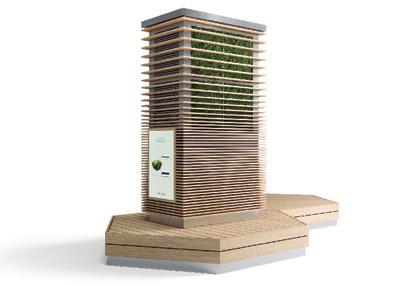
tem, it also includes smart technology that provides real-time data and measurements of the surrounding environment.
Green City Solutions hope that in the future they can eventually expand this technology by incorporating it into already existing buildings.
Un Nuevo árbol artificial puede absorber el equivalente en CO2 de lo que aspiran 275 árboles naturales
La contaminación atmosférica constituye un gran problema en las ciudades dado que además de contribuir al efecto invernadero, las emisiones que producen los vehículos empeoran el aire que respiramos.
La empresa, con sede en Dresde, ha desarrollado el City Tree, una instalación de cuatro metros de alto cubierta de musgo con capacidad para absorber la misma contaminación que aspiran 265 árboles naturales.
Estas torres de paneles, con un banco en la base, erigen un muro cubierto de diferentes tipos de musgo que captura partículas tóxicas y óxidos de nitrógeno produciendo oxígeno a su vez.
En la zona este de Londres se probaron algunos de estos árboles en 2018 y a principios de 2020 se han instalado muchos más en la parte este con el propósito de atajar los problemas de contaminación. En ciudades como Ámsterdam, Berlín, Hong Kong, Oslo y Bruselas también han sido instalados City Trees.
Al ocupar apenas un 1% de la superficie que abarcarían 275 árboles naturales, estas instalaciones pueden constituir una solución temporal para combatir el empobrecimiento del aire que respiramos a la espera que se complete la transición hacia soluciones más ecológicas, particularmente allí donde hay escasez de zonas verdes.
Cada instalación es autosuficiente y funciona con energía solar además de emplear su propio sistema de recogida de aguas. Incorpora también tecnología inteligente que suministra información en tiempo real así como mediciones de la calidad del aire en la zona circundante.
Green City Solutions espera poder expandir esta tecnología en el futuro a través de su incorporación a edificios ya existentes.
15 14
OTWO 08 / MARCH 2020 OTWO 08 / MARCH 2020

FRANCE BANS COMPANIES FROM THROWING AWAY UNSOLD GOODS
In early 2020 a new law was passed in France banning luxury clothing and goods companies from disposing of or destroying unsold and returned items.
This landmark law is part of a wider anti waste bill that contains 130 articles, which also covers items such as cosmetics and electrical goods.
The French Government claims that this is the first law of its kind and will ensure that surplus goods will now have to be reused, recycled or redistributed.
The new anti-waste and circular economy bill also includes the phasing out of paper till receipts, a 50% reduction of single use plastic bottles in the next 10 years and for all plastic to be recyclable by 2025.
Pharmacies will also be encouraged to sell certain medications in individual doses and takeaway restaurants will no longer be allowed to use plastic containers from 2023.
In 2015, France already began tackling its waste problem by introducing a law banning supermarkets from throwing away unsold food and redistributing it to the homeless or to charities.
Francia penaliza el deshecho de artículos no vendidos
El gobierno francés ha introducido a principios de este año nueva legislación para prohibir a las empresas que venden artículos y ropa de lujo que se desprendan de los mismos si no los venden.
Esta ley pionera forma parte de un conjunto de 130 artículos que abarcan otros productos comerciales como los cosméticos o los electrodomésticos.
El ejecutivo francés considera que ésta es la primera ley de este tipo y permitirá que los excedentes tengan ahora que ser reutilizados, reciclados o redistribuidos.
La nueva legislación contempla asimismo la eliminación en el marco de los próximos diez años de los recibos de papel así como la reducción en un 50% de las botellas de plástico individuales en ese mismo periodo. Pretende además que todo el plástico consumible sea de tipo reciclable para 2025.
Por otro lado, las farmacias recibirán la consigna de vender ciertos medicamentos en dosis individuales y a partir de 2023 los restaurantes de comida
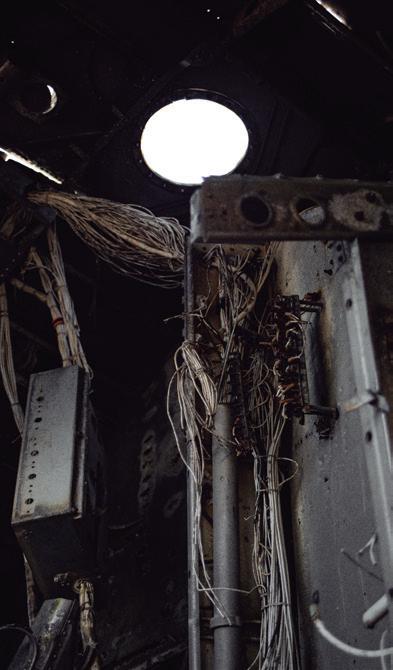
para llevar no podrán emplear recipientes de plástico.
Francia ya empezó a emprender medidas contra la acumulación de residuos allá por 2015 a través de la ley que impide a los supermercados desprenderse de comida no vendida. En su lugar, dicha comida es destinada a gente sin hogar o entidades benéficas.
ANTARCTICA REACHES 18.3º- ITS HIGHEST TEMPERATURE ON RECORD
Usually the coldest place on earth with average temperatures at this time of year between –10º to –60º, Antarctica reached a record-breaking temperature of 18.3º in early February 2020 – nearly 1º warmer than the previous record set in 2015.
The reading was taken at the Esperanza research station on the north west coast jutting out towards South America. The peninsula where the research centre is located is one of the fastest warming places on earth, with temperatures increasing at a rate of nearly 3℃ in the last 50 years. Glaciers along the coast of the peninsula are also retreating rapidly, with accelerated melting taking place over the last 12 years.
Climate scientists have expressed concern that it has only taken 5 years to beat the previous temperature record and that it is a clear sign that the area is experiencing rapid warming that is much higher than the global average.
Globally, this past January was declared the warmest on record by the European Union’s Copernicus Climate Change Service. Exceptionally high temperatures were recorded for the time of year in the north and east of Europe, Russia, most of the USA, Japan, parts of Southeast Asia and Australia.
La Antártida alcanza los 18,3º, su máximo histórico
Habitualmente el enclave más frío del planeta, con temperaturas que a estas alturas del año oscilan entre los -10 y -60 grados, la Antártica alcanzó un registro máximo de 18,3 a principios de 2020, casi un grado más que el del récord de 2015.
El registro se realizó en la estación de investigación Esperanza, en la costa oeste, orientada hacia
Sudamérica. La península en la que se ubica esta estación constituye uno de los enclaves que se vienen calentando con mayor celeridad en todo el planeta. La temperatura media ha crecido casi 3 grados en los últimos 50 años.
Los glaciares que circundan la costa de la península también están menguando de forma veloz, con un severo derretimiento registrado en los últimos 12 años.
Los científicos expertos en climatología han expresado su preocupación por el hecho de que apenas se hayan tardado 5 años en superar el anterior registro máximo, indicando que ello constituye una demostración evidente de que el calentamiento en esta zona es mayor que en el resto del planeta.
A nivel global, el pasado mes de enero fue declarado el de mayor temperatura media por el Servicio de Cambio Climático de la estación Copérnico de la Unión Europea. Se registraron temperaturas excepcionalmente elevadas en el norte y este de Europa, Rusia, la mayor parte de los Estados Unidos, Japón, partes del sudoeste asiático y Australia


16 17
OTWO 08 / MARCH 2020 OTWO 08 / MARCH 2020
The Natural Swap
El Cambio Natural
Bathroom- Body Wash
Recyclable? Most are but pumps are not recyclable.
How long does it take to decompose:
450 years.
Alternatives:
Bar of Soap.
Soap Berries.
African Black Soap Bar. Natural earths clay
Kitchen- Cleaning Wipes Recyclable? No.
How long does it take to decompose?
100 years.
How long does it take to decompose:
400 Years.
Alternatives:
Reusable wipes with soap bars. Bamboo wipes.
Biodegradable wipes.
Home – Washing Detergents Recyclable? Most are yes.
How long does it take to decompose?
400 years.
Alternatives: Soap Nuts. Homemade Natural Detergent. Baking Soda. White Vinegar.
Lifestyle – Pads and Tampons Recyclable? No.
How long does it take to decompose:
500 Years.
Alternatives:
Diva Cup.
Reusable pads.
Moon Cup.
Cora organic cotton non-applicator tampons.

Baño- Body Wash
¿Reciclable? La mayoría son pero las bombas no son reciclables.
¿Cuánto tiempo tardan en descomponerse?
450 Años.
Alternativas:
Barra de jabón.
Bayas de Jabón.
Barra de jabón negro africano. Arcilla de tierras naturales.
Cocina – Toallitas de limpieza
¿Reciclable? No.
¿Cuánto tiempo tardan en descomponerse?
100 Años.
Alternativas:
Toallitas reutilizables con pastillas de jabón.
Toallitas de bambú.
Toallitas biodegradables.
Casa – Detergentes de lavado
Reciclable? La mayoría si lo son.
Cuanto tiempo tarden en descomponerse?
450 años.
Alternativas:
Nueces de jabón. Detergente natural casero.
Bicarbonato de sodio.
Vinagre blanco.
Estilo de vida – Compresas y tampones
¿Reciclable? No.
¿Cuánto tiempo tardan en descomponerse?
500 años.
Alternativas:
Copa Diva.
Compresas reutilizables.
Copa de luna.
Tampones no aplicadores de algodón orgánico Cora.
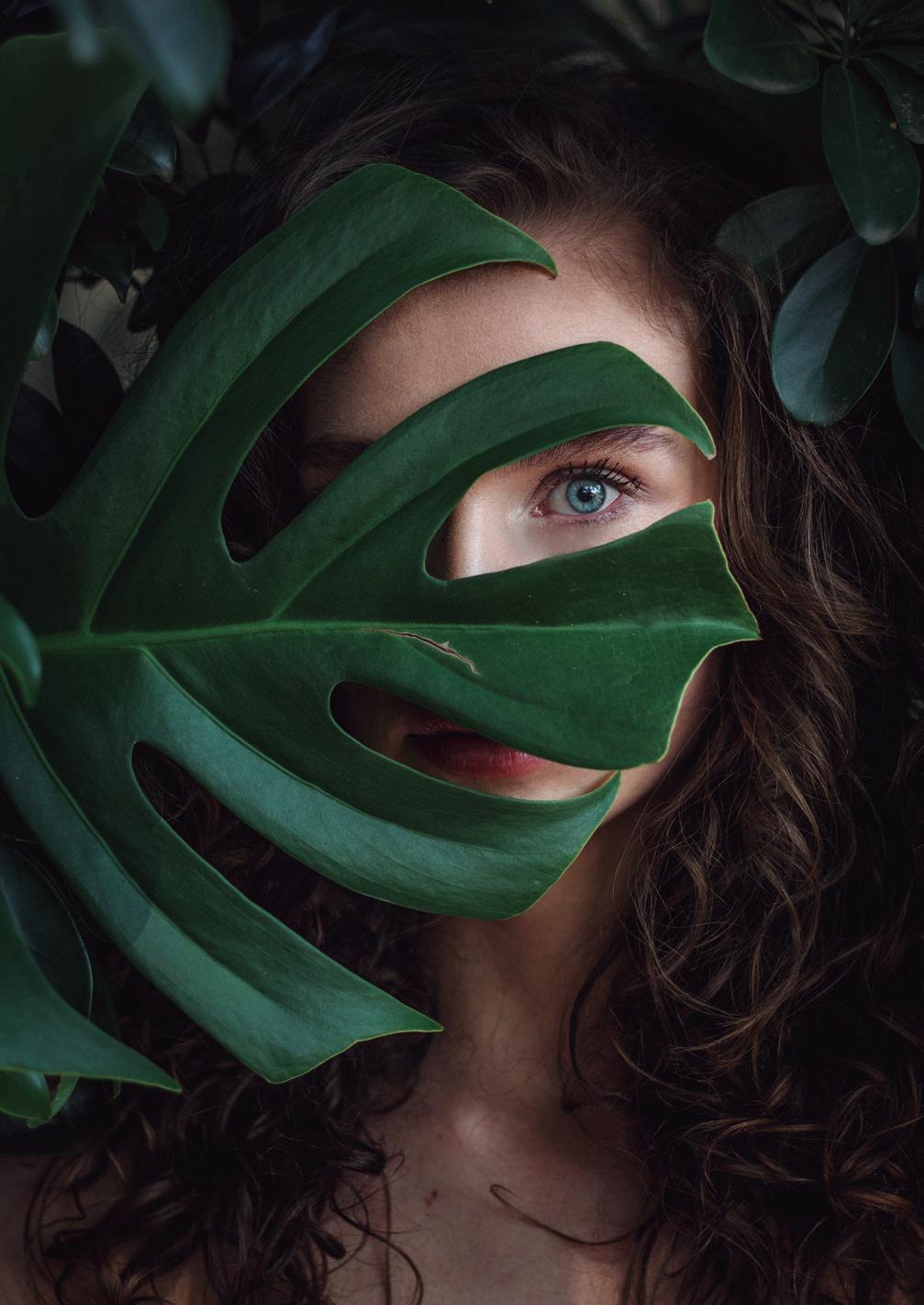
PEXELS.COM
PHOTOGRAPHY:
OTWO 08 / MARCH 2020 OTWO 08 / MARCH 2020 18

Soap nuts
We are so pleased to be able to offer a chemical-free, vegan and plastic-free range of laundry products. Living Naturally Soapnuts are a 100% natural and organic detergent that grows on trees in India.
Soapnuts are effective and gentle at the same time. They will leave your laundry fresh and clean and compared to other powder detergents, its mildness will keep colours bright, maintaining fabric structure of your clothes for longer periods. It can be used on all fabrics and at all temperatures from 30. C - 90. C. Suitable for all washing machines especially energy efficient machines and great for all allergy sufferers. For those who wish to have more frangrance, you can add a few drops of essential oil to the drawer. You can also add a couple of table spoons of bicarbonate of soda for extra softness.
Inside the bag there will be a mixed of whole and broken shells. This does not affect the efficacy of the soapnuts. There also may be variation of colours due to the time the soapnuts were harvested, which also doesn’t affect their efficacy.
Within this beautiful range of products we can also offer natural stain remover sticks. They work on grass, red wine, ketchup, blood, grease, underarm stains, and so much more. Even the most stubborn stains are washed away. The Natural Stain Remover is made with all-natural, biodegradable ingredients. There are no artificial dyes or perfumes, just the fresh, clean scent of natural eucalyptus and the deodorizing power of litsea. Will not discolour clothes or fabrics.
Order online to go one step further for an eco-friendly kitchen: www.ecopassion.es
Nueces de jabón
Nos place sobremanera poder ofrecer una selección de artículos de lavandería de tipo vegano, sin materiales plásticos ni sustancias químicas. We are so pleased to be able to offer a chemical-free, vegan and plastic-free range of laundry products. Living Naturally Soapnuts es una línea de detergentes 100% natural y orgánica elaborada con nueces de jabón que crecen en árboles de India.
Las nueces de jabón son eficaces y de textura suave. Dejan la colada fresca y limpia en comparación con otros detergentes en polvo. Su suavidad conserva el tono vivo de los colores y preserva los tejidos durante más tiempo. Pueden ser utilizadas con cualquier material textil a cualquier temperatura de lavado entre los 30 y los 90 grados. Cualquier lavadora acepta su uso, en particular los modelos con ahorro de energía, y son perfectas para las personas alérgicas. De querer algo más de aroma, existe la posibilidad de añadir unas gotas de aceite al cajón de la lavadora. Y un par de cucharadas de bicarbonato proporcionarán suavidad extra a nuestra colada. La bolsa de detergente contiene una mezcla de cascaras enteras y partidas. El color de las mismas varía en función de cuándo han sido cosechadas, algo que no tiene incidencia alguna en cuanto a la eficacia del producto. Esta maravillosa línea de detergentes incluye también bastoncillos limpiadores naturales. Pueden aplicarse sobre manchas de hierba, vino tinto, kétchup, sangre, grasa o manchas axilares. Limpian hasta las manchas más profundas. Este producto se elabora a partir de ingredientes totalmente naturales y biodegradables. No contiene tintas o aromas artificiales, sólo la fragancia natural del eucalipto y el poder desodorante de la litsea. No decolora.
Haga su pedido online y avance así un paso más en la consecución de una cocina ecológica. www.ecopassion.es

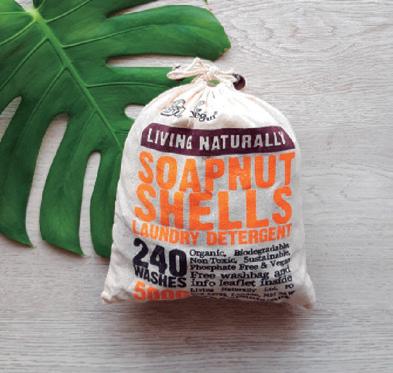
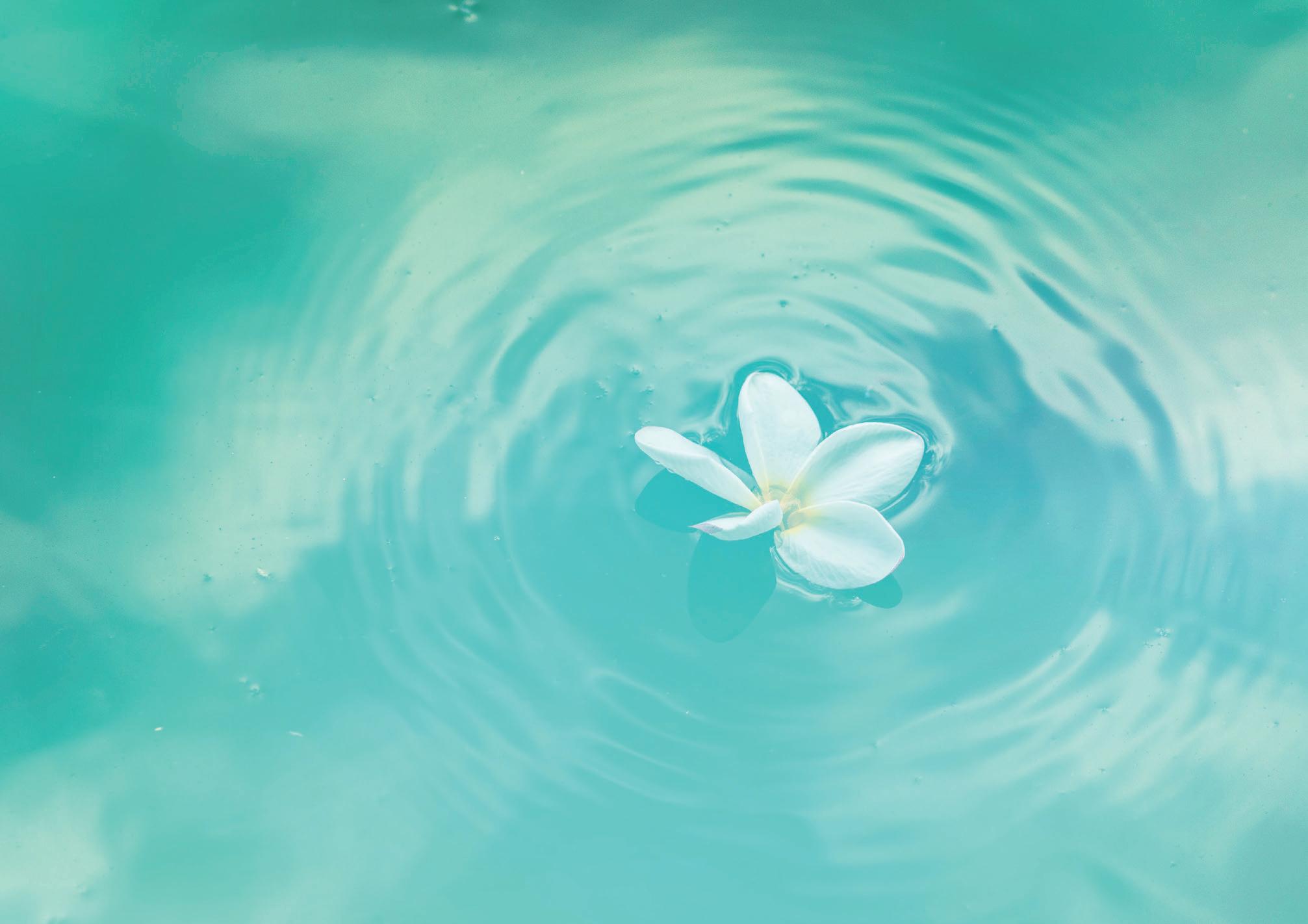


20 21
OTWO 08 / MARCH 2020
OTWO 08 / MARCH 2020

THE IMPORTANCE OF PRESERVING OUR HERITAGE
Ian Balestrino Chairman, Gibraltar Heritage Trust
What is our heritage and why should we preserve it? This question has been put to me on many occasions, both directly and indirectly. “Our Heritage” is our inheritance - what the past has conceded to us, what we value in the present and what we choose to preserve for future generations. This inheritance comprises the tangible, the natural and the intangible. Historical sites, buildings, monuments, museum artefacts, libraries and archives are tangible assets. Conservation areas, habitats, flora and fauna, geology and landforms, including those in and under water, form part of our natural heritage to which we must place a value. Language, religions, cuisine and family names are examples of our cultural intangible past. Another important aspect is the historic environment resulting from the interaction between people and places through time, including all surviving physical remains of past human activity. All these inherited assets, the associated traditions and memories provide us with a common language and insight to express ourselves in a unique way to the outside world. Our heritage is important because it shapes and affirms our identity and shows others
OTWO 08 / MARCH 2020 23 22 OTWO 08 / MARCH 2020
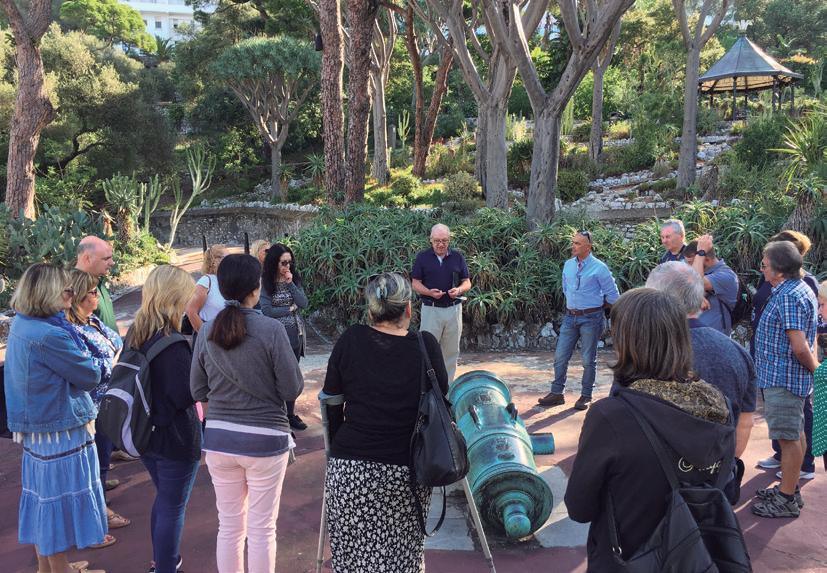
who and what we are. It shows how our society has evolved historically and it develops an awareness about ourselves.
It is important to preserve heritage, tradition and culture in the face of growing globalisation within a culturally diverse society. There is a risk that certain elements of intangible cultural heritage could die out or disappear without help. These can be safeguarded by transmitting and communicating intangible cultural heritage from generation to generation.
All societies are faced with change, sometimes at a seemingly breakneck speed. We can all play an important role in constructing a sense of meaning of the past and how it is related to the present and passed on to the next generation. We have to share our cultural knowledge collectively by bringing people together and by empowering society to take action to conserve their heritage.
Here in Gibraltar the Heritage & Antiquities Act 2018 provides detailed guidance on sustaining Gibraltar’s historic environment within the framework of established government policy. It also provides a structure within which other current Gibraltar
heritage policy and guidance should be applied. The Gibraltar Heritage Trust is a non-governmental organisation whose main aim and objective is the protection and conservation of our heritage. The core functions of the Trust are:
- To push for heritage conservation and revitalisation projects that demonstrate the ways built heritage can benefit Gibraltar;
- Fostering public awareness of heritage through education and public programmes such as exhibitions, lectures, tours etc. These activities are aimed at families, school children, as well as the public at large;
- Promoting the research into and publications on our heritage and on the history of Gibraltar including its social, cultural, economic and political evolution;
- Advising Government, developers and architects at an early stage on any planning or other proposals affecting any building, structure, site or land;
- Participation in forums, committees and other bodies dealing with conservation and heritage;
- As a focal point of contact on heritage conservation matters both locally and overseas, and
- Liaising with other heritage trusts and interna-

tional organisations to promote learning and exchange of experience.
Another important function of the Trust is monitoring the rapid pace of development in Gibraltar. Our involvement in the Development and Planning Commission enables us to have an input on any concerns that may arise whenever planning and building permission is being sought and which may have heritage related issues. Each application is analysed to assess its historical, evidential, aesthetic and communal values and our findings communicated to the Town Planner. The Trust defines conservation as the process of managing change to a significant place in its setting in ways that will best sustain its heritage values, while recognising opportunities to reveal or reinforce those values for present and future generations.
The Trust is not against new building developments taking place. We appreciate and agree that there is a growing demand for modern housing and office space. It is our view that this demand should not be detrimental to our historic fabric and existing vernacular buildings. New development should run
hand in hand with a concerted effort to renovate existing buildings and houses in the Upper Town. This urban renewal would greatly enhance an area of our city and generate a new sense of belonging. It would create new residential and commercial opportunities and at the same time add a new lease of life to a large number of buildings that have been in an abandoned state for far too long. It is encouraging to see that some initiatives in the Upper Town have already enhanced the area. One fine example is “The Arches”, the successful renovation of the old Police Barracks into quality residences. Maybe some form of financial or tax incentives from government would help in encouraging the drive to regenerate our Upper Town.
Our heritage belongs to all of us not just to governmental bodies, non-governmental organisations or individuals. As custodians of our unique past it is the duty and responsibility of all of us to ensure that it is kept alive so that it can be experienced by generations to come.
“Once our heritage is lost it is lost forever”.
OTWO 08 / MARCH 2020 25 24 OTWO 08 / MARCH 2020

LA IMPORTANCIA DE CONSERVAR NUESTRO PATRIMONIO
En qué consiste nuestro patrimonio y por qué deberíamos conservarlo? En numerosas ocasiones, de forma directa o indirecta, he sido preguntado al respecto. “Nuestro patrimonio” es nuestra herencia, lo que el pasado nos legó y lo que hemos elegido conservar para las generaciones venideras. Tal herencia se compone de lo intangible, lo natural y lo intangible. Los enclaves históricos, edificios, monumentos, los objetos de museo, las bibliotecas y los archivos forman el grupo de los tangibles. Las zonas protegidas, hábitats, flora, fauna, la orografía y las formas geológicas, incluidas las submarinas, forman parte de nuestro patrimonio natural, un aserto que debemos valorar en su justa medida. El idioma, las religiones, la gastronomía y los apellidos constituyen ejemplos de nuestro pasado cultural intangible. El entorno histórico derivado de la interacción entre las personas y los lugares a lo largo de los años con-
forma otro aspecto importante e incluye todos los restos físicos de actividad humana anterior. Todos estos bienes heredados y las tradiciones de que de ellos se derivan nos proporcionan una lengua común y una perspectiva que proyectamos al resto del mundo. Nuestro patrimonio es importante porque configura y afirma nuestra identidad, enseñando a los demás quiénes y qué somos. Muestra cómo ha evolucionado nuestra sociedad a lo largo de la historia y desarrolla una autoconciencia colectiva sobre lo que somos.
En el marco de la creciente globalización, es importante conservar el patrimonio, la tradición y la cultura. Existe el riesgo de que ciertos elementos de nuestro patrimonio cultural intangible desaparezca si no se protege. Y esos elementos pueden ser salvaguardados mediante la transmisión del patrimonio cultural intangible de una generación a la siguiente.
No hay sociedad que no se enfrente al cambio, que a veces sobreviene a velocidad vertiginosa. Todos podemos desempeñar un papel importante en la construcción de un sentimiento de reconocimiento al pasado y cómo éste se relaciona con el presente y pasa de generación a generación. Tenemos que compartir nuestro conocimiento cultural de forma colectiva, creando un sentimiento colectivo y dotando a la sociedad de los medios necesarios para que preserve su patrimonio.
En Gibraltar, la legislación de Patrimonio y Antigüedades de 2018 contiene una guía detallada sobre el sostenimiento del entorno histórico local ajustado al marco de las políticas gubernamentales. Proporciona asimismo una estructura para la aplicación de otras pautas de actuación e información sobre el patrimonio. La Gibraltar Heritage Trust es una fundación no gubernamental cuyo principal objetico consiste en la protección y conservación de nuestro patrimonio. Sus funciones medulares son las siguientes:
- Impulsar proyectos para la conservación y revitalización del patrimonio que demuestran cómo trabajar en esta área puede resultar beneficioso para Gibraltar.
- Fomentar la concienciación ciudadana respecto al patrimonio a través de iniciativas educativas y públicas como exposiciones, conferencias o itinerarios guiados. Estas actividades están dirigidas a familias, escolares y la ciudadanía en general.
- Promover la investigación y el lanzamiento de publicaciones sobre nuestro patrimonio y la historia de Gibraltar, hacienda hincapié en su evolución social, cultural, económica y política.
- Asesorar al gobierno, las promotoras inmobiliarias y los arquitectos en las fases preliminares de los proyectos urbanísticos, tanto en lo concerniente a los edificios como a las estructuras, parcelas o enclaves.
- Participación en foros, comités y otros organismos dedicados a la conservación y el patrimonio.
- Como punto de encuentro para asuntos del patrimonio tanto a nivel local como internacional, y ...
- Cooperación con otras fundaciones del patrimonio y organizaciones internacionales para promover el aprendizaje y el intercambio de experiencias.
Otro rol relevante de la fundación consiste en su-
pervisor el rápido desarrollo urbanístico de Gibraltar. Nuestra implicación en la comisión de planificación urbanística nos dota de voz y opinión en cualquier concesión de licencia y permiso urbanístico que pueda afectar al patrimonio. Cada solicitud es analizada en profundidad para evaluar su impacto histórico, estético y comunitario. Una vez realizado, nuestro veredicto es enviado a la delegación de Urbanismo. Según la fundación, la conservación consiste en el proceso de gestionar el cambio a realizar en un determinado enclave de cada a que sostenga los valores del patrimonio. Asimismo, se trata también de identificar cualquier oportunidad que contribuya a reforzar esos valores tanto para la generación presente como para las venideras.
La fundación no se opone a la materialización de nuevas urbanizaciones. Reconocemos y aceptamos que existe una demanda creciente de vivienda nueva así como de locales comerciales. Nuestra idea es que dicha demanda no debería resultar nociva para nuestro tejido urbanístico histórico ni nuestros edificios vernaculares. Las nuevas construcciones deberían realizarse en arreglo al objetivo de renovar el parque de viviendas existentes en la zona alta del Peñón. Esta renovación urbanística supondría un impulse muy significativo para esta zona de la ciudad y reforzaría a su vez el sentimiento de identidad. Daría lugar a nuevas oportunidades residenciales y urbanísticas y prolongaría la vida de una serie de edificios que han estado en situación de abandono durante demasiado tiempo. Resulta esperanzador y estimulante que algunas iniciativas de este tipo ya se hayan materializado en la zona alta. La urbanización “The Arches”, consistente en la reforma de los viejos barrancones de policía, constituye un ejemplo visible de semejante empresa. Puede que la introducción de incentivos financieros o fiscales por parte del gobierno contribuya a impulsar más la regeneración de la parte alta. El patrimonio es cosa de todos, no sólo de las administraciones, ONGs o los individuos. Como custodies de nuestro pasado exclusive, nos concierne a todos la responsabilidad y el deber de garantizar que se mantenga con vida y pueda ser disfrutado por las generaciones que nos sucedan.
“Una vez que se pierde, nuestro patrimonio se pierde para siempre”.
OTWO 08 / MARCH 2020 27 26 OTWO 08 / MARCH 2020


By investing in the Trust you are Investing in Gibraltar’s past, its present and its future
When you take out an annual membership, you support Gibraltar and the work that the Trust does to protect and enhance it however, your membership also entitles you to:
• Access to the Trust’s monthly programme of events, including trips and organized excursions.
• Access, by appointment, to the Trust’s reference library of books related to Gibraltar and its past (The Trust is accepting donations of books on Gibraltar to add to this resource).
• Free entry to the Gibraltar Museum.
• Free entry to the Upper Rock Nature Reserve, St Michael’s Cave, Great Siege Tunnels, Military Heritage Centre, Tower of Homage, Ape’s Den, Windsor Suspension Bridge and WWII Tunnels.
HAZTE MIEMBRO HOY
Si colabora por el Patrimonio, usted está invirtiendo en el pasado de Gibraltar, su presente y su futuro.
Siendo miembro durante un año, apoya a Gibraltar y el trabajo que Patrimonio hace para protegerlo y mejorarlo. Además, también le da derecho a:
• Acceso al programa mensual de eventos, incluidos viajes y excursiones organizadas.
• Acceder, con cita previa, a la biblioteca para consultar los libros relacionados con Gibraltar y su pasado (nuestro fondo bibliográfico crece día a día gracias a las donaciones que recibimos).
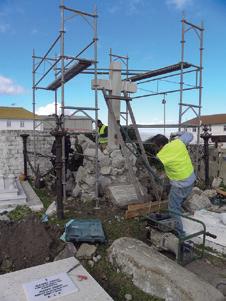
• Annual Report, our regular e-newsletter direct to your inbox, updates and information on what’s happening on the Gibraltar heritage scene.
• Free Cable Car Travel from 1st September 2019 to 31st March, 2020 (not to be used before 4pm until 1st November 2019).
• Discounts at the Gibraltar Heritage Trust Shop on our own publications.
• 10% Discount when purchasing 500g of coffee beans from Sacarello’s Coffee Shop
Visit our Website www.gibraltarheritagetrust. org.gi and click on the JOIN US button.
• Entrada gratuita al Museo de Gibraltar.
• Entrada gratuita a la Reserva Natural de Upper Rock, a la Cueva de San Miguel, a los túneles del Gran Asedio, al Centro del Patrimonio Militar, a la Torre del Homenaje, a la Guarida de los Monos, al Puente Colgante de Windsor y a los Túneles de la Segunda Guerra Mundial.
• También recibirá el Informe Anual y nuestro boletín electrónico enviado regularmente por correo electrónico, actualizaciones e información sobre lo que está sucediendo en la escena del patrimonio de Gibraltar.
• Viaje gratuito en el teleférico desde el 1 de septiembre de 2019 hasta el 31 de marzo de 2020 (no se utilizará antes de las 4 de la tarde hasta el 1 de noviembre de 2019).
• Descuentos de nuestras publicaciones en la tienda Gibraltar Heritage.
• 10% de descuento en la compra de 500 g de granos de café en la cafetería de Sacarello´s Coffee Shop.
Visite nuestro sitio web: www.gibraltarheritagetrust.org.gi y haga clic en el botón JOIN US.
29
OTWO 08 / MARCH 2020
Gibraltar 2019
NatWest International Island Games XVIII
Written by Sarah Birch.
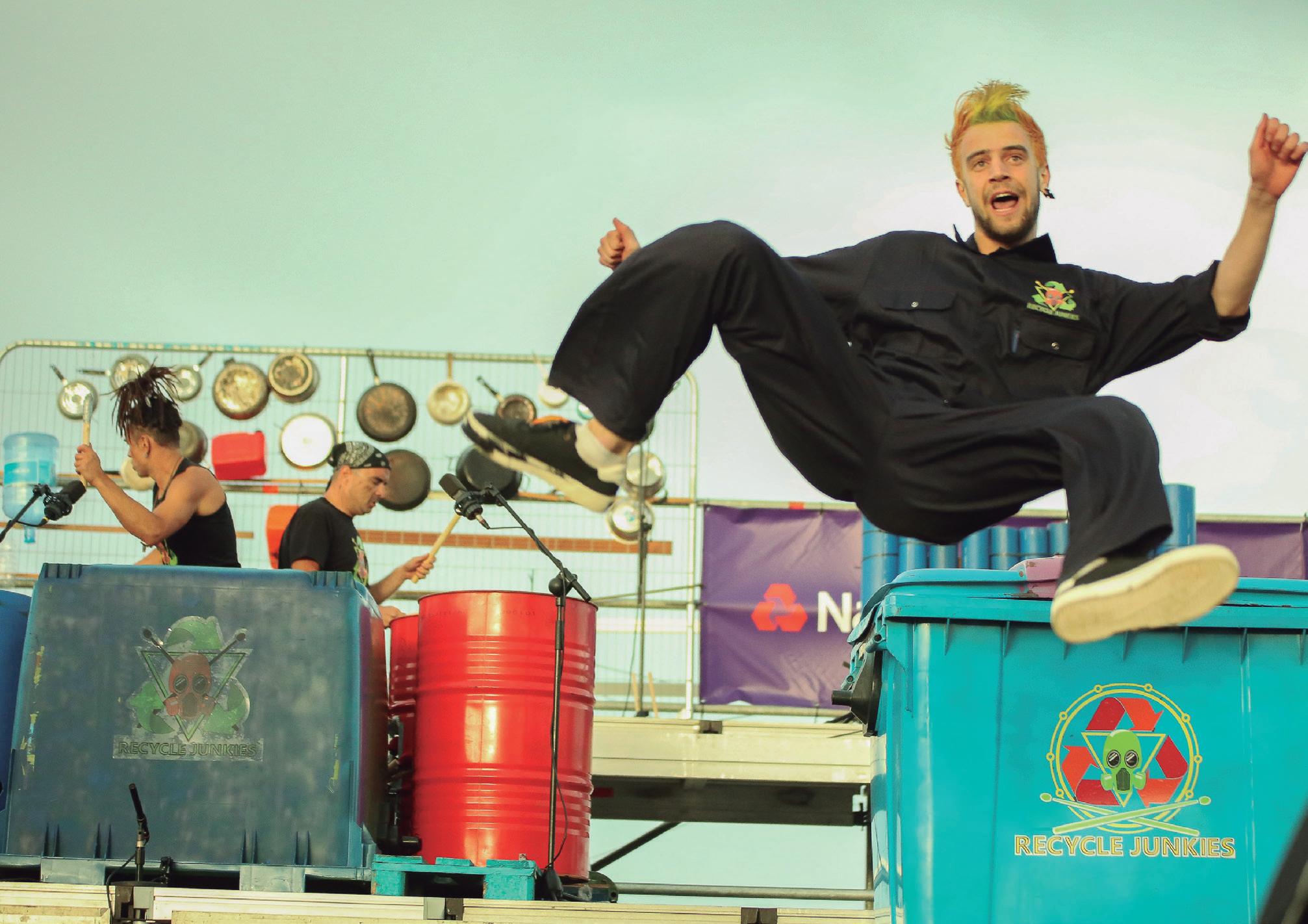
OTWO 08 / MARCH 2020 31
Photos: David Rodríguez, David Parody, John Piris,
Every year, hundreds of millions of people around the world cheer on their football team in packed stadiums, see their favourite artist live surrounded by other excited fans, or spend several days at a music festival dancing and enjoying a wide range of entertainment. Whether its sports or music, events like these offer people the chance to socialise, get away from the daily grind and have fun.
There is a major economic draw for holding large events, however, the impact they have on our planet should not be overlooked. In the UK, around 75 million people attend sporting events each year and 30 million go to gigs and festivals. In Spain, 22 million attend music events annually.
The environmental effects of these large-scale events are multiple, with waste being one of the most evident. UK music festivals alone generate around 23,500 tonnes of waste every year – 68% of which ends up in landfill. Emissions from transportation to and from an event is another major factor and is often not considered by those attending. The events onsite carbon footprint can also be hefty, with considerable amounts of fuel used to power everything from onsite facilities, staging and lighting as well as transportation and set up of infrastructure.
Noise, chemical pollution, sewerage, traffic congestion, spikes in poor air quality and environmental degradation (where events are held outdoors) also contribute to their negative environmental impact.
Thankfully, mounting awareness and a responsibility for sustainability, both by individuals and businesses, are now playing a major part in how those attending can limit their carbon footprint and how organisers plan and hold large events.
Last year, Gibraltar hosted the XVIII Island Games. 22 islands and a total of 2500 athletes and officials travelled from around the globe to take part, with organisers pledging to make these games the greenest yet.
OTWO met with Games Director, Kim Chang, one of the many people responsible for making sure the games went off without a hitch and that their environmental commitments were upheld and implemented.
With a background as a sports manager, his first major event was the Sydney 2000 Olympics. Kim
recalls how it was probably the first Olympic Games that started looking at greener alternatives and initiating sustainability agendas, since then every Olympic Games has tried to improve and consider its legacy.
Fastforward to Tokyo 2020, and sustainability is playing a huge part in the planning and infrastructure of the games. Unlike two decades ago, any country applying to host the games must include green agendas and policies in their bid documents to be seriously considered.
The primary focus and ethos of last year’s Island Games also centred around sustainability. The games slogan was “Clean Seas, Our Future” and the chosen mascot was a dolphin named Hope – representing the abundant cetacean wildlife found right here in the Straits. The games sustainability pledge covered everything from transport, procurement, catering and waste reduction, with an aim of finding greener alternatives for the athletes and officials throughout the event.
Each team is usually given a welcome bag upon arrival, containing a water bottle and other useful items. With 2500 of these bags due to be handed out, they opted to swap the traditional nylon drawstring bag to a cotton one and to include bottles made of aluminium rather than plastic.
Rather than handing out ‘bang bang’ sticks (inflatable plastic sticks used to create a clapping noise when hit together) to the crowd, they gave out recyclable cardboard concertina fans that make a similar noise.
One of the local sponsors – AquaGib, invested in 12 portable water refill stations which were placed in and around the sporting venues. They were later used at the Gibraltar Music Festival and two of them can now be found in town for public use.
Across the rest of the event all programmes were printed on recycled paper, the clay cartridges used for Clay Target shooting were 100% biodegradable, fully recyclable ‘Just Water’ tetra paks with plant-based lids were used during long distance events, catering and food service items had to be non-plastic and where possible local suppliers were used.
Transport was also tackled in an attempt to reduce emissions. Ordinarily each team is given a car
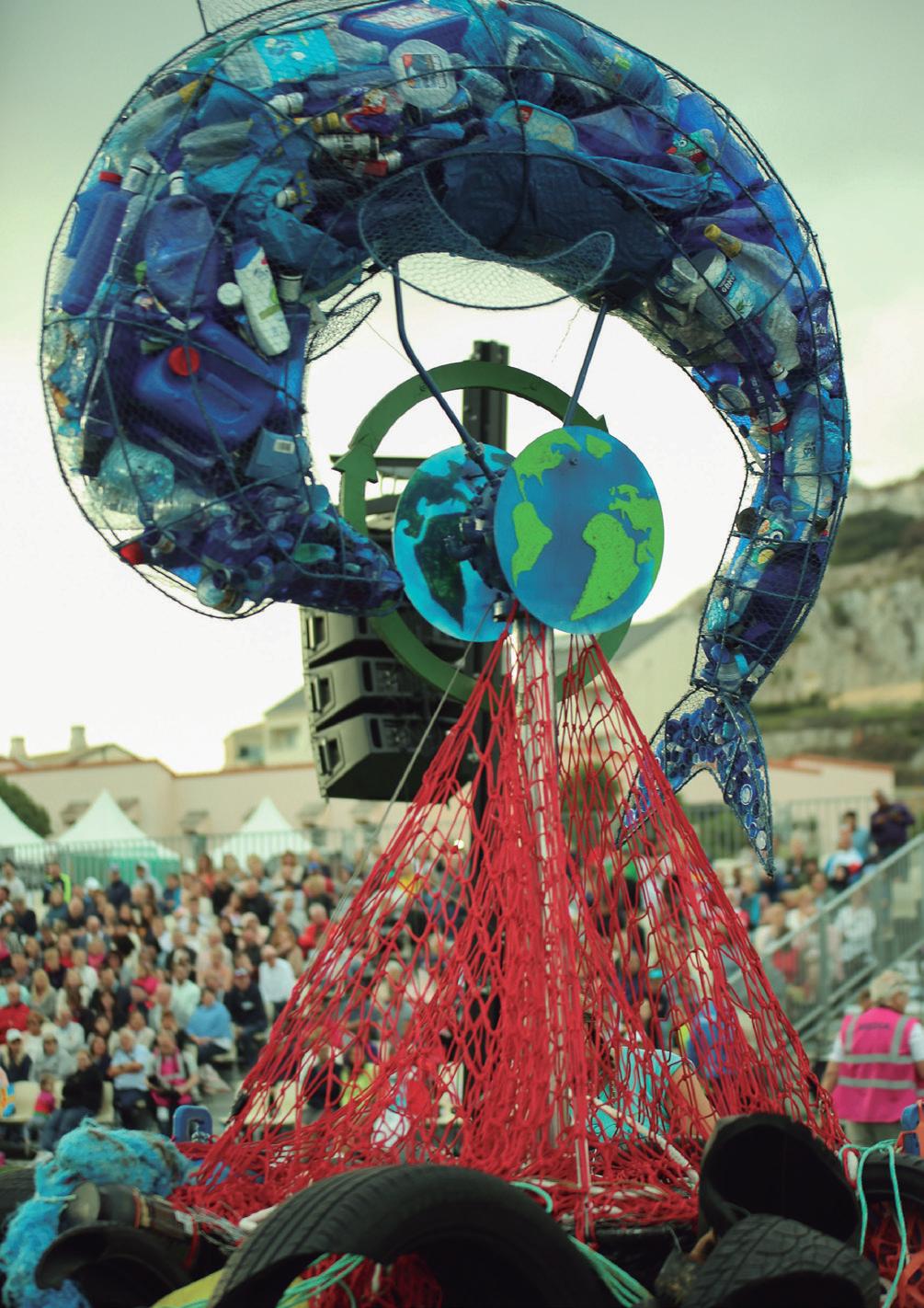
32 OTWO 08 / MARCH 2020 OTWO 08 / MARCH 2020 33

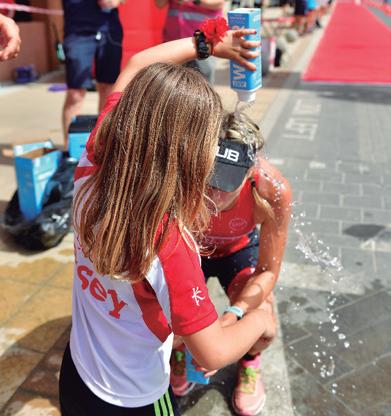
for the week, but in Gibraltar a fleet of cars were used as a shuttle service to pick up athletes and drop them off at different locations, thereby reducing the number of vehicles and individual journeys made throughout the games.
Kim hopes that the legacy of the games will influence future events here in Gibraltar but also the upcoming Island Games in 2021 and 2023, “The XVIII International Island Games will hopefully be a catalyst for future games to make sustainability part of their initiatives. Everything we have done here in Gibraltar will be handed over to the next games, so that organisers there can implement similar schemes.” He also went on to proudly say how everyone involved welcomed the changes - “Everyone really embraced the sustainability of the games! Each [Island Games] wants to be better than the last, so hopefully this will be the benchmark for future games due to be held in Guernsey and then Orkney”.
Around the world, green policies are now a prominent aspect of securing and organising large events, so here are a few others setting a new standard for sustainability.
2020 Olympic Games
From the 1990s, each Olympic Games have drawn in numbers of 6-8 million people. This year, the host city is Tokyo, and organisers have made reducing their carbon footprint and increasing sustainability a top priority. Historically, many large-scale events have mainly used carbon offsetting as a way to neutralise their fuel consumption, and although Japan will also utilise carbon offsetting to reduce their impact, they are also aiming to only use electricity derived from 100% renewables across the games. Solar

panel farms have been installed across Japan to provide power to all venues and seven of the venues in Tokyo have renewable energy systems installed. In terms of reducing waste and single use plastics, the Tokyo organising committee has set a goal of using 65% reusable materials. This will not only include cups, cutlery and plates but will extend to everything from name tags to anti-doping kits. Food waste will be tackled by using proper portion control and supply management. Recycling will also play a big part – team Japan athletes will wear uniforms designed by Asics made from recycled materials and even the Olympic medals will be forged from recycled metals.
Music Festivals
Glastonbury festival in the UK made headlines last year for banning single use plastics for the first time, but there are several other music festivals across Europe setting the standard and making great leaps towards making their events completely green.
Dance music festival DGTL in the Netherland is aiming to become the first circular festival in the world. Their manifesto has placed sustainability at its core, focusing on reusable items, meat free menus and a smart energy plan.
Terraforma in Italy have taken things to the next level. Sustainability is central to their ethos in all aspects of planning and clean up. Aside from their unique musical line-ups, a broad range of eco workshops and lectures are available for festival goers, architects are brought in to build everything on site from sustainable materials and attendees also help to restore the area when the weekend is over.
OTWO 08 / MARCH 2020 35

OTWO 08 / MARCH 2020 37
EVENTO SOSTENIBLE
Cada año, cientos de millones de personas animan a sus equipos de fútbol en estadios abarrotados, disfrutan de sus artistas favoritos en directo o pasan varios días en diversos festivales bailando y divirtiéndose a lo grande. Con independencia de que se trate de un evento deportivo o musical, este tipo de acontecimientos nos brinda la oportunidad de socializar, escapar de la rutina diaria y divertirnos.
Existe una poderosa razón económica para organizar eventos de gran magnitud, sin embargo, conlleva un impacto sobre el planeta que no debería ser obviada.
Sólo en el Reino Unido, unos 75 millones de personas acuden a espectáculos deportivos en tanto que 30 millones asisten a conciertos o festivales. En España, se venden 22 millones de entradas al año para eventos musicales.
El impacto medioambiental de estos espectáculos de grandes dimensiones es notable, con los residuos constituyendo uno de los más evidentes. Los festivales británicos generan unas 23.500 toneladas cada año –un 68% de las cuales acaba en vertederos. Las emisiones derivadas del transporte de uno a otro evento constituyen asimismo otro factor relevante que no suele ser tenido en cuenta por los festivaleros. La huella de carbono que dejan tras de sí estos espectáculos pueden ser igualmente nocivos debido a la gran cantidad de combustible para proporcionar la generación de electricidad, luz, transporte y la instalación de los escenarios.
El ruido, la contaminación química, el alcantarillado, los atascos de tráfico, las partículas de aire contaminado y la degradación medioambiental producida en los eventos al aire libre también contribuyen a este impacto negativo sobre el entorno.
Por suerte, la concienciación y responsabilidad general en pro de la sostenibilidad vienen cuajando cada vez más entre los asistentes y ello se manifiesta en la reducción de su huella de carbono y en cómo los promotores organizan los grandes eventos de este tipo. Gibraltar alojó el año pasado la edición número 23 de los Island Games. Veintitrés islas y un total de 2500 atletas viajaron desde diferentes partes del planeta para participar, y la organización subrayó el objetivo de convertirlos en los juegos más ecológicos hasta la fecha.
OTWO se entrevistó con el director de los juegos, , Kim Chang, una de las muchas personas encargadas de que los juegos se desarrollaran sin mácula y de que cada uno de los objetivos medioambientales se cumpliera con éxito. Con experiencia como gestor deportivo a sus espaldas, su primer gran evento deportivo fueron los juegos olímpicos de Sidney. Kim destaca que éstos fueron probablemente los primeros juegos en los que se hizo hincapié en la conveniencia de utilizar alternativas ecológicas así como en emprender agendas sostenibles, un empeño que ha crecido exponencialmente a medida que se celebraban las olimpiadas subsiguientes.
En la antesala de Tokio 2020 la sostenibilidad juega un papel fundamental en los procesos de planificación y creación de infraestructuras. A diferencia de hace dos décadas, todo aquel país que aspire a organizar las olimpiadas debe incluir políticas medioambientales en su candidatura. . Unlike two decades ago, any country applying to host the games must include green agendas and policies in their bid documents to be seriously considered. La idea medular de los Island Games celebrados el año pasado también se centró en la sostenibilidad.
El eslogan de los juegos fue “Nuestro futuro, mares limpios” y las mascota elegida fue un delfín llamado Hope (esperanza) que representaba la abundancia de cetáceos existente en el estrecho. El compromiso por la sostenibilidad abarcó aspectos como el transporte, los alimentos, la reducción de residuos y el objetivo común de hallar alternativas más ecológicas para atletas y organizadores según discurría el evento. A cada equipo se le suele dar una bolsa de bienvenida a su llegada y ésta contiene una botella de agua y otros objetos útiles. Habiendo un total de 2500 bolsas que entregar, la organización decidió cambiar la tradicional bolsa de nylon por una de algodón así como incluir botellas de aluminio en lugar de plástico.
En cuanto al público, en vez de recibir los palos inflables habitualmente usados para animar a los atletas, fue obsequiado con concertinas de cartón reciclable que hacen un ruido similar.
AquaGib, uno de los patrocinadores locales, invirtió en la adquisición de doce estaciones portátiles de reposición de agua tanto en el interior como los aledaños de las instalaciones deportivas en las que se celebró el evento. Posteriormente serían utilizadas en el Gibraltar Music Festival y ahora están en el casco urbano.
La programación fue impresa en papel reciclado, los platos de las pruebas de tiro fueron de material totalmente biodegradables y durante las carreras de larga distancia los corredores llevaron envases de material vegetal. Asimismo, la cubertería y los platos de los servicios de catering eran de material no plástico y para el abastecimiento se contrató a empresas locales en la media de lo posible.
De cara a reducir las emisiones, se adoptaron medidas en torno al transporte. Siendo lo habitual proporcionar un vehículo a cada equipo para toda la semana, en Gibraltar se usó una flota de vehículos de transporte para la recogida y traslado de los atletas a diferentes ubicaciones, reduciéndose así el número de automóviles utilizados y la cantidad de desplazamientos individuales.
Kim espera que el legado de los juegos influya en la organización tanto de futuros eventos en Gibraltar como en los próximos Island Games de 2021 y 2023, “Esperamos que la edición 23 de los juegos sirva de catalizador para futuras ediciones de cara a consolidar la sostenibilidad como eje de sus iniciativas. Todo lo que hemos llevado a cabo en Gibraltar será trasladado a los próximos juegos para que los organizadores puedan introducir medidas similares”. Manifestó asimismo su orgullo por la implicación de la sociedad en los cambios introducidos.
“Todo el mundo participó del objetivo de la sostenibilidad. Cada anfitrión quiere superar al anterior así que puede que hayamos sentado las bases para los juegos que se desarrollarán en Guernsey y luego en Orkney”.
Las políticas medioambientales se han convertido en un aspecto crucial en la organización de los grandes eventos internacionales. Listamos aquí espectáculos venideros que participarán de dicha empresa común. Juegos olímpicos de 2020
Desde la década de los noventa, las olimpiadas vienen atrayendo la presencia de entre 6 y 8 millones de espectadores. Tokio es la ciudad anfitriona de
este año y la organización se ha fijado como objetivos prioritarios tanto la reducción de la huella de carbono como la consecución de una sostenibilidad incrementada. Históricamente, en los espectáculos de gran magnitud se ha apostado por la compensación en el uso de carbón como forma de neutralizar el consumo de fuel y aunque en Japón se empleará el mismo sistema, existe también el objetivo de emplear electricidad procedente en un 100% de energías renovables. Se han instalado parques de paneles solares por todo el país de cara a suministrar este tipo de energía a todas las sedes. En cuanto a la reducción de los residuos y el uso de plásticos, el comité organizador se ha marcado el objetivo de emplear un 65% de materiales reciclables. Ello incluye vasos, cubertería y platos y se extenderá a otros elementos como las etiquetas de los controles anti dopaje. Las producción de residuos alimentarios será sometida a sistemas de gestión y suministro para controlar las cantidades. El reciclaje también será protagonistas. El equipo olímpico japonés vestirá ropa de la marca Asics fabricada a partir de materiales reciclables y hasta las medallas serán de metales reciclados.
Festivales
El festival de Glastonbury en el Reino Unido acaparó titulares de prensa el año pasado por la decisión de prohibir el uso de plásticos por primera vez en su historia. Ahora existen muchos otros festivales a lo largo y ancho de Europa que compiten por dar el gran salto y lograr el objetivo de celebrar eventos cien por cien ecológicos.
El festival DGTL de música de baile en los Países Bajos pretende convertirse en el primero de tipo circular a nivel global. Su lema coloca la sostenibilidad como objetivo medular, centrando sus objetivos en el uso de artículos reciclables, comida vegetariana y un plan de energía inteligente.
En Italia, Terraforma ha llevado las cosas a un siguiente nivel. La sostenibilidad es el eje de su forma de actuar en todos los aspecto. Al margen de la exclusividad de sus carteles, una amplia gama de talleres y conferencias ecológicos están a la disposición de los asistentes. También han incorporado la colaboración de arquitectos que hacen uso de materiales sostenibles y ayudarán a restaurar la zona una vez que los conciertos hayan finalizado.
OTWO 08 / MARCH 2020 39 38 OTWO 08 / MARCH 2020
Gibraltar 2019. NatWest International. Island Games XVIII
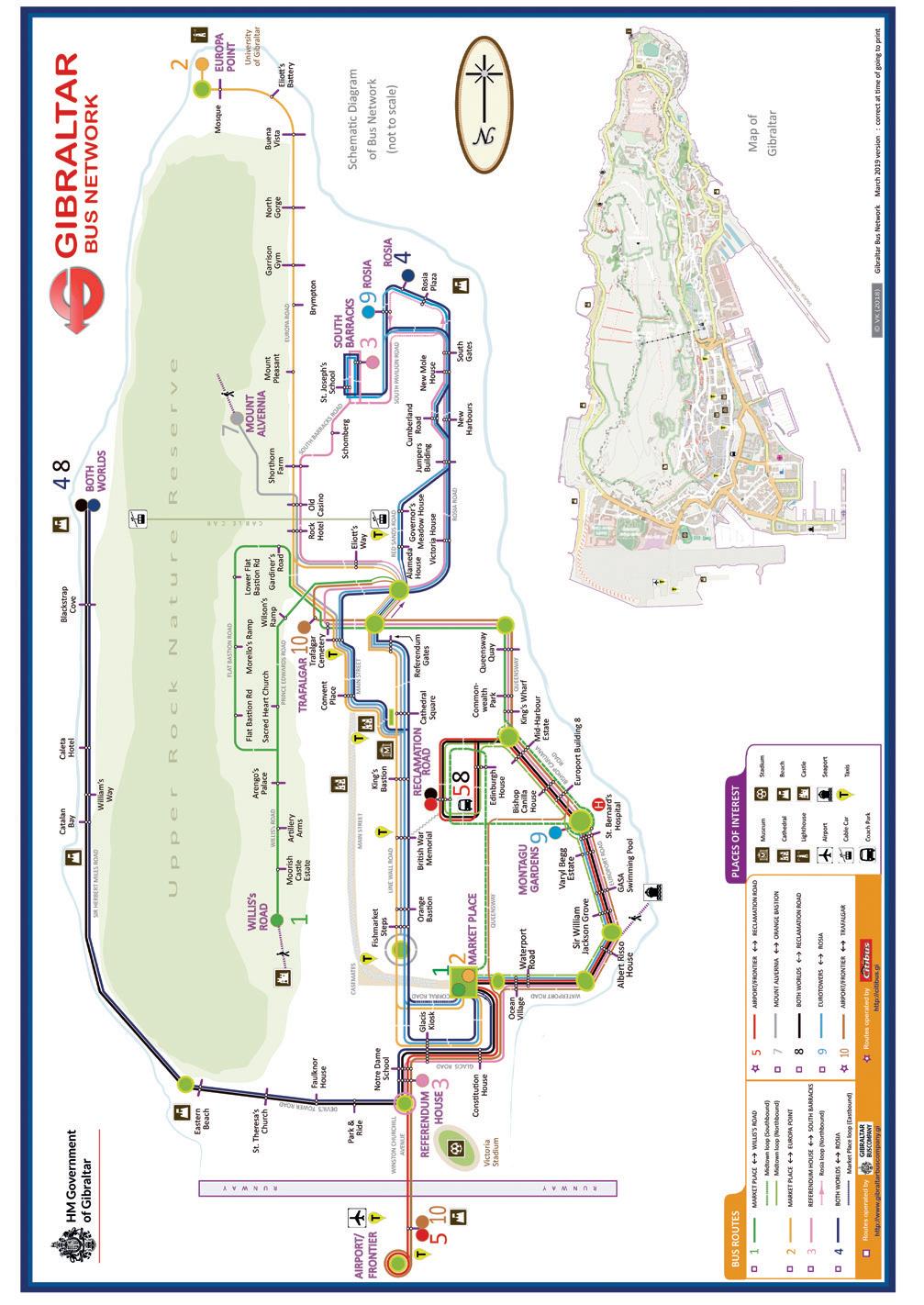


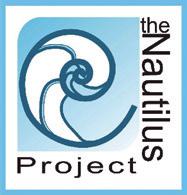
WORLD OCEANS DAY 2020
Gibraltar Sustainable Business Awards
In Collaboration with the Gibraltar Federation of Small Businesses, The Nautilus Project are hosting the 2nd Business Awards for organisations with the greatest number of green initiatives implemented over the past year. The theme is New Decade New Habits with a view of showcasing the different ways in which Gibraltar has reduced its plastic and carbon footprint as a community. Examples may include (but are not limited to):
• Awarded the most TNP certificates since accreditations began.
• Implementation of Energy Saving practices.
• Recycling within the workplace.
• Cutback on single use plastics.
• Reduction in CO2 emissions.
• Sustainability within the workplace.
Power Point presentation entries are to be submitted to info@thenautilusproject.co by no later than Friday 22nd May 2020. Contact Melanie Soiza-Stagnetto for any further information on +350 54002262.
ECO PARK GLASS
Written by Sarah Birch
The third in our recycling series in conjunction with the Eco-Park will look at the journey our glass recycling makes. Fortunately, glass is a highly recyclable material which can be recycled indefinitely without it losing its quality or purity. It can be turned into new glass containers, windows, glass beads for industrial purposes and fibre glass.
Before the 1970s, bottled drinks were already popular but where packaged in glass, steel or aluminium cans, but from 1973, PET plastic (Polyethylene terephthalate) became a lightweight and cheap alternative that revolutionised the packaged drink and food industry. Bottled water was widely marketed as a safer and healthier alternative to tap water and by 2017, a million single-use plastic bottles were sold globally per second. But now, with more awareness of the impact that our plastic dependency has on the environment, companies and retailers are now turning to glass to meet their packaging needs. So where possible, try to choose alternatives like glass instead of plastic, and make sure to reuse and recycle them.
1.- After your glass items are left in the appropriate recycling bins, it is collected 3-4 times a week and transported to the Eco Park.
2.- Once it arrives at the Eco-Park, the glass is unloaded into a large pit.
3.- When the pit is full and there is enough to transport, the glass is loaded into trucks. This usually happens once a month and on average the amount of glass weighs 25 tonnes.
4.- Export permits and an Annex VII (European Document for the Exportation through a border of non-ha-
zardous waste) are applied for at least 24 hours before the materials are due to be transported.
5.- The following day the glass is then transported to the Camacho recycling facility in Malaga for treatment.
6.- Glass items are sorted by colour and type and then washed to remove impurities. The glass is then crushed and melted and finally, moulded into new products.
DO’S
• Make sure glass bottles and containers that have contained food or other liquids are cleaned before throwing them into recycling. If the glass is too contaminated to be cleaned properly at the recycling facility it will be sent to landfill.
• Remove any paper labels, plastic, metal lids or corks from glass bottles or jars
DON’TS
• Throw glass bottles or containers away that are full of drink or food, empty them before putting them into recycling
• Throw ceramics such as plates or tiles in with glass. It will not be recycled and may cause glass mixed with ceramics to be sent to landfill
• Place glass in to bags with other mixed recycling items or put them into the wrong recycling bins. Separating items is extremely important, as any bags with mixed items will not be sorted, ending up in land fill.
• Throw bags with household waste, even if it contains glass, into recycling bins. Not only will it not be recycled, but it can contaminate the rest of the recycling.
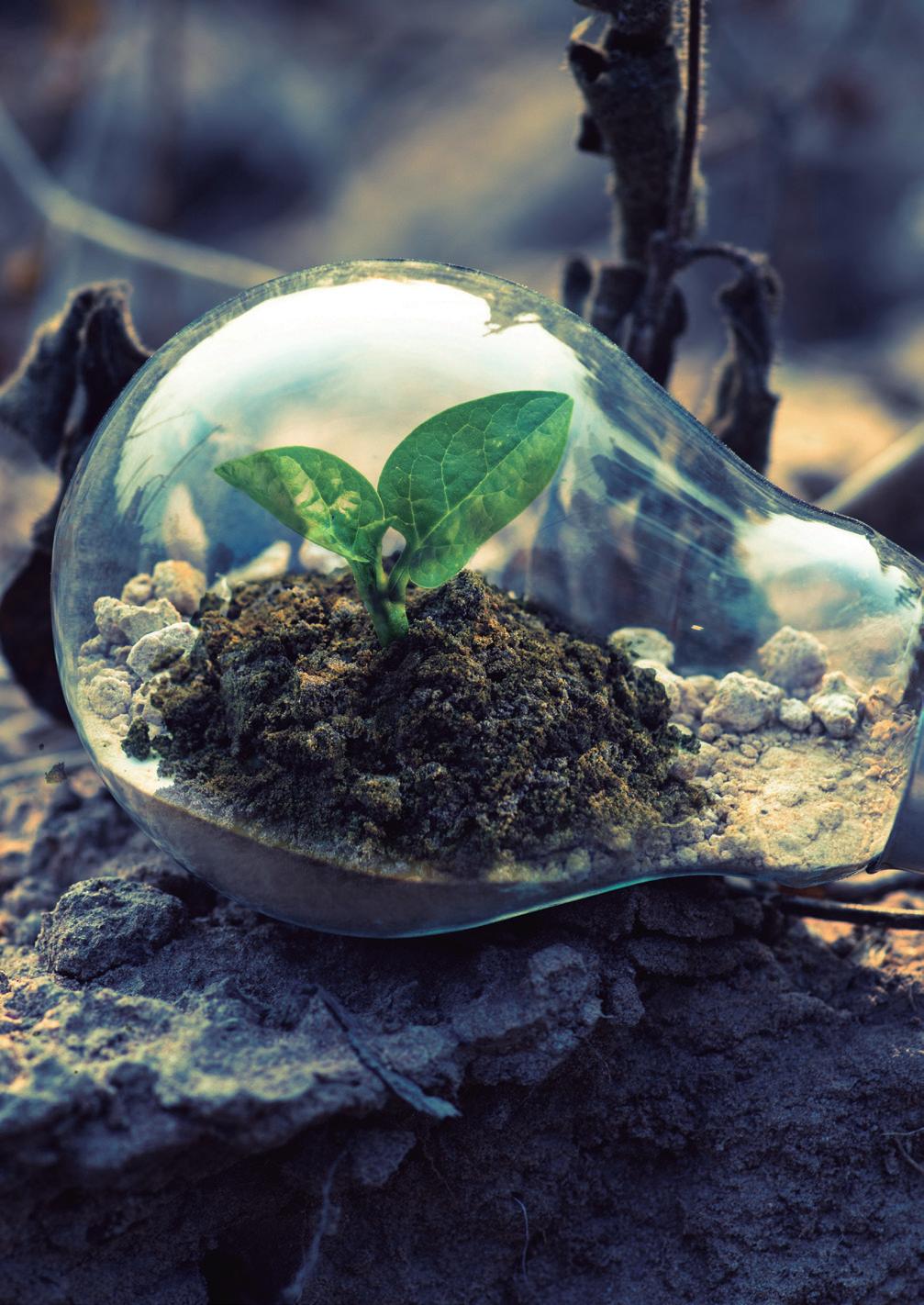
OTWO 08 / MARCH 2020 43 42 OTWO 08 / MARCH 2020

Parque ecológico: reciclaje del vidrio
Nuestro tercer artículo en la serie del reciclaje y EcoPark versa sobre el proceso de reciclaje de vidrio en Gibraltar. Se trata de un material de elevado reciclaje, de duración indefinida sin perder sus propiedades o pureza. Puede ser reconvertido en nuevos envases de cristal, ventanas, cuentas de vidrio para uso comercial así como en fibra de vidrio.
Las bebidas embotelladas ya eran de uso común antes de los años setenta, pero se envasaban en vidrio o en latas de acero o aluminio. Pero desde 1973 el tereftalato de polietileno (PET) viene siendo utilizado por constituir una alternativa ligera y económica que en su día revolucionó el mercado. El agua embotellada se comercializó como una opción más segura y saludable que la de grifo y para 2017 las ventas globales ascendían a un millón de botellas individuales por segundo. No obstante, la mayor concienciación actual sobre el impacto que nuestra plástico-dependencia tiene sobre el medio ambiente ha propiciado que fabricantes y vendedores vuelvan al vidrio. De modo que, cuando sea posible, intentemos elegir alternativas como el vidrio en lugar del plástico y asegurémonos de reusar y reciclarlas.
1.- Tras acabar en los contenedores de reciclaje apropiados, el vidrio se recoge tres o cuatro veces a la semana para ser llevado al Eco Park.
2.- Una vez allí, se deposita en un depósito de grandes dimensiones.
3.- Cuando éste se llena y hay bastante material para transportar, el vidrio se carga en camiones. Esto sucede una vez al mes y la media de vidrio recogido asciende a unas 25 toneladas.
4.- Antes de ser transportada, la carga pasa por el proceso burocrático para su exportación en aplicación del anexo séptimo, correspondiente a residuos
no peligrosos, de la directiva comunitaria. Dicho trámite tiene una duración de 24 horas.
5.- Al día siguiente, el vidrio es llevado a las instalaciones de reciclaje Camacho, en Málaga, para ser tratado.
6.- El vidrio es clasificado allí en función de su color y tipo y luego se lava para eliminar sus impurezas. Finalmente, se comprime y derrite para la fabricación de nuevos productos.
Qué hacer
• Antes de tirarlos, asegúrese de que las botellas y recipientes de vidrio que hayan contenido comida o líquidos estén limpios. De contener demasiados restos, el vidrio no es reciclado y acaba en un vertedero.
• Es preciso quitar cualquier etiqueta, plástico, tapón metálico o de corcho de las botellas y botes de vidrio.
Qué no hacer
• Tirar botellas o recipientes de cristal llenos de líquido o comida. Vacíelos antes de reciclar.
• Tirar objetos de cerámica, por ejemplos platos o losas, junto al cristal. No serán reciclados y la mezcla dará con el cristal también en el vertedero.
• Mezclar en bolsas de basura el vidrio con otros materiales reciclables o depositarlo en el contenedor equivocado. Separar los materiales de forma correcta es una operación crucial dado que cualquier bolsa con reciclables de diferente naturaleza también terminarán en el vertedero. Place glass in to bags with other mixed recycling items or put them into the wrong recycling bins.
• Tirar bolsas de basura doméstica, aun conteniendo vidrio, a contenedores de reciclaje. Aparte de no ser reciclada, contaminará el resto del material depositado en dichos contenedores.
OTWO 08 / MARCH 2020 45 44 OTWO 08 / MARCH 2020

Spelunking in Lower St Michael’s Cave, Gibraltar
Espeleología en la cueva de San Miguel, Gibraltar
Written & Photos by Diexter Thomas
47
When people think of Gibraltar, they often think of the 426-meter limestone promontory and the Barbary Macaques which are the only wild monkey population in Europe. Rarely do they think of the fact that there are 150 caves in Gibraltar and 57 kilometres of tunnels in this small peninsula of 6.7 kilometres in length.
When tourists visit Gibraltar, they often go through main street, up the cable car, in taxi, minibus or take the hike up the Rock or stroll through our beautiful Alameda Gardens. About half way up our Rock you are greeted with St Michael Cabin, a lovely little cafe that has an array of different souvenirs aimed at visiting tourists, and food for a little bite to eat.
St Michael’s Cabin serves as a little pit stop before tourists or locals decide to either go up further to reach the top of the Rock or venture down into the luminous St Michael’s Cave, or do both!
Upper St. Michael’s cave is without a doubt the most visited cave in Gibraltar, having hundreds of thousands of visitors each year. What makes this cave so attractive is the huge stalactite and stalagmite formations formed from millions of years of precipitation from minerals found in water dripping from the ceiling.
The stalagmites and stalactites are lit up by colours to make the formations even more vibrant and interesting. For those who don’t know the difference, Stalagmites rise from the floor, Stalactites fall from the ceiling.
In recent years, the tourist attraction has been made into a venue for a variety of different performances, from dance to beauty contests to comedy shows by the likes of Jimmy Carr for example, and festivals like the Gibraltar World Music Festival.
In WW2, the cave was prepared as an emergency hospital and although it was never used for this purpose, it was decided that in 1942 that there was a need for an alternate entrance to the hospital to increase airflow, and an alternate exit in case of any air strikes. While Royal Engineers were blasting through the rock to make the alternate entrance/exit, they came across a lower section of the cave, Lower St Michael’s, which opened up new exploration opportunities that still captivate people to this day.
Something interesting to note, however, is the fact that Upper St Michael’s Cave is in fact ‘dead’, which means that the cave is not growing, it’s dried out, and is another reason why lights are illuminated on the stalactites and stalagmites. Upper St Michael’s is dead because of the wind caused by the alternate entrance, and also because of the heat that has been generated from the millions of visitors over the years.
Since it was quite chilly on the day I thought it would be a wise choice for me to bring my jumper and jacket. While we were at St Michael’s cabin waiting to meet with our tour guide, Steve Payne from Barbary Rock Adventures, I noticed OTWO’s managing director, Vanessa wearing just a t-shirt and a relatively thin Superdry jumper. I asked her whether she would be warm enough to go in Lower St Michaels as just based on my assumption I thought it might be really cold. We later learned Lower St Michael’s Cave consistently stays between 17 to 19 degrees Celsius in both summer and winter, meaning that wearing too much like a puffer jacket would definitely leave you sweating like taking a little dip in a sauna would.
Six of us were met with Steve and a trainee guide who handed us our safety helmets in the event of falling debris or us accidentally headbutting the unseen thick stalactites in the tricky parts of navigating through the cave (there aren’t many), and torches for dimly lit places.
Steve never failed to make the experience interesting, giving us information on the history of the caves, inviting us to use our imagination to see what we see in the variety of shapes and sizes in the rock formations and frequently joking around, but was always serious about our safety.
Unlike Upper St Michael’s cave where it’s dried up, Lower St Michael’s Cave is still very much alive, full of moisture and constantly growing. The tour took us 3 hours and 5 minutes, from 4:40 to 7:45. Reading that you might be thinking, ‘Oh! The length of the cave must be really long then!’ Nope, the total length of the cave is only 200 metres, though it definitely feels much longer!
Greeting us first was a set of steel steps, though with these steps, Steve asked us to turn around and go down slowly with us facing the steps to
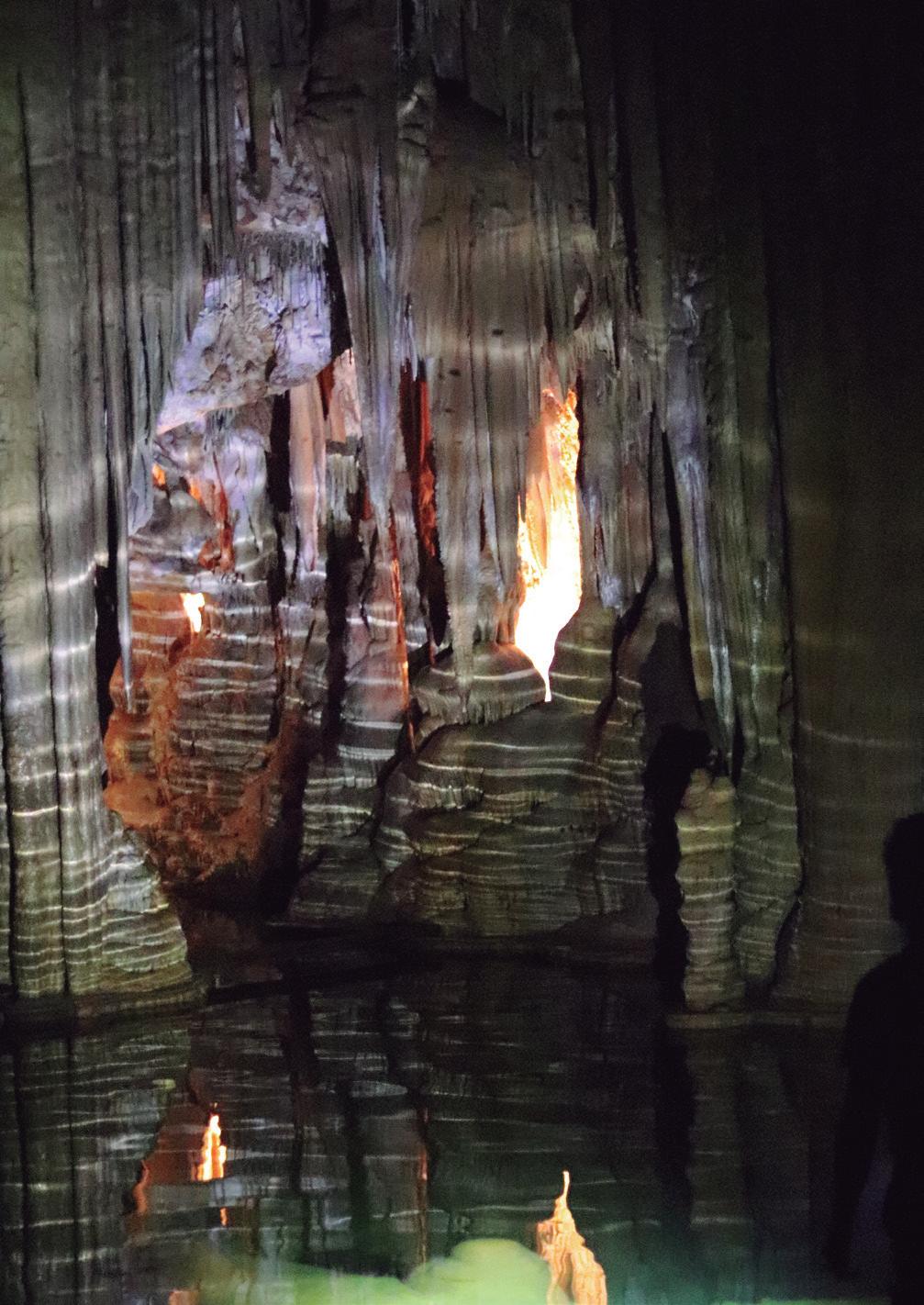
OTWO 08 / MARCH 2020 49 48 OTWO 08 / MARCH 2020
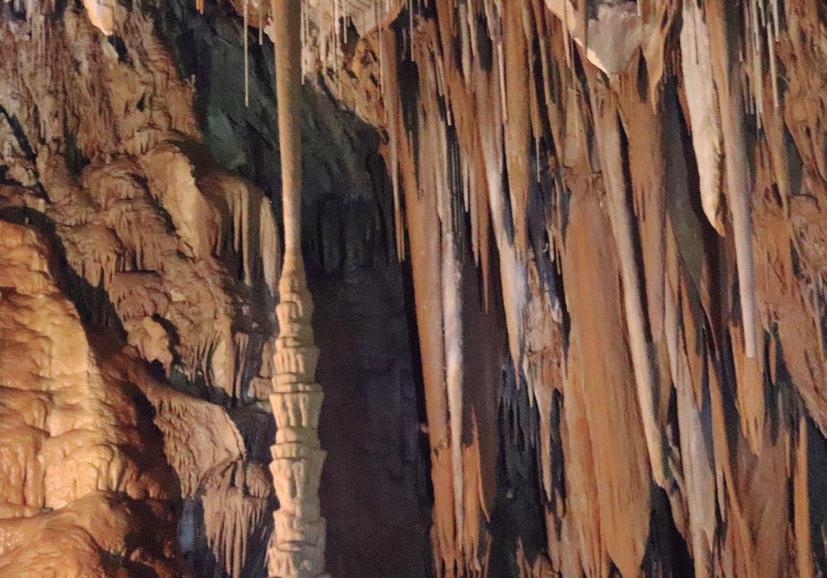
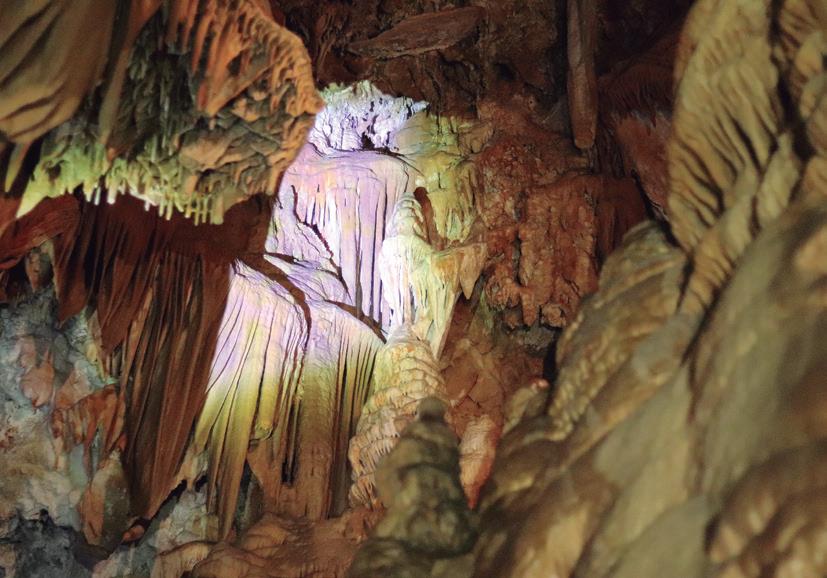
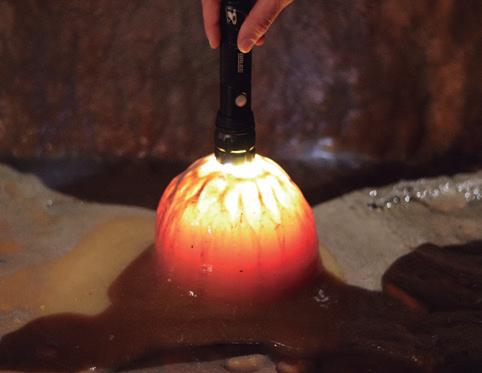


reduce our chances of falling, since it is a slipping hazard. Powering the lights in the whole cave is an electric cable which we were urged not to touch or rely on for support. Lower St Michaels Cave, instead, has a plethora of ropes that makes navigating a safe and smooth experience for when you need them.
Since the cave is still growing, we were urged not to interfere with the water droplets on the stalactites. People in the past have broken off pieces of Stalactites to keep them as souvenirs ‘for mantle pieces’, Steve said, and nowadays this would not be allowed since it is part of the upper rock nature reserve. The cave features almost all types of cave formation which Steve goes into such interesting detail with.
Towards the end of the guided tour, a 37-metre-long lake estimated to contain 200,000 litres of water can be seen. This particular section of the cave wasn’t lit up, but this gave Steve the excellent opportunity to illuminate up the walls, ceiling and stalagmites/stalactites by shining his handy torch into the water, providing us with a beautiful effect unlike any I’ve ever seen before. At this point it is encouraged to leave any valuable equipment behind just in case falls into the water, though I did a rather ballsy thing which was to bring my camera along, causing me to be extra careful when walking the really thin edges. We were urged to put priority on using our hands to navigate through this tricky bit, which can seem daunting, but patience really does pay off.
I have lived in Gibraltar since 2015, I had learned about the existence of Lower St Michael’s Cave in 2017, but I wish I had experienced it sooner, as I would regard it as a real work out and one of the Rock’s most fun things to do: I strongly recommend it to anyone who wants to try out something new.
If you would like to learn more about this guided tour that goes on in Gibraltar on a regular basis, contact _____. The price per person is £25 for non-residents and £15 for Gibraltarian residents. All Participants need to be 10 years or older to join in the fun and any person younger than 16 needs to be accompanied by a parent or guardian.
50 OTWO 08 / MARCH 2020
OTWO 08 / MARCH 2020 51
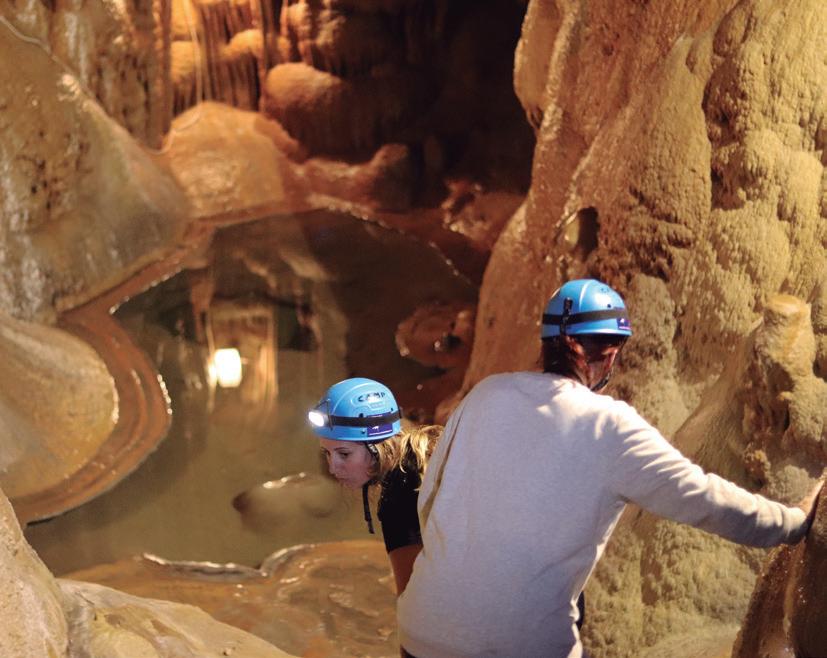
Gibraltar es generalmente asociado al promontorio natural de 423 metros de roca caliza y a los macacos de berbería que componen la única población de monos salvajes de toda Europa. Rara vez se piensa en el hecho de que existen 150 cuevas en así como 57 kilómetros de túneles en una península de apenas 6,7 kilómetros de largo.
Al visitar Gibraltar, los turistas suelen recorrer la calle principal, subir al teleférico, hacer un recorrido en taxi o mini-bus, subir andando a la parte alta o pasear por los bellos jardines de la Alameda. A media subida se encuentra St Michael Cabin, una encantadora cafetería que ofrece una selección de suvenires turísticos así como la posibilidad de comer algo.
St Michael’s Cabin sirve e breve parada donde decidir si seguir subiendo hacia la parte alta, bajar hacia la luminosa cueva de San Miguel o decantarse por ambas opciones.
La cueva de San Miguel es sin duda la más visitada de Gibraltar, acumulando cientos de miles de visitas al año. Sus enormes formaciones de estalactitas y estalagmitas, formadas a lo largo de millones de años con el goteo de agua desde el techo, constituyen su atractivo fundamental.
Las estalagmitas y estalactitas están iluminadas con diferentes colores de cara a conferirles un aspect aún más vibrante e interesante. Para quienes desconozcan la diferencia, la estalagmitas se elevan desde el suelo en tanto que las estalactitas caen del techo.
En años recientes, este lugar de interés turístico ha sido convertido en escenario de diversas actuaciones, desde el baile a los concursos de belleza pasando por espectáculos de comedia con artistas como Jimmy Carr y espectáculos como el Gibraltar World Music Festival.
La cueva fue habilitada como hospital de urgencias durante la segunda Guerra mundial y aunque nunca llegó a ser utilizada a tales efectos, en 1942 se consensuó la necesidad de abrir tanto una entrada alternativa al hospital, para facilitar la entrada de corrientes de aire, como una salida alternativa para evacuaciones ante eventuales ataques aéreos. Durante los trabajos de excavación realizados por el cuerpo de Ingenieros Reales tropezaron con la zona inferior de la cueva, Lower St Michael’s, y ello abrió la posibilidad de realizar nuevas exploraciones y zonas que a día de hoy siguen fascinando a los visitantes.
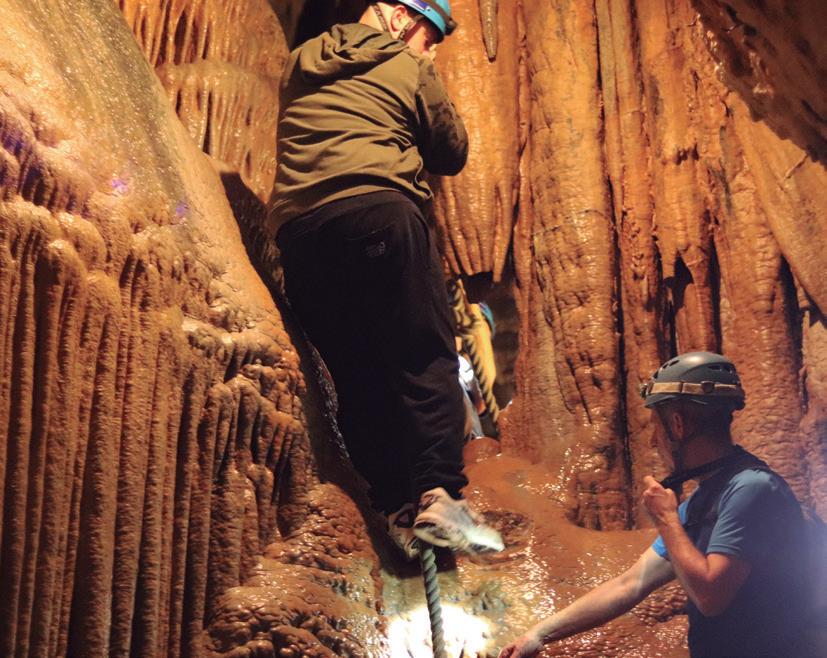
Un dato interesante, sin embargo, reside en el hecho de que la parte alta de la cueva está “muerta”, ello significando que crece más por estar ya seca y un motivo adicional para mantener la iluminación sobre las estalactitas y las estalagmitas. Esta situación se debe al viento entrante por la entrada alternativa así como al calor generado por las millones de visitas anuales.
Al tratarse de una jornada bastante fresca, consideré oportuno abrigarme con un jersey y una chaqueta. De camino a la cueva para encontrarnos con nuestro guía, Steve Payne de Barbary Rock Adventures, advertí que la directora de OTWO, Vanessa, vestía simplemente una camiseta y un jersey relativamente fino. Le pregunté si esa indumentaria bastaría para entrar en la cueva baja de San Miguel, insistiendo en dar por hecho de que se trataría de un recinto muy frío. Luego descubriríamos que la temperatura oscila siempre entre los 17 y los 19 grados celsio, tanto en verano como en invierno, con lo cual ponerse una chaqueta demasiado gruesa garantizaría sudar la gota gorda, como si de una sauna se tratara.
Éramos un equipo de seis miembros. Steve y un
asistente nos facilitaron sendos cascos de seguridad ante el riesgo de que nos cayera encima roca del techo o chocásemos involuntariamente con alguna estalactita traicionera en alguna de las partes más complicadas del recorrido (no son demasiadas). También fuimos equipados con linternas para usar en las partes más oscuras.
Steve consiguió que la experiencia resultase interesante en todo momento, proporcionándonos información acerca de la historia de las cuevas e invitándonos a que usáramos la imaginación para aplicarla a las formas que veíamos en las rocas, su variedad de formas y tamaños. Hubo tiempo para las bromas y nuestra seguridad fue prioritaria en todo momento.
A diferencia de la cueva alta, la parte baja de San Miguel sigue viva, llena de musgo y en permanente crecimiento. El recorrido duró tres horas y cinco minutos, desde las 4:40 hasta las 7:45. A tenor de esa información se podría pensar que se trata de una cueva realmente larga en extensión. Pero en realidad su longitud es de apenas 200 metros, aunque da la sensación de ser mucho más grande.
Al llegar afrontamos una escalera de acero y
OTWO 08 / MARCH 2020 53 52 OTWO 08 / MARCH 2020
Steve nos advirtió sobre la necesidad de bajar con precaución debido a lo resbaladizo de las mismas. Un cable suministra luz eléctrica a la cueva y fuimos alertados sobre la peligrosidad de tocarlo o apoyarnos. Para no perder el equilibrio, la cueva está dotada de una serie de cuerdas para garantizar que los visitantes se muevan con seguridad y tranquilidad haciendo uso de las mismas cuando lo necesiten.
Al estar la cueva en crecimiento, se nos indicó que no interfiriéramos en el goteo que se produce sobre las estalactitas. Steve nos dijo que en el pasado hubo quien arrancó piezas de estalactitas para llevárselas como suvenires y esto no se puede hacer ahora puesto que la roca forma parte de la reserva natural de la parte alta del Peñón. San Miguel tiene casi todos los tipos de formación rocosa propia de las cuevas y Steve ofrece explicaciones sobre las mismas con todo detalle.
Hacia el tramo final del recorrido llegamos a un lago de 37 metros que contiene 200.000 litros de agua. Esta sección de la cueva carecía de luz eléctrica y ello permitió a Steve iluminar los muros, el techo y las estalactitas y estalagmitas apuntando al agua con su linterna, creando con ello un bellísimo efecto, una experiencia.
En esta parte se recomienda no llevar ningún objeto valioso por si se cae al agua, aunque yo cometí el error de no dejar mi cámara y por ello tuve que avanzar de forma extremadamente cuidadosa. Tuvimos que dedicar atención prioritaria al uso de las manos para progresar por esta zona tan complicada, lo cual puede sonar intimidante, pero al final compensa tener paciencia.
Resido en Gibraltar desde 2015 y supe de la existencia de la cueva baja de San Miguel en 2017. Desearía haber experimentado esta experiencia antes dado que la considero una de las actividades más divertidas que se pueden hacer aquí. La recomiendo encarecidamente a todos aquellos que quieran probar algo nuevo.
Si desea más información sobre este recorrido guiado que se desarrolla de forma periódica en Gibraltar, contacte _____. El precio por persona es de 25 libras para no residentes y 15 para residentes. La edad mínima para participar es de diez años y los menores de 16 deben de estar acompañados por un adulto.

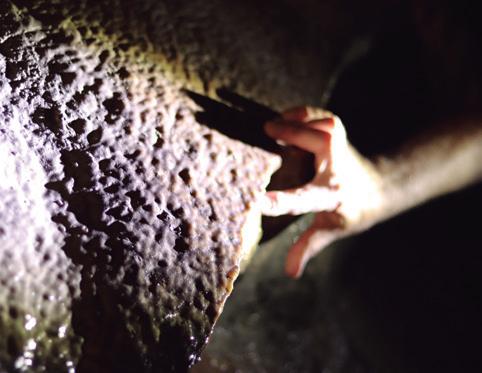
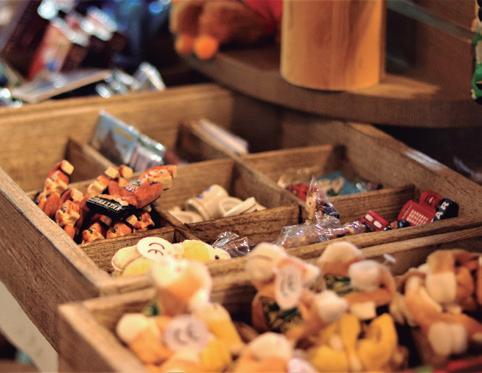

54 OTWO 08 / MARCH 2020 55 OTWO 08 / MARCH 2020
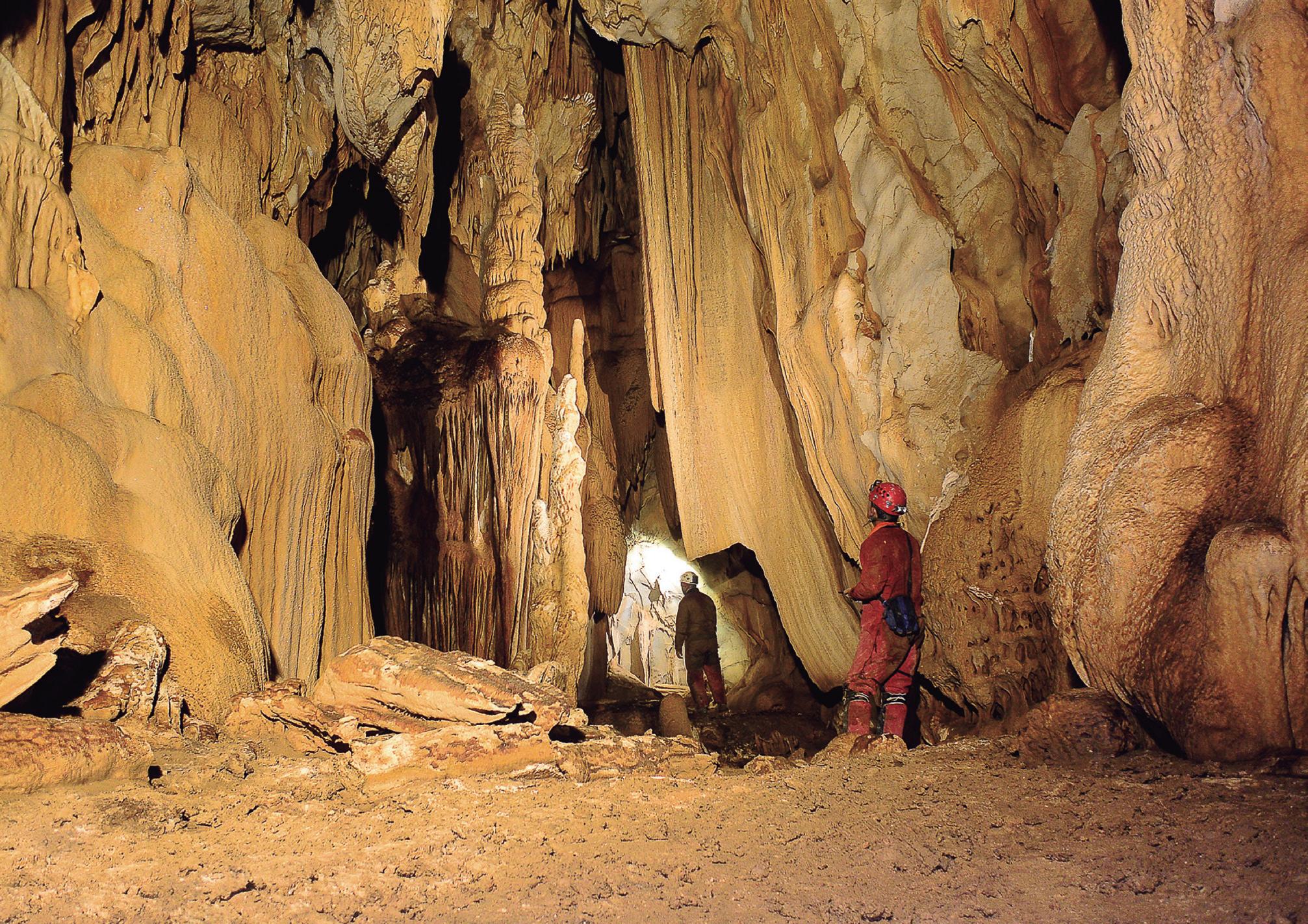
La Sierra de la Utrera, 200 million years of history
La Sierra de la Utrera, 200 millones de años de historia
Jorge Luis Romo Villalba
Project Coordinator for the Investigation and Exploration of la Sierra de la Utrera
Coordinador del Proyecto de Investigación y Exploración de la Sierra de la Utrera
OTWO 08 / MARCH 2020 57 56
PHOTOGRAPHY: RAFAEL MARTIN
CHAPTER TWO / CAPÍTULO 2

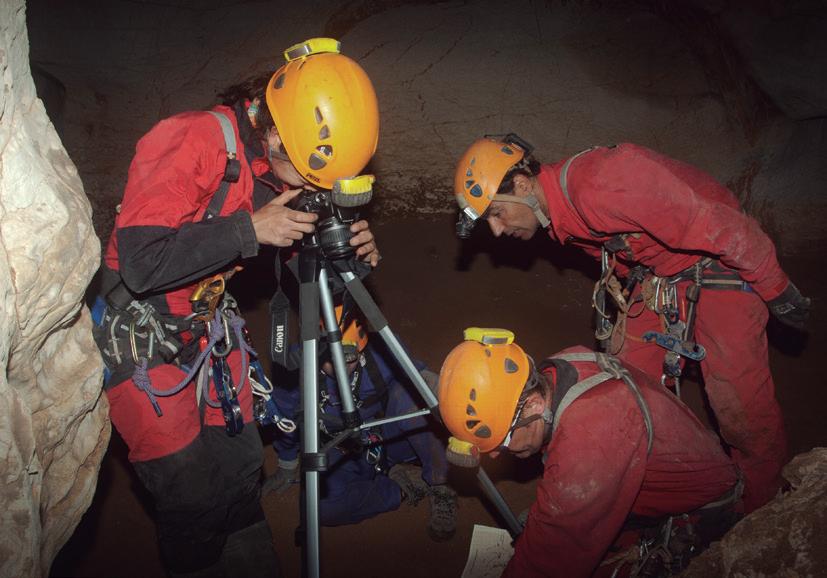
The Underground Research and Exploration Project
The Project was launched in the late 1970s, coordinated by a group of cavers who were already involved with the research team of the Sierra de la Utrera. The project is coordinated by the Casares Underground Exploration Group, with the main objective of prospecting, exploring and the cataloguing of its cavities; These speleological activities feed information about the underground and archaeological surface locations of the Sierra to the scientific research team.
Currently, in Torcal de Casares-Karst de la Utrera the number of cavities recorded within the catalogue of the area are ninety-four, of which twenty-two are listed as archaeological sites. Among the most important of the Sierra are the Cave of the Drum, the Ixodes Well, The Cave of the Grand Duke, the Underground System of the Hediondas (Simas Hedionda 2 and 4) and the Sima Hedionda 3, which with its size of 3.5 km, is one of the ten great cavities of Andalusia.
Some History
Among the archaeological finds, the pre-Roman walled complex of Villavieja stands out, with a length of more than 250 metres.
Interest in the area can also be attributed to the findings produced from recent investigations conducted in the Ancient Neolithic Funeral Complex within the Hediondas Underground System, which have brought to light evidence of schematic rock art similar in chronology of that already found in the Great Duke, making this area one of the most important in Andalusia for the research of early civilizations in southwestern Europe.
As a result, we find ourselves with a high concentration of heritage sites, all encompassed within a well-defined and homogeneous natural environment given that it is the southernmost karst complex in Europe and the karst complex with the lowest altitude in Andalusia. It is also a unique geographical and geological enclave due to its proximity to the African continent, with great scenic beauty and a large concentration of natural values related to its lithological, geomorphological, hydrological, climatic, floristic and faunal originality, reflected in its notable contribution to the geo-diversity and biodiversity of the region.
The highlights of this environment are the prehistoric settlements found in the area, both outdoors and in caves. Alongside areas containing a supply of raw material dating to the Lower Palaeolithic period, the existence of important cave stratigraphy’s has also been found, such as in the Cave of the Grand Duke.
Its proximity to the Strait of Gibraltar provides substantial added value for the investigation of transcendental anthropological aspects such as the change from Neanderthals to anatomically modern man and the relationship that both species had with riding on horseback in both Africa and Europe, as well as other aspects of great interest for understanding the dynamics of expansion of the first Neolithic societies in the Western Mediterranean. It is likely that the cavities were used as seasonal dwellings and as a necropolis, of which the main highlight is unique funerary complex in the Underground System of the Hediondas, one of the oldest in southwestern Europe which dates back to the seventh millennium BC; to all of these key points of interest we must also include the fact that some of these cavities house examples of rock art.
Recently, a Lower Palaeolithic site was discovered on the lands surface (Late Acheulean, 140,000 years BC) containing remnants of stone industry, which has been associated with deposits dating back to the Middle Pleistocene era found in the channel of the Arroyo de Gainos which runs through the Canuto Chico, turning what was known about prehistoric times in the Sierra de la Utrera on to its head.
During the Copper Age buildings were built in this area, which indicates that this space can be included within the first anthropized landscapes of the region. During the 2nd millennium BC, the Sierra de la Utrera already housed the largest Bronze Age settlement in the region, underlining and confirming the archaeological evidence that the area witnessed the first exchanges with Phoenician navigators back in the 10th century B.C.
A robust walled enclosure corresponding to the Iron Age (6th-7th century B.C) was adapted to the rock, where a well-preserved entrance flanked by two towers can be found.
From Roman times, some remains have been preserved that likely relate to economic activities linked
58 OTWO 08 / MARCH 2020 OTWO 08 / MARCH 2020 59
to oil exploitation in the surrounding areas of the Manilva River, during a time when the neighbouring city of Lacipo was a main settlement.
During medieval times it was used as an elevated refuge during the revolt of Omar ben Hafsun, between the 9th and 10th centuries.

Declaration for areas of Cultural Interest and Heritage, and the protection of archaeological sites
In 2013 the Platform for the Protection of the Sierra de la Utrera was created, composed of groups, associations and municipal entities, with the objective of conserving this natural space. Then in February 2014 the Andalusian Parliament approved by absolute majority, the Dossier for the Protection of the Sierra de la Utrera, with a primary focus on heritage areas and places of cultural interest.
Another important boost for the investigation and protection of the Sierra took place in April 2015, when the General Directorate of Fine Arts and Cultural Property – General Sub-directorate for the Protection of Historical Heritage of the Ministry of Culture, decided to register the underground system of the Hediondas, Sima Hedionda 4 and Sima Hedionda 2; in the General Registry of Places of Cultural Interest.
At the same time, the Territorial Delegation of Malaga for the Junta de Andalucía’s Ministry of Culture, proceeded to add the Sima Hedionda 4 (Well of the Albarrá), which belongs to the underground system of the Hediondas, to the General Catalogue of Andalusian Historical Heritage.
Currently, the necessary procedures and the drafting of regulations are being carried out together with the Ministry of Culture of the Junta de Andalucía to complete the declaration for the protection and conservation of the Sierra; which is expected to be finalised by Autumn 2019.
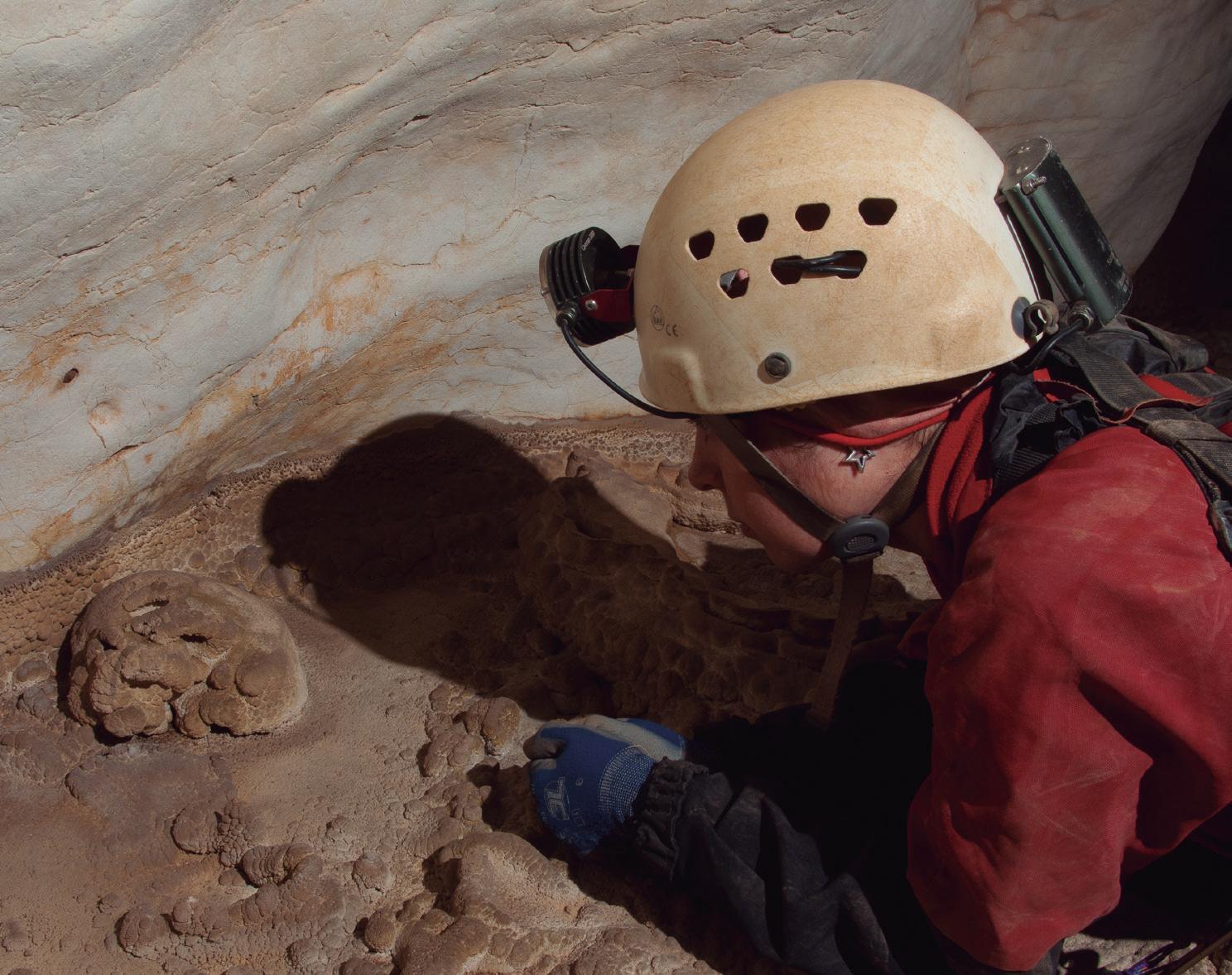
60 OTWO 08 / MARCH 2020 OTWO 08 / MARCH 2020 61
El Proyecto de Investigación y Exploración Subterránea
Este Proyecto fue puesto en marcha a finales de la década de los setenta del siglo pasado, coordinado por un grupo de espeleólogos que se implicaron en el equipo de investigación de la Sierra de la Utrera. Este proyecto está coordinado por el Grupo de Exploraciones Subterráneas de Casares teniendo como principal objetivo la prospección, exploración y catalogación de cavidades; estas actividades espeleológicas nutren de información al equipo de investigación científica de las localizaciones arqueológicas subterráneas o en superficie que se van localizando en la Sierra.
Actualmente el catalogo de cavidades del Torcal de Casares-Karst de la Utrera presenta noventa y dos cavidades, de las cuales veintidós presentan yacimientos arqueológicos. Entre las más importantes de la Sierra se encuentran la Cueva del Tambor, el Pozo Ixodes, La Cueva del Gran Duque, el Sistema Subterráneo de las Hediondas (Simas Hedionda 2 y 4) y la Sima Hedionda 3, una de las diez grandes cavidades de Andalucía, con 3,5 kms de desarrollo.
Algo de Historia
Entre los hallazgos arqueológicos destaca el recinto amurallado de época prerromana de Villavieja, con más de 250 metros de desarrollo lineal.
Al interés de la zona se unen además, los resultados aportados por las investigaciones recientes del Complejo Funerario del Neolítico Antiguo del Sistema Subterráneo de las Hediondas, las cuales han sacado a la luz evidencias de arte rupestre esquemático que sumado al de la misma cronología de Gran Duque, convierten a este sector en uno de los más importantes de Andalucía para la investigación de las primeras sociedades productoras del suroeste de Europa.
Como resultado, nos encontramos ante una gran concentración de zonas de cautela patrimonial, englobadas dentro de un ámbito natural bien delimitado y homogéneo, al tratarse del conjunto kárstico más meridional de Europa y el de menor altitud de Andalucía, un enclave geográfico y geológico único por su proximidad al continente africano, de gran belleza paisajística, que concentra valores naturales relacionados con su originalidad litológica, geomorfológica,
hidrológica, climática, florística y faunística, que se traduce en una notable aportación a la geodiversidad y a la biodiversidad de la región.
Destaca la ocupación prehistórica de este entorno, tanto al aire libre como en cuevas. Junto a zonas de aprovisionamiento de materias primas de momentos del Paleolítico Inferior, se ha constatado la existencia de importantes estratigrafías en cueva, como en la Cueva del Gran Duque.
Su cercanía al Estrecho de Gibraltar supone un valor añadido para la investigación de aspectos antropológicos trascendentales para la humanidad como la sustitución de los neandertales por el hombre anatómicamente moderno y la relación de ambas especies a caballo entre África o Europa, así como otros aspectos de gran interés para el conocimiento de la dinámica de expansión de las primeras sociedades productoras neolíticas en el Mediterráneo Occidental, en el que las cavidades se usaron previsiblemente como lugares de hábitat estacional y como necrópolis, destacando aquí el singular complejo funerario del Sistema Subterráneo de las Hediondas, uno de los más antiguos del Suroeste de Europa, que remonta al VII milenio a.C.; a estos aspectos de interés hay que sumar el hecho de que algunas de estas cavidades alberguen manifestaciones de arte rupestre.
Recientemente la localización de un yacimiento del Paleolítico Inferior (Achelense Superior, 140.000 años a.C.) con restos de industria lítica tallada, sobre la superficie del terreno, asociada a depósitos del Pleistoceno Medio en el cauce del Arroyo de Gainos, que discurre por el Canuto Chico, da un vuelco en los conocimientos prehistóricos de la Sierra de la Utrera.
Durante la Edad del Cobre se construyeron edificaciones, que indican que este espacio se incorpora a la configuración de los primeros paisajes antropizados de la región. Será ya en el II milenio a.C. cuando la Sierra de la Utrera sea sede del mayor asentamiento de la Edad del Bronce de la comarca, destacando por las evidencias arqueológicas que confirman que el lugar fue testigo de los primeros intercambios realizados con los navegantes fenicios, allá por el siglo X a.C.
A la Edad del Hierro (siglos VI-IV a.C.) corresponde un potente recinto amurallado adaptado a la roca,
del que se conserva una entrada flanqueda por dos torres.
De época romana se conservan algunos restos relacionados con actividades económicas previsiblemente de la explotación de aceite en el entorno del Río Manilva, en momentos en el que ya el principal asentamiento de la región era la vecina ciudad de Lacipo.
En época medieval fue refugio de altura en tiempos de la revuelta de Omar ben Hafsun, entre los siglos IX y X.
La Declaración de Bien de Interés Cultural y Paraje Patrimonial, y la protección de los Yacimientos
En 2013 se creó la Plataforma para la Protección de la Sierra de la Utrera, integrada por colectivos, asociaciones y entes municipales, con el fin de conseguir la conservación de este espacio natural; y en Febrero de 2014 el Parlamento Andaluz aprobó por mayoría absoluta iniciar el Expediente de Protección de la Sierra de la Utrera con la figura de Zona Patrimonial y Bien de Interés Cultural.
Un importante impulso a la investigación y protección de la Sierra es que en Abril de 2015 la Dirección General de Bellas Artes y Bienes Culturales, Subdirección General de Protección del Patrimonio Histórico de la Secretaria de Estado de Cultura del Ministerio de Cultura resolvió que se inscribiera el Sistema Subterráneo de las Hediondas, Sima Hedionda 4 y Sima Hedionda 2; en el Registro General de Bienes de Interés Cultural.
Así mismo, la Consejería de Cultura de la Junta de Andalucía, Delegación Territorial de Málaga en las mismas fechas procedió a incluir en el Catalogo General de Patrimonio Histórico Andaluz a la Sima Hedionda 4 (Pozo de la Albarrá), perteneciente al Sistema Subterráneo de las Hediondas.
Actualmente se vienen realizando los trámites necesarios y la redacción de las normativas reguladoras junto con la Consejería de Cultura de la Junta de Andalucía para la declaración de la protección de la conservación de la Sierra; y que previsiblemente quede finalizado este otoño de 2019.
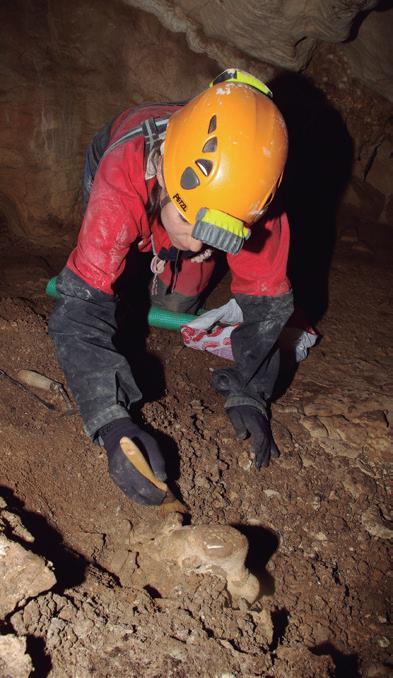


62 OTWO 08 / MARCH 2020 OTWO 08 / MARCH 2020 63

ESG Philosophy and Motivation
ISR Filosofía y Motivación
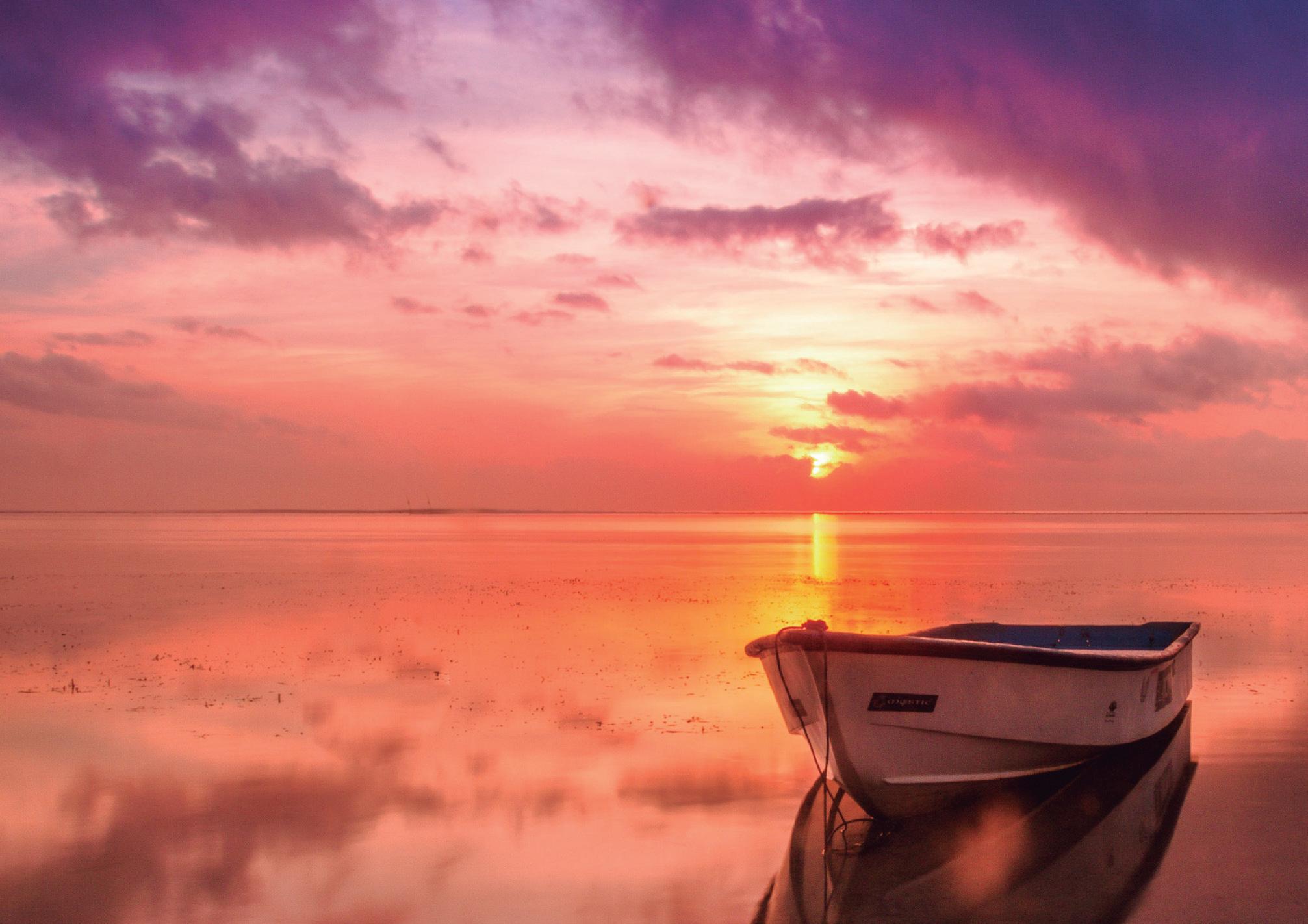
Formed in 2000 our group’s main focus has been on cleaning up and making Gibraltar a healthier and more pleasant land to live, while at the same time celebrating and protecting the incredible nature we are so fortunate to inhabit. Our historic work on local and regional pollution and seeking application of best available technology and regulations is well known.
We have a good grasp of local and regional environmental issues and have the advantage of experience and knowledge that comes with passionately following and researching these for two decades.
The ‘environment’ and the crisis of ‘climate change’ are now mainstream news. However, achieving meaningful change to address these most serious challenges requires adaptation and use of appropriate economic and technological systems to make our societies more sustainable and less polluting.
This “adaptation period” is critical to avert the worst effects of climate change and nations everywhere are being called upon to forge such plans. Gibraltar must also develop a climate plan that sets out targets to reduce our pollution and use of fossil fuels in as short a time as possible. We call for higher environmental protection standards due to our size and proximity to sources of pollution.
Gibraltar’s size and political situation makes achieving true sustainability in terms of waste/energy/food etc. impossible. The trade in fossil fuels carried out in the Gibraltar, the Bay and North Africa is part of a global reliance on oil and plans must soon come into line to transition away from this practice. Regardless, petrochemical industries across the bay continue to expand, this is a stark reminder that whatever improvements we make in Gibraltar – and make them we must - our backdrop is one that is literally killing the planet.
Efforts should be increased at a local and cross border level to seek a moratorium of such industries and clean up this regional environmental hotspot. In this regard the ESG and our partners can be proud of the decade long fight we took to Brussels and the EU, to clean up the large Oil Refinery located in the bay, during which time, was operating to 3rd. world standards. Under the current climate crisis, we are studying the possibilities of once more taking on this major challenge as industries, major reclamation works and rampant urbanization threatens the region.
By cleaning up our polluting sources we are also improving our health and quality of life, which is obviously a basic human right, and one we should all aspire to enjoy.
Creado en el año 2000, el objetivo principal de nuestro grupo ha sido limpiar y hacer de Gibraltar una tierra más sana y agradable para vivir, a la vez que disfrutamos y protegemos la increíble naturaleza en la que somos afortunados de habitar. Nuestra histórica lucha contra la contaminación local y regional, y la búsqueda de la mejor tecnología y regulaciones disponibles es bien conocida.
Tenemos una buena comprensión de las cuestiones ambientales locales y regionales y tenemos la ventaja de la experiencia y el conocimiento que viene con seguir e investigar apasionadamente estos durante dos décadas.
El “medio ambiente” y la crisis del “cambio climático” son ahora noticia general. Sin embargo, lograr un cambio significativo para hacer frente a estos desafíos más graves requiere la adaptación y el uso de sistemas económicos y tecnológicos adecuados para hacer que nuestras sociedades sean más sostenibles y menos contaminantes.
Este “período de adaptación” es fundamental para evitar los peores efectos del cambio climático y se está exigiendo a las naciones de todas partes que forjen esos planes. Gibraltar también debe desarrollar un plan climático que establezca objetivos para reducir nuestra contaminación y el uso de combustibles fósiles en el menor tiempo posible.
Solicitamos estándares mayores de protección del medio ambiente debido a nuestro tamaño y proximidad a las fuentes de contaminación.
El tamaño y la situación política de Gibraltar hacen imposible lograr una verdadera sostenibilidad en términos de residuos/energía/alimentación, etc. El comercio de combustibles fósiles llevado a cabo en Gibraltar, la Bahía y el Norte de Africa es parte de una dependencia mundial del petróleo y los planes deben alinearse pronto para pasar de esta práctica. A pesar de todo, las industrias petroquímicas de toda la bahía continúan expandiéndose, este es un claro recordatorio de que cualquier mejora que hagamos en Gibraltar, y hacerlas debemos, nuestro telón de fondo es uno de los que literalmente, está matando al planeta.
Deberían incrementarse los esfuerzos a nivel local y transfronterizo para buscar una moratoria de esas industrias y limpiar este punto crítico en medio ambiente. En este sentido, el ESG y nuestros socios podemos estar orgullosos de la lucha que llevamos a Bruselas y EEUU, de eliminar la refinería situada en la bahía, que ocupa el tercer puesto bajo los estándares mundiales. En el marco de la actual crisis climática, estamos estudiando las posibilidades de asumir de nuevo este gran desafío, porque las industrias, las grandes obras de reclamo y la urbanización desenfrenada, amenazan nuestro rincón. Al limpiar nuestras fuentes contaminantes también estamos mejorando nuestra salud y nuestra calidad de vida, que obviamente es un derecho humano fundamental al que todos debemos aspirar disfrutar en un futuro.

Skatepark
Málaga “Rubén Alcántara”
With the world’s population concentrated in urban areas, many cities are rethinking their urban planning priorities by shifting the focus away from cars to improve their citizens quality of life. The positive environmental impact of less cars on our roads goes without saying but returning our cities to the pedestrian also has a positive effect on our physical health, our mental wellbeing and gives way for more green areas and open spaces for everyone to enjoy. These new methods of urban planning are emphasising the importance of creating cities that are enjoyable and healthy places to live.
Gibraltar often seems to be ruled by the car and unfortunately its limited urban topography means that it lacks outdoor space. However, the local government has laid out plans to create more green areas and parks, as well as developing the Mount complex and the Northern Defences for recreational purposes. But whilst these plans are still in their early stages, we’ve looked toward Spain to see what other recreational spaces are available within urban areas.
OTWO 08 / MARCH 2020 67 66 OTWO 08 / MARCH 2020
After a bit of a rocky start, the Rubén Alcántara skatepark in Malaga opened in 2015. Available to everyone, from complete novices to pros, the park has made waves and is now considered one of the best in Europe, welcoming people of all ages who want to skateboard, BMX, ride scooters or inline skate.
Skateboarding and Freestyle BMXing were immensely popular throughout the 70s, 80s and 90s. After both sports experienced a decline throughout the 2000s, they are now once again regaining popularity and are even due to make their debut at this year’s Olympic Games in Tokyo.
As a teenager growing up in the 90s, skateboarding and its surrounding culture were a big deal. At the time, many kids fancied themselves as the next Tony Hawk or Bob Burnquist (likely spurred on by their incredible skills on the bestselling Tony Hawks Pro Skater games for the PlayStation).
Now, I’ve never been known for my love of outdoor activity and my physical prowess, but I must admit, even I fancied a go…. after all, how hard could it be? But my short-lived skateboarding career (lasting approximately half an hour) ended with scuffed knees and a bruised ego, so I turned back to my PS2 to live out my kick flipping dreams. But for those of you with better balance and agility, the skatepark in Malaga offers world class facilities, skate and BMX lessons and of course, lots of fun for people of all ages.
The success of Malaga’s skatepark begins and ends with its namesake – pro BMXer, Rubén Alcántara. Born and bred in Malaga, he started his extremely successful BMXing career at age 9. Since then, he has gone on to win the world championship twice (2000 and 2002), competed in the X Games, graced the cover of countless magazines and been sponsored by brands such as Huffy, Macneil, Terrible One, Flybikes, Fox, and Etnies. What sets Rubén apart are his street riding skills. Widely considered one of the best BMX street riders in the world, he has appeared in numerous videos showcasing his imaginative and ground-breaking style. His ability to utilise every day urban planning and architectural elements with flowing simplicity and ease earned him the 2007 NOVA award for the best rider in the street category. His X Games biography also describes him as a rider with “an arsenal of tricks that not many riders can match (rodeo grinds, 540 wallrides, tailwhip wallrides
and incredibly tweaked inverts)”. Rubén has also been involved in the design of bike parts, shoes and clothing.
Construction for the park initially began in …..., with Rubén called in to advise on the project and to design the bowl. He drew his inspiration from various places he had ridden over the years, using different elements and sections that he particularly liked and enjoyed, ultimately creating what is now described as one of the best skating bowls in the world.
After piecing his design together and ensuring that the bowls layout covered different riding styles and was a fun experience for riders, he set about overseeing the build. With so many different elements to consider, he visited the site daily to make sure that each curb and hill were constructed correctly.
But after months of hard work the project was abandoned, and the incomplete park remained unopened and practically unused for three years. Rubén and other BMXers and skaters would often jump the fence to ride the bowl, frustrated and annoyed that the project had been deserted with no prospect of it ever being finished.
But finally, in 2014 the park was handed back to the city of Malaga and placed under the responsibility of Malaga Sports and Events. Rubén was called back in to help get the project up and running again and the park opened its doors to the public in 2015 to great success.
The 10,000 square metre space includes the world-famous bowl, a street area comprising of railings, inclined planes, walls and benches, a halfpipe, mini ramps and a BMX dirt track with 7 different circuits, allowing kids and adults of different abilities to enjoy all it has to offer. There is also a café, rest areas, changing rooms, stands and a commercial area.
The park was quickly heralded as the best in Spain and one of the best in Europe, with enthusiasts travelling from all over the world to visit. Shortly after opening, skateboarding legend Tony Hawk chose Malaga as one of six stops on his Birdhouse European Vacation tour and was joined by pro-skaters, Aaron ‘Jaws’ Homoki, Ben Raybourn, Clint Walker, David Loy, Clive Dixon, Mike Davis, Shawn Hale, Kevin Staab, and Lizzie Armanto.
The Vans BMX Pro Cup World Championship was also held at the Rubén Alcántara skatepark in 2017 and 2018.
The park also offers different courses for young novices or for those wanting to improve their skills.
Whether you want to try out skateboarding, BMXing, scooters or inline roller, there are private one on one lessons, regular or intensive courses and group activities available.
Following the roaring success of the park, Rubén, together with architect and BMXer - Aitor Veguillas, founded the company Soul Parks, specialising in the construction and management of skateparks. Their years of experience in the BMXing world has given them extensive knowledge of good design, as well as the ability to strike a balance between areas of ease and difficulty. Their aim is always to construct
progressive spaces where anyone starting the sport can improve and develop their skills over time in one place. They have completed further projects in Zaragoza, Bilbao, Vigo, San Pedro de Alcántara, Pizarra and Vélez-Málaga.
By not allowing the skatepark project in Malaga to fall by the wayside, Rubén and Malaga Sports and Events have created a world-renowned sporting complex that has not only attracted visitors from around the globe, but has also given young people in the area an outdoor space that they can enjoy and call their own.
To learn more or to book courses visit: www.skateparkmalaga.info

69 68 OTWO 08 / MARCH 2020

La concentración de la población mundial en las zonas urbanas, está llevando a que muchas ciudades se estén replanteando sus prioridades de planificación urbana, para mejorar la calidad de vida de sus ciudadanos alejándolos del núcleo automovilístico. Es evidente que, reduciendo el número de vehículos en nuestras carreteras, el impacto ambiental es muy positivo, pero también es muy positivo en nuestra salud física y mental, que el peatón vuelva a adueñarse de nuestras metrópolis, dando espacio a más zonas verdes y espacios abiertos en el que todos disfruten. Estos nuevos métodos de planificación urbana están haciendo hincapié en la importancia de crear ciudades que sean lugares agradables y saludables para vivir.
En muchas ocasiones Gibraltar parece estar gobernado por el automóvil y, por desgracia, los relieves y límites del terreno, muestran sus carencias de espacios libres. Sin embargo, el gobierno local ha establecido planes para crear más áreas verdes y parques, a la vez que plantea desarrollar el Monte y las Defensas del Norte con fines recreativos. Estas propuestas están en sus primeras etapas por lo que hemos mirado los espacios recreativos disponibles en las urbes cercanas de España.
Comprobamos que tras un complicado arranque, el skatepark Rubén Alcántara de Málaga abrió sus puertas en 2015. Un espacio con zonas disponibles para todos desde principiantes a profesionales. A pesar de los vaivenes, el parque está considerado actualmente como uno de los mejores de Europa, recibiendo a todos los amantes del patinaje en línea, el skate, la BMX y los Scooter .
El Skate o mono patinaje y el estilo libre de BMX,
fueron muy populares a lo largo de los años 70, 80 y 90. Ambas disciplinas deportivas experimentaron un fuerte descenso de práctica durante los años 2000, pero en estos últimos tiempos ha subido tanto su popularidad que debutarán en los próximos Juegos Olímpicos de Tokio.
Durante mi adolescencia, allá por los años 90, el skateboarding y la cultura que lo rodeaba se consideraban problemáticos. Por aquel entonces muchos niños soñaban con ser el próximo Tony Hawk o Bob Burnquist (estimulados probablemente por sus habilidades en los juegos más vendidos de Tony Hawks Pro Skater, para Play Station).
Nunca he destacado por mi destreza física ni mi amor por las actividades al aire, pero debo admitir que, a pesar de todo, me apetecía probarlo… después de todo, ¿era tan difícil? Mi carrera de skate fue bastante efímera, apenas duró media hora y me hizo terminar con las rodillas magulladas y mi ego por el suelo. Así que volví a mi PS2 para disfrutar de mis sueños como skater.
Eso sí, para todos ustedes que cuentan con un mejor sentido del equilibrio y mayor agilidad, el skatepark de Málaga cuenta con instalaciones de categoría internacional, clases de skate y BMX, y por supuesto diversión para todas las edades.
El éxito de la skatepark de Málaga comienza y termina con el deportista que le da nombre al complejo, el profesional BMXer, Rubén Alcántara. Nacido y criado en Málaga, comenzó su exitosa carrera en BMXing a los nueve años. Desde entonces, ha ganado dos veces el campeonato del mundo (2000 y 2002), compitió en los X Games, ha sido portada de innumerables publicaciones y ha sido patrocinado
por marcas como Huffy, Macneil, Terrible One, Flybikes, Fox y Etnies. Rubén destaca por sus habilidades de conducción callejera. Está considerado uno de los mejores ciclistas callejeros de BMX del mundo, ha aparecido en numerosos videos que muestran su estilo imaginativo y vanguardista. Su habilidad para utilizar a diario la planificación urbana y los elementos arquitectónicos con facilidad y fluidez, le valió el premio NOVA 2007 al mejor ciclista en la categoría de calle. Su biografía de X Games también lo describe como un piloto con “un arsenal de trucos que no muchos pueden igualar (rodeo, 540 wallrides, tailwhip wallrides e invertidas increíblemente ajustadas)”. Rubén también ha participado en el diseño de piezas de bicicleta, zapatos y ropa.
La construcción del parque comenzó inicialmente en ......, cuando llamaron a Rubén como asesor del proyecto y diseñador del Bowl. Se inspiró en varios lugares en los que había montado a lo largo de los años, utilizando diferentes elementos y secciones que le gustaban y le hacían disfrutar especialmente, creando lo que ahora se describe como uno de los mejores Bowls de patinaje del mundo.
Después de conseguir su diseño y asegurarse de que los “bowls” cubrieran diferentes estilos de conducción y fuese una experiencia divertida para los pilotos, se dedicó a supervisar la construcción. Eran tantos los flecos a tener en cuenta en la construcción, que visitó a diario la obra para asegurarse de que cada bordillo y colina se construían correctamente.
Tras meses de arduo trabajo, el proyecto fue abandonado, y el parque permaneció cerrado y sin uso durante tres años. Rubén y otros BMXers y patinadores, a menudo saltaban la valla para montar en el bowl, frustrados y molestos porque tan buen proyecto había sido abandonado sin posibilidad de finalización.
Fue en 2014 cuando el espacio fue devuelto a la ciudad de Málaga bajo la responsabilidad de Málaga Deportes y Eventos. Nuevamente se contactó con Rubén para que arrancase y pusiera en marcha el proyecto de nuevo, abriendo con gran éxito sus puertas al público en 2015.
El espacio de 10.000 metros cuadrados incluye el mundialmente famoso Bowl, una zona de “street” que cuenta con barandillas, planos inclinados, pa-
redes y bancos, medio cilindro, mini rampas y una pista de tierra BMX con siete circuitos diferentes, que permiten a niños y adultos de diferentes posibilidades de disfrute de todo cuanto ofrece. También hay una cafetería, áreas de descanso, vestuarios, stands y una zona comercial.
El parque se anunció como el mejor de España y uno de los pioneros de Europa, con entusiastas que viajan de todo el mundo para visitarlo. Poco después de su apertura, la leyenda del skate Tony Hawk eligió Málaga como una de las seis paradas de su gira Birdhouse European Vacation y se unió a los patinadores profesionales, Aaron ‘Jaws’ Homoki, Ben Raybourn, Clint Walker, David Loy, C Dixonlive, Mike Davis, Shawn Hale, Kevin Staab y Lizzie Armanto.
El Campeonato Mundial de Vans BMX Pro Cup también se ha celebrado en el skatepark Rubén Alcántara en 2017 y 2018.
EL circuito ofrece diferentes cursos para jóvenes principiantes o para aquellos que deseen mejorar sus habilidades. Es indiferente que desee probar skateboarding, BMX, scooters o patines en línea… pueden recibir clases individuales, cursos regulares o intensivos y también hay actividades disponibles en grupo.
Tras el gran éxito de estas instalaciones, Rubén junto con el arquitecto y BMXer - Aitor Veguillas, fundaron la empresa Soul Parks, especializada en la construcción y gestión de parques de skate. Sus años de experiencia en el mundo BMX les ha otorgado un amplio conocimiento del buen diseño, así como la capacidad de encontrar un equilibrio entre áreas de sencillas y áreas de dificultad. Su objetivo es construir espacios progresivos donde cualquiera que comience el deporte pueda mejorar y desarrollar sus habilidades en un solo lugar. Juntos han llevado a cabo nuevos proyectos en Zaragoza, Bilbao, Vigo, San Pedro de Alcántara, Pizarra y Vélez-Málaga.
Al no permitir que el proyecto skatepark en Málaga se quedara a medio camino, Rubén y Málaga Sports and Events han creado un complejo deportivo de renombre mundial que no sólo ha atraído a visitantes de todo el mundo, sino que también ha brindado a los jóvenes de la zona un espacio al aire libre que pueden disfrutar y defender como propio. Para obtener más información o para reservar cursos visite: www. skateparkmalaga.info.
OTWO 08 / MARCH 2020 71 70 OTWO 08 / MARCH 2020

SPRING 2020

This spring, something more than Cestrum nocturnum will bloom in Gibraltar. OTWO is so excited to introduce - as organizers - the first edition of GWG (Green Week Gibraltar) that will take place throughout a week in April/May this year. It will be dedicated to ecotourism, the environment, sustainable development, the Mediterranean Intercontinental Reserve (RBIM), principles of the circular economy, our natural and cultural heritage. All these aspects covered within wide educational, commercial and technical proposals.
With strong international content, projects, presentations and products from different countries that will be presented. The event will be articulated through four main fronts.
72 OTWO 08 / MARCH 2020
Conferences
Covering different academic areas, lectures on ecology, climate change, recovery and heritage management, active tourism in natural spaces and the design of public equipment such as visitor centers or information points.
Exhibition Fair
A trade fair will also be organized with stalls from interesting companies in the sector, where we will discover attractive offers of routes, trails, rural houses, multi-adventure activities, along with a sampling of artisan
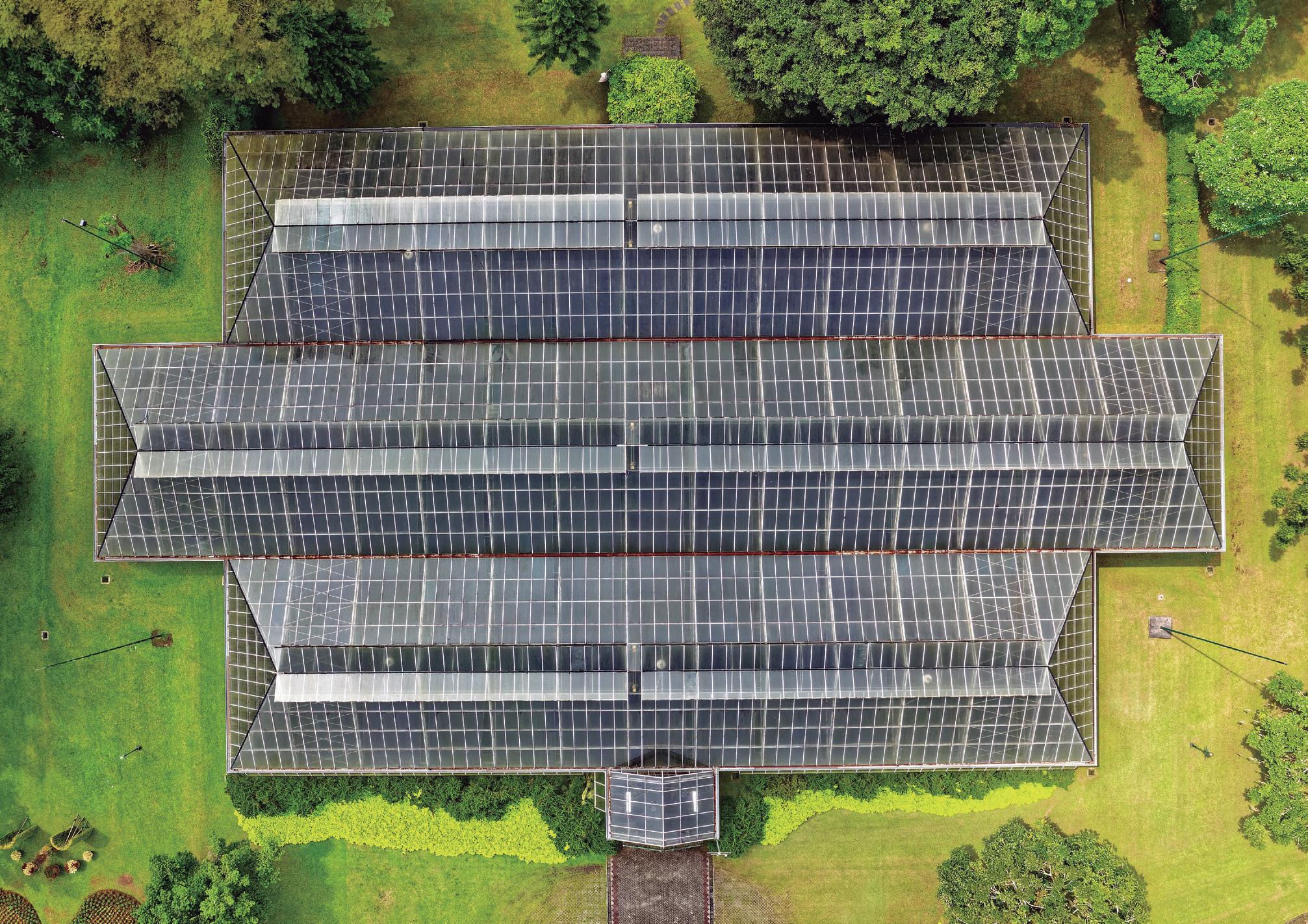
ecological products. Presented honestly and ensuring respectful production policies, in solidarity with our environment and an exciting alternative to conventional. This exhibition fair will focus on new technologies, sustainable transport, energy optimization and important innovative technological projects.
Activities
One of the key objectives of this conference is environmental awareness and education. We are working with different agencies to include school activities, urban workshops with citizen participation, exhibitions
with painters, photographers and artisans who will show us with artistic work respect for nature. We also plan to organize groups for bird watching in different locations of the Straits, with guides specialized in ornithology, or visiting public facilities dedicated to the environment and located throughout the area. We will cross paths through Gibraltar and the region, visit the last artisans of traditional products, tasting the traditional cuisine of each place or attending demonstrations of folklore, customs and ancestral music of these privileged territories.
Actions
We will promote definitive actions throughout Gibraltar related to traffic, coastal cleaning, or the planting of native species. We want to have an active and participatory Green Week Gibraltar.
In our next issue we will more accurately inform dates, contact numbers and emails for participants and advertisers. While we advise you to visit our website www.otwomag.com because it will inform you in real time of everything related to the GWG. And of course, do not hesitate to subscribe to OTWO,
OTWO 08 / MARCH 2020 75 74 OTWO 08 / MARCH 2020

PRIMAVERA 2020

Esta primavera florecerá en Gibraltar algo más que la arrebatadora Cestrum nocturnum, desde el equipo de OTWO nos entusiasma presentarles —como organizadores— la primera edición de GWG (Green Weekend Gibraltar) que tendrán lugar probablemente a lo largo de toda una semana en abril o mayo de este año, dedicada al ecoturismo, el medio ambiente, el desarrollo sostenible, la Reserva Intercontinental del Mediterráneo (RBIM), la economía circular y el patrimonio natural y cultural, con una amplia oferta educativa, comercial y técnica.
Con una fuerte apuesta internacionalista, se presentarán proyectos, ponencias y productos de diferentes países. Estas jornadas se articularán en cuatro grandes áreas de intervención:
Conferencias
En diferentes espacios académicos se debatirán ponencias y charlas coloquios sobre ecología, cambio climático, recuperación y gestión del patrimonio, el turismo activo en los espacios naturales y el diseño del equipamiento público como los centros de visitantes o los puntos de información.
Feria Expositiva
También se organizará una feria de muestras con estands de las empresas más interesantes del sector, donde descubriremos las atractivas ofertas de rutas, senderos, casas rurales, actividades multiaventuras, junto con la degustación de productos artesanales y ecológicos, con la denominación de “comercio justo” apostando por una nueva forma de producción honesta y de respeto mutuo, solidario y alternativo al convencional. Esta feria expositiva también apostará por las nuevas tecnologías, por la optimización energética y la presencia de importantes e innovadores proyectos tecnológicos.
Actividades
Uno de los objetivos claves de estas jornadas es el de la concienciación y la educación ambiental, por lo que se está trabajando con los diferentes organismos para incluir actividades escolares, talleres urbanos con participación ciudadana, exposiciones con pintores, fotógrafos y artesanos que nos mostraran con su trabajo artístico el respeto por la naturaleza. También tenemos previsto organizar grupos para la observación de aves en diferentes lugares del Estrecho, con guías especializados en ornitología, o la visita a los equipamientos públicos dedicados al medio ambiente y ubicados por toda la zona. Recorreremos senderos por Gibraltar y la comarca, visitaremos a los últimos artesanos del carbón, la sestearía, o el acero, degustando la gastronomía tradicional de cada lugar o asistiendo a demostraciones del folclore, las costumbres y la música ancestral de estos territorios privilegiados.
Acciones
Vamos a gestionar acciones concretas por todo Gibraltar relacionadas con el tráfico, la limpieza del litoral, o la plantación de especies autóctonas. Deseamos tener un Green Week Gibraltar activo y participativo.
En nuestro próximo número informaremos con más exactitud las fechas, los teléfonos y correos electrónicos de contacto para los participantes y anunciantes. Mientras les aconsejamos que visiten nuestra web www.owomag.com porque en ella informaremos en tiempo de real de todo lo relacionado con el GWG. Y por supuesto, no dude en suscribirse a OTWO, la Madre Tierra —y también nosotros— te lo agradecerá.
OTWO 08 / MARCH 2020 77 76 OTWO 08 / MARCH 2020
Where tradition meets climate change
La tradición frente al cambio climático
Nicolas Pantelick
Nicolas Pantelick is a student from the United States on a gap year before university, who is interning with the High Atlas Foundation in Marrakech, Morocco.

Two weeks ago, I set out with three of my colleagues from the High Atlas Foundation (HAF, Marrakech) to the village of Gourrama in the Moroccan Middle Atlas Mountains. Our journey, from sunrise to sunset, took us across rugged terrains and through communities of all sizes. I reveled in the beauty, both natural and created, that flashed by my window as we drove. Each of the passing images aroused in me the innocent excitement one feels at seeing a place for the first time, if even just for a moment.
Solitary concrete buildings partitioned the flowing green fields we slipped through. Washed in fading emeralds, reds, pinks, and oranges, in profile, they appeared as stooped faces, their heavy-set brows animated by the soulful eyes of lit windows. They, witnesses to the passing lives and journeys of all, were solemn and resolute in their observation. Other constructions lay further back from the road, their glossy tin roofs peeking out from the verdant seas beside which they stood. The space between these oases of life and color did not feel hollow or maligned. It existed alongside the same expansiveness with which the blue sky above stretched up, out, and around us, without limit.
Upon arrival in Gourrama, we met with local representatives to drop off several hundred walnut and almond saplings at surrounding agricultural associations. These were only a fraction of the thousands of fruit trees we had carried with us, tightly packed in the back of our vehicle beside our luggage. One such representative, Tarik Sadki, head of the local association, gave us a tour of the property where we would be staying. Among the many buildings of mud brick and reinforced straw we walked through, one room, in particular, was a source of pride for Tarik. Here, he had curated a museum space over the past 20 years, dedicated to the preservation of the region’s history dating back a millennium, containing dozens of Amazigh, Arab, and French artifacts, from ancient tools and weapons to contemporary pieces of artwork.
This first morning in Gourrama, we distributed trees to 32 local farming families. Men, old and young alike, arrived wearing customary earth-toned djellabas to stave off the morning’s chill and protect their eyes from the rising sun. Excitedly, they hoisted their sapling bundles
78 OTWO 08 / MARCH 2020 OTWO 08 / MARCH 2020 79
onto the backs of waiting donkeys, with visible pride and purpose.
In the late morning, we drove to a nearby town for further tree dissemination. There, I asked a handful of farmers about the effects of climate change on their livelihoods. In response, one man named Mustafa said that he has noticed a precipitous drop in rainfall, leading to reduced land quality. This dearth of rain, he revealed, has also impeded communal efforts to expand cultivation range, stabilize income fluctuations, and sustain local apiaries and flocks. One solution that he and others have found for this issue has been to build dams and canals to divert water from rivers to their fields. Moreover, during a dry year, he explained, farmers must plant more drought-resistant staples of barley and corn, even when these crops do not provide enough self-sustaining income.
Similarly, another farmer named Hasan recounted that, since a 2008 flood, all of the almond trees have been dying in the region. Because of this difficult reality, farmers seek more environmentally resilient varieties of trees that will flower later in the season, during a time of greater rainfall. Unrelated to climate change, Hasan expressed that a lack of fundamental agricultural training has also been responsible for diminishing yields. He believes that these farming practices, wherein people plant their trees and leave them without care, are a consequence of this deficient education.
At midday, after all farmers had received their trees, we led a discussion on communal wants and needs for the future. Through this conversation, we learned that rural Moroccan farmers often struggle to find the “right” domestic market for their products, toiling to make enough money, even in plentiful years. The majority of their crops are exported raw to European countries, to be processed and sold at high prices for the benefit of large corporations, instead of for their original growers. Moroccans want to access the international organic market, but rarely can because they lack adequate resources to effectively plant, grow, harvest, process, and distribute their produce. Some farmers have taken this challenge headon, successfully managing the “seed to sale” value chain themselves. In this regard, a few in
Gourrama have made moderate gains processing local olives into olive oil.
Beyond this, the group discussion brought forth two final issues: the inadequacy of young children’s school facilities and sweeping rural joblessness. Employment outside the field of agriculture is difficult to come by in this area, and the only occasional jobs available are in animal husbandry and beekeeping.
Subsequently, we emphasized that HAF will remain a part of their entire development process, from the distribution of seeds to the certification, processing, and sale of produce, assisted by the USAID Farmer-to-Farmer program. To conclude, we completed a ceremonial tree planting, fertilizing the saplings, freshly laid to rest, with the traditional practice of spreading ash on the topsoil to deliver vital nutrients to the tree roots.
Following a typical late Moroccan lunch, we traveled to a 20-hectare communal farm on an immense plain bordered by low, rolling mountains. It seemed an impossibility, with the wind whipping through our scant jackets and clawing roughly against our flushed cheeks, that anything could flourish amongst such tumult. Yet, we learned, adversity and perseverance, like that which we had seen throughout our visit, was acutely woven into the very essence of the place we stood. This project was created by the local agricultural cooperative with a government land grant, providing jobs for unemployed individuals lacking viable professional prospects, and keeping them from succumbing to the tide of rural emigration.
Ingenuity in the face of hardship is commonplace within this community and the thousands of others in the High and Middle Atlas Mountains. Climate change is just the latest challenge they face. Oftentimes, people find themselves returning to tradition when they encounter problems of modern creation. On our last day in Gourrama, we came upon a small stand-alone corn processing facility where hydropower is used to churn grain into flour. This generational self-sustaining practice has yielded years of profit for the community. Its industrious design and the myriad of aforementioned examples serve as remembrances that, despite an ever-changing world, those who work in symbiosis with their environment will have their dedication reflected and returned.

80 OTWO 08 / MARCH 2020 OTWO 08 / MARCH 2020 81

Hace dos semanas, partí con tres de mis colegas de la Fundación Del Alto Atlas (HAF, Marrakech) hasta la aldea de Gourrama, en las montañas marroquíes del Atlas Medio. Nuestro viaje, desde el amanecer hasta la caía del sol, nos llevó a través de terrenos escarpados y de clanes de todas dimensiones. La belleza natural y el encanto de lo construido artificialmente que aparecía tras mi ventana mientras conducíamos, me cautivó. Cada una de las imágenes momentáneas despertaban en mí la emoción del primerizo.
Edificios de solitario hormigón dividían los verdes campos que atravesábamos. Los tonos esmeraldas, rojos, rosas y naranjas que los bañaban, se evaporaban perfilando el horizonte simulando caras agacha-
das bajo pesadas cejas que nos conmovían al mirar a través de las ventanas iluminadas. Estas construcciones, testigos de los viajeros y las travesías, eran majestuosos y enérgicos en su observación. Otras construcciones asomaban más atrasadas en la carretera, con brillantes techos de estaño asomando entre la marea de verdes junto a los que estaban. El espacio entre estos oasis de la vida y el color, no se sentía vacío ni vendido. Este espacio, tenía vida junto al esparcimiento con que el cielo azul se extendía hacia arriba, hacia el exterior y a nuestro alrededor, sin límite.
Una vez en Gourrama, nos reunimos con representantes locales para dejar varios cientos de jóvenes nogales y almendros, en las asociaciones agrícolas
de los alrededores. Estos eran sólo una parte de los miles de árboles frutales que habíamos llevado, apretados en la parte trasera de nuestro coche junto a nuestro equipaje. Uno de esos representantes director de la asociación local, Tarik Sadki, nos hizo un itinerario por la aldea en la que íbamos a alojarnos. Entre los muchos edificios de adobe entre los que caminamos, una construcción en particular, era motivo de orgullo para Tarik. Aquí, durante los últimos veinte años, había sido comisario del museo, dedicado a preservar la historia de la región que se remonta a un milenio, en la que se conservaban docenas de artefactos bereberes, árabes y franceses, desde herramientas y armas antiguas hasta piezas de arte contemporáneos.
Nuestra primera mañana en Gourrama, entregamos árboles a treinta y dos familias agrícolas locales. Hombres, viejos y jóvenes por igual, llegaron usando chilaba en tono tierra para evitar el frío de la mañana y proteger sus ojos del sol naciente. Emocionados, montaron sus ejemplares en los burros de carga, con orgullo y propósito visibles.
A última hora de la mañana, nos dirigimos a una ciudad cercana para continuar nuestra donación de árboles. Allí, pregunté a un grupo de agricultores sobre los efectos del cambio climático en sus medios de vida. Un hombre, llamado Mustafá, contestó que había notado descenso relevante de las lluvias, que había perjudicado la calidad de la tierra. Esta escasez de lluvia, confirmó, también ha impedido los
82 OTWO 08 / MARCH 2020 OTWO 08 / MARCH 2020 83

esfuerzos de la comunidad para ampliar el cultivo, estabilizar las fluctuaciones de ingresos y sostener a los apiarios y rebaños locales. Una solución que él y otros han encontrado para este problema, ha sido construir presas y canales para desviar el agua de los ríos a sus campos. También explicaba que, durante un año seco, los agricultores deberían plantar alimentos básicos más resistentes a la sequía como la cebada y el maíz, incluso cuando estos cultivos no proporcionan suficientes ingresos de autosuficiencia.
Del mismo modo, otro agricultor llamado Hasan relató que, tras una inundación en 2008, los almendros han estado muriendo en la región. A causa de ello, los agricultores buscan variedades de árboles más resistentes al medio ambiente que florecerán en la siguiente estación, durante un tiempo de mayores lluvias. En otro orden de cosas, Hasan destacó que la falta de formación agrícola fundamental también ha sido responsable de la disminución de los rendimientos del campo. Cree que estas prácticas agrícolas, en las que las personas plantan sus árboles y los dejan al libre albedrío, son una consecuencia de esta educación deficiente.
A mediodía, después de que todos los agricultores tenías sus árboles asignados, entramos en un debate sobre los deseos y necesidades de la comunidad para el futuro. En esta conversación, aprendimos que los agricultores rurales marroquíes luchan a menudo por encontrar el mercado propio “adecuado” a sus productos, tratando de ganar dinero suficiente, aunque esto precise de años. La mayoría de sus cultivos se exportan vírgenes a países europeos, para ser procesados y vendidos a precios altos en beneficio de las grandes corporaciones, en lugar de para sus productores originales.
Los marroquíes quieren acceder al mercado orgánico internacional, pero rara vez pueden al carecer de recursos adecuados para plantar, cultivar, cosechar, procesar y distribuir sus productos de manera eficaz. Algunos agricultores han asumido por derecho este duro reto, gestionando con éxito la cadena de valor en sí misma “desde la semilla hasta la venta”. En este sentido, algunos en Gourrama han logrado ganancias moderadas procesando aceitunas locales en aceite de oliva.
Más allá de esto, el debate en grupo planteó dos cuestiones finales: la falta de escuelas y formación

para los niños pequeños y el elevado desempleo rural. El empleo fuera del ámbito de la agricultura es difícil de encontrar en esta zona, y los únicos puestos de trabajo ocasionales disponibles son la ganadería y la apicultura.
Posteriormente, constatamos que HAF seguirá siendo parte de todo su proceso de desarrollo, desde la distribución de semillas hasta la certificación, procesamiento y venta de productos, asistidos por el programa USAID Farmer-to-Farmer. Para concluir, llevamos a cabo una simbólica plantación de árboles, abonando los brotes, recién enterrados, con la práctica tradicional de esparcir cenizas en el suelo para entregar nutrientes vitales a las raíces de los árboles.
Después de un retardado almuerzo típico marroquí, viajamos a una granja comunitaria de veinte hectáreas en una inmensa llanura bordeada por montañas bajas y onduladas. Parecía imposible, con el viento azotando nuestras ligeras chaquetas y arañando de forma brusca nuestras enrojecidas mejillas, que cualquier cosa pudiese florecer entre tanta inclemencia. Sin embargo, aprendimos, que ante tanta adversidad y perseverancia como la que
habíamos visto a lo largo de nuestra visita, era el tejido y la esencia del lugar. Este proyecto fue creado por la cooperativa agrícola local con una subvención de tierras del gobierno, proporcionando empleos a personas desempleadas que carecen de perspectivas profesionales viables, impidiendo que sucumban a la marea de la emigración rural.
El ingenio frente a las dificultades es eje común dentro de esta comunidad y otros miles de personas en las montañas del Alto y Medio Atlas. El cambio climático es sólo el último desafío al que se enfrentan. A menudo, las personas retoman sus tradiciones cuando se encuentran con problemas actuales. Durante nuestro último día en Gourrama, nos encontramos con una pequeña planta de procesamiento de maíz independiente, donde la energía hidroeléctrica se utiliza para convertir el grano en harina. Esta práctica autosostenible generacional ha dado años de ganancias para la comunidad. Su diseño industrial y la infinidad de ejemplos antes mencionados, sirven para recordarnos que, a pesar de un mundo en constante cambio, aquellos que trabajan en la fusión con su entorno, obtendrán recompensa.
84 OTWO 08 / MARCH 2020 OTWO 08 / MARCH 2020 85

The Gibraltar Gin Experience
Are you planning to entertain guests in Gibraltar or looking to experience something different on the Rock?
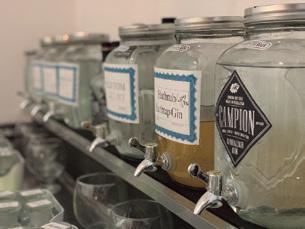
For a fun filled, memorable hour book a place on the “Gibraltar Gin Experience” at the only distillery in Gibraltar.
The tour begins with a brief history on the Art of Distilling, an explanation of how Gin is made, followed by a comprehensive time line of Gibraltar history and gins chequered past.
Get to know how Alchemists from 450BC, 11th Century Monks, 17th & 18th Century Kings and Artists, The Royal Navy, American Politicians, Winston Churchill and James Bond added and subtracted to the popularity of Juniper Spirits.
Tantalise your taste buds with the taste of 6 Historic Gins created by the Spirit of the Rock team, designed to help improve your ability to choose your perfect Gin.
See and smell the botanicals used to make CAMPION one of the BEST GINS in the WORLD (World Gin Awards 2020).
End the tour with a complimentary double tot of your favourite Spirit.
Give us a call on 00350 54067487 or email us on info@ spiritoftherock.gi for more information or to book your place. £20 per person, group discounts available. Must be over 18 years of age.


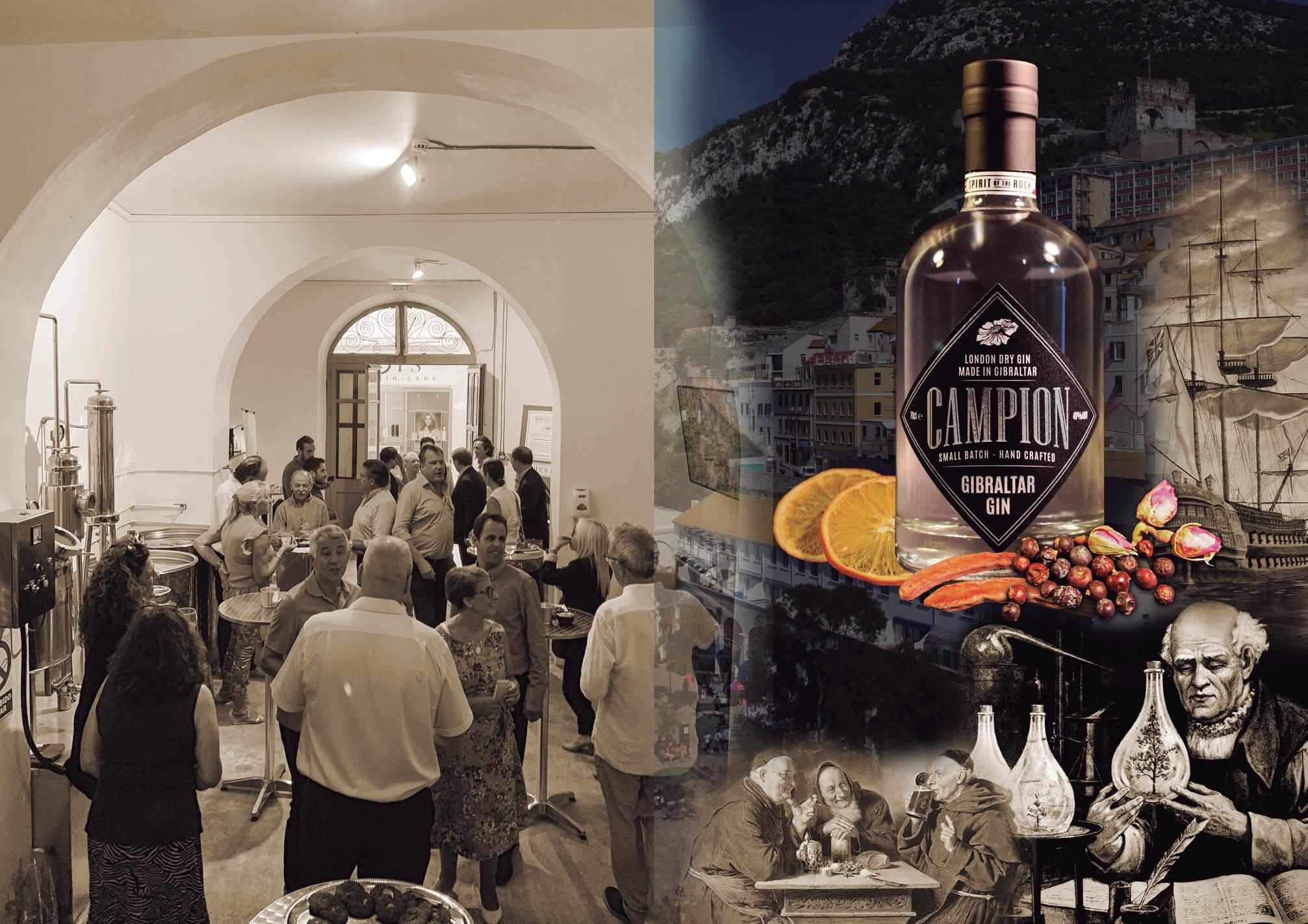
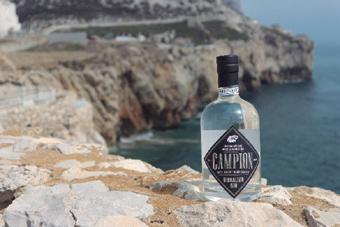
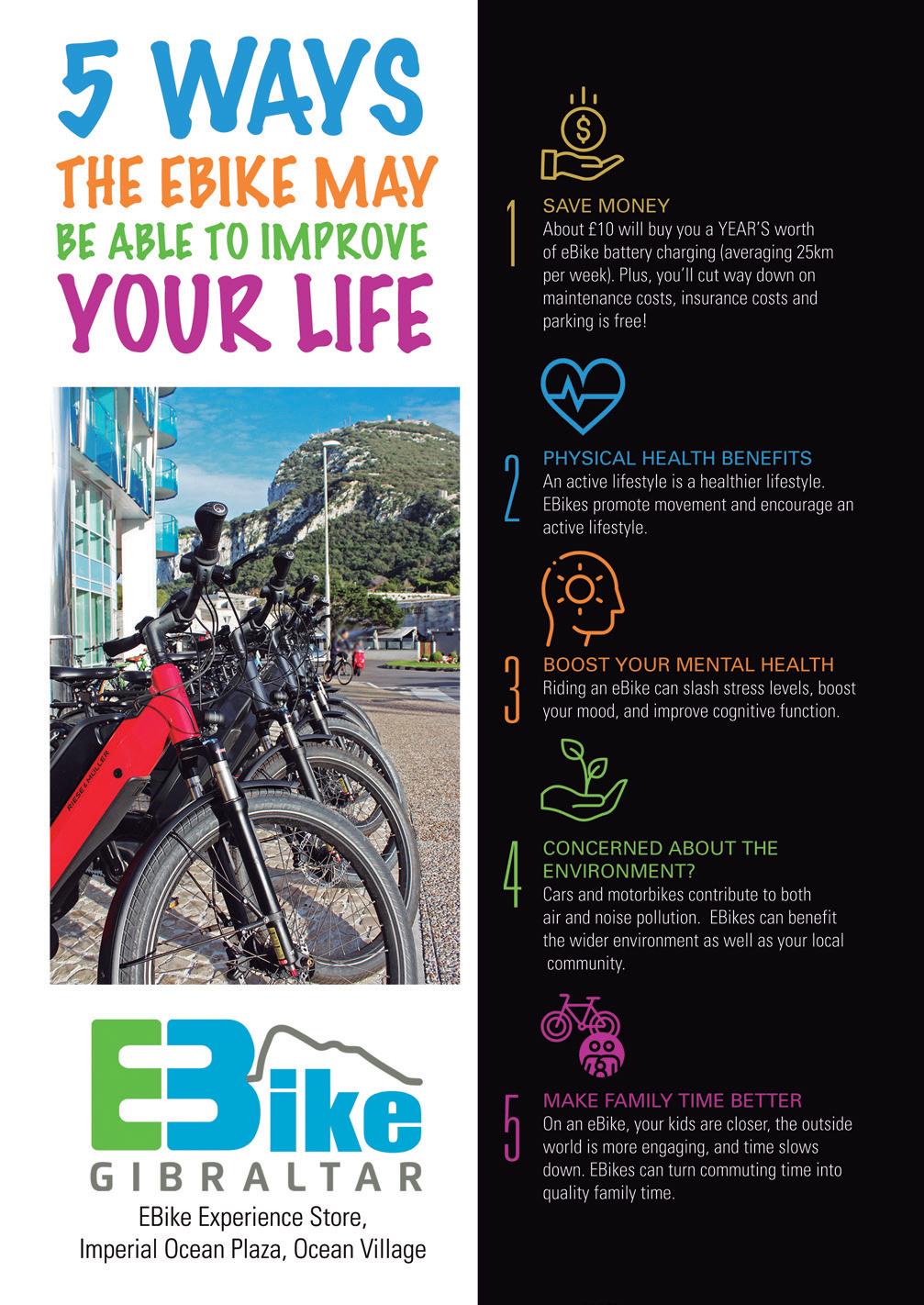

Guía rápida de: Islas Galápagos
GalápagosIslands


Language: Spanish.
Currency: US Dollar.
Capital: Puerto Baquerizo Moreno (Regional).
Famous for:
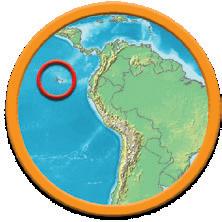
Idioma:
Español.
Moneda:
Dólar estadounidense.
Capital:
Home of modern ecology. Charles Darwin. Unique species and biodiversity. Some top places: Visit the Charles Darwin Research Centre at Puerto Ayora. Marvel at giant tortoises and hawks on the hike to Volcan Alcedo. See colonies of marine iguanas at Puerto Egas on Isla Santiago. Watch sea lions lazing on Las Loberias beach on Isla San Cristóbal. See the only penguins that live north of the equator on Isla San Fernandina. Explore North Seymour island to see land iguanas, blue footed boobies and magnificent frigate birds.
Activities:
Hiking, kayaking, snorkeling, diving, surfing, sailing, swimming.
Weather:
High Season (Jan to May) warm and wet. Low Season (Jun to Dec) cooler and choppier sea conditions.
Health/Vaccinations:
Malaria risk in mainland Ecuador. Some vaccinations recommended - Always check with your nearest travel clinic at least 4 to 6 weeks before travel for up to date advice.
Eco fact:
An astonishing 97% of the Galápagos islands are designated a national park.
Eco resorts:
Budget: Galápagos Eco Friendly from £85 per night (Puerto Baquerizo Moreno).
Mid: Hotel Galápagos Habitat from £200 per night (Puerto Ayora).
Luxury: Finch Bay Galápagos Hotel from £350 per night (Puerto Ayora).


Puerto Baquerizo Moreno (Regional).
Famosa por:
Hogar de la ecología moderna. Charles Darwin. Especies únicas y biodiversidad
Lugares de interés:
Visite el Centro de Investigación Charles Darwin en Puerto Ayora. Maravíllate con las tortugas gigantes y los halcones en la caminata hacia Volcán Alcedo. Vea colonias de iguanas marinas en Puerto Egas en Isla Santiago. Observe a los leones marinos en la playa de Las Loberías en la Isla San Cristóbal. Vea los únicos pingüinos que viven al norte del ecuador en Isla San Fernandina. Explore la isla Seymour Norte para ver iguanas terrestres, piqueros de pata azules y las magnifica pajaros de fragata.

Actividades:
Senderismo, kayak, snorkel, buceo, surf, vela, natación.
Clima:
Temporada alta (enero a mayo) cálido y húmedo. Temporada baja (junio a diciembre) condiciones del mar más frías y picadas.
Salud / Vacunas:
Riesgo de malaria en Ecuador continenta. Se recomiendan algunas vacunas. Consulte siempre con su clínica de viajes más cercana al menos 4 a 6 semanas antes del viaje para obtener consejos actualizados.
Ecología:
Un sorprendente 97% de las islas Galápagos están designadas como parque nacional.
Los mejores resorts ecológicos:
Economico: Galápagos Eco Friendly desde £85 por noche (Puerto Baquerizo Moreno).
Medio: Hotel Galápagos Habitat desde £200 por noche (Puerto Ayora).
Lujo: Finch Bay Galápagos Hotel desde £350 por noche (Puerto Ayora).
91 PHOTOGRAPHY: PEXELS.COM


Catálogo de Experiencias. Primavera 20
Organized by: OTWO Magazine
Tel. +00350 22500799 / info@otwomag.com
Transport available for groups.Check with us for your requirements. OTWO is a facilitator on these packages. All activities are contracted directly between the respective centre operator and the client. Prices are for the month of march only, please contact us for other dates.
Transporte disponible para grupos. Consultenos si estás interesado. OTWO es un mediador de estos paquetes. Todas las actividades se contratan directamente entre el operador y el cliente. Precios válidos solo para el mes de marzo, consulte para otras fechas.
93 92 OTWO 04 / NOVEMBER 2019 DESIGN: OXYGENE COMMUNICATIONS
WHAT
Dive in deep with a session that progresses from somatic movements, a dynamic yoga session, Qi Gong and meditation. The focus of each month varies e.g. stress and fatigue, hip mobility, reduce neck and shoulder tension etc. We look into the anatomical structures and physiological aspects in each theme.
WHO
These sessions are open to everyone.
Sessions for adults are open to all people regardless of age, gender identity, race, ethnicity, body type and physical ability.
WHY
Mobilizing the fascia and restoring the nervous system with somatic floor-based movements.
Creating strength and stability around joints through alinement. Inviting present moment experience through breath, movement and meditation.
WHEN
Last Saturday of the month.
9:30-11:30am.
WHERE
Gibraltar Academy Of Dance, The Arts Centre, 76 Prince Edwards Rd.
Happy to answer any questions you may have via email, message or a chat over the phone.
QUÉ
Sumérgete profundamente con una sesión que progresa desde movimientos somáticos, una sesión dinámica de yoga, Qi Gong y meditación. El enfoque de cada mes varía, p. estrés y fatiga, movilidad de la cadera, reducir la tensión del cuello y los hombros, etc. Examinamos las estructuras anatómicas y los aspectos fisiológicos de cada tema.
QUIEN
Estas sesiones están abiertas a todos. Las sesiones para adultos están abiertas a todas las personas, independientemente de su edad, identidad de género, raza, etnia, tipo de cuerpo y capacidad física.
POR QUÉ
Movilizando la fascia y restaurando el sistema nervioso con movimientos somáticos. Creando fuerza y estabilidad alrededor de las articulaciones a través del alineamiento. Invitando a la experiencia del momento presente a través de la respiración, el movimiento y la meditación.
CUANDO
Ultimo sábado del mes. 9:30 -11:30 am.
DÓNDE
Gibraltar Academy of Dance, The Arts Centre, 76 Prince Edwards Rd. Estaremos encantados de responder cualquier pregunta que pueda tener por correo electrónico, mensaje o por teléfono.
£22
per person (por persona)
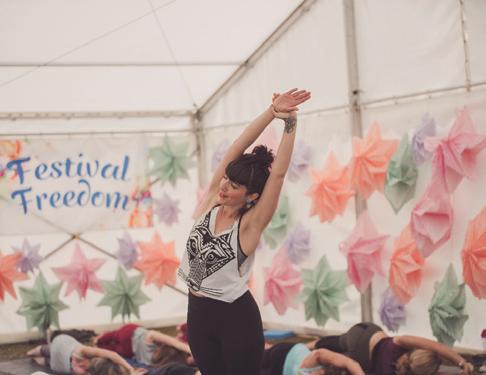
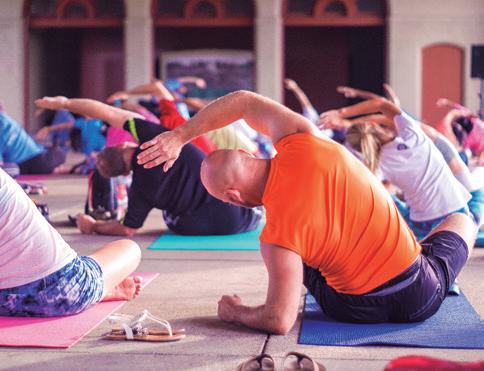

94
YOGA WORKSHOPS. GIBRALTAR
MENSUALES DE YOGA. GIBRALTAR
MONTHLY
TALLERES
OTWO 04 / NOVEMBER 2019
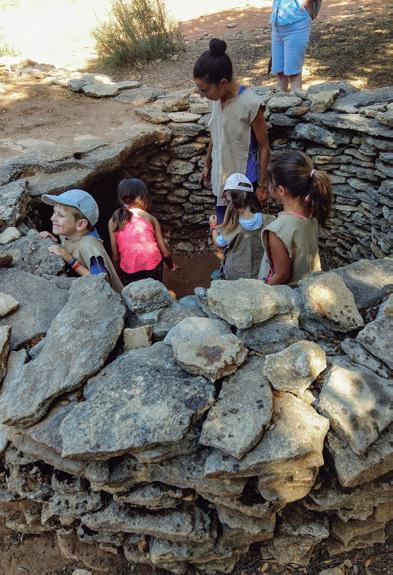
Family Spring Weekends 20th, 21st and 22nd Mach. Enjoy a family weekend, in a privileged natural environment, as is, the Serranía de Ronda. Learn, play, enjoy in the heart of nature through the interpretation of a Prehistoric Village, where we can learn how our ancestors lived.
Nature trails, workshops, games and joint activities, night routes. Come and enjoy a different start to the spring season.
The price is £120 for adults, £70 for children aged 3 to 12 years old, children under 3 free (meal option available for £20).
The price includes:
- Accommodation in rural houses.
- Full board for the whole of your stay.
- Activities.
- From Friday 20th in the afternoon to Sunday at 13:00 hours.
FRIDAY 20th MARCH
17:00h: Arrival at Algaba de Ronda.
18:30h: Presentation and brief introduction to the area, program of activities and operating guidelines.
19:15h: Walk through the farm to the Torre-Mirador.
20:30h: Dinner.
22:00h: Free time and rest.
SATURDAY 21st MARCH
09:00h: Breakfast.
10:00h: Visit to the prehistoric village. Birdwatching visit and geological route. Visit Iberian golden pig farm. Mid-morning snack.
14:00h: Lunch.
16:00h: Workshop on the reuse of packaging with spring decoration.
18:00h: Snack and personal time.
20:30h: Dinner.
21:30h: Night route and astronomical observation.
23:00h: Rest.
SUNDAY 22nd MARCH
09:00h: Breakfast.
11:00h: Departure from Algaba de Ronda and through a hiking route around the Sierra de las Nieves Natural Park (“Las Conejeras” trail, low difficulty).
13:00h: End of the activity.
The program may be subject to change due to weather conditions.
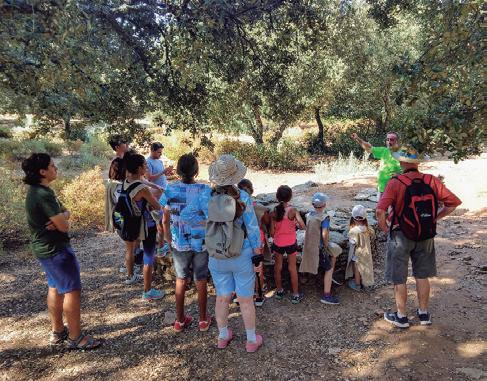
FIN DE SEMANAS FAMILIARES DE PRIMAVERA. RONDA – MÁLAGA

Fines de Semana Familiares de Primavera 20, 21 y 22 de Marzo. Disfruta de un fin de semana en familia, en un entorno natural privilegiado, como es, la Serranía de Ronda. Aprender, jugar, disfrutar en plena naturaleza a través de la interpretación de un Poblado Prehistórico, donde podremos aprender cómo vivían nuestros antepasados. Senderos en la naturaleza, talleres, juegos y actividades conjuntas, rutas nocturnas. Ven y disfruta de un inicio de la primavera, diferente.
El precio es £120 por adulto, £70 niños de 3 a 12 años, menores de 3 gratis (opción de manutención por £20).
Incluye:
- Alojamiento en casas rurales.
- Pensión completa.
- Actividades.
- De Viernes el 20 por la tarde al domingo 22 a las 13 horas.
VIERNES 20 de MARZO.
17:00 h: Llegada al Aula de Naturaleza Algaba de Ronda y alojamiento.
18:30 h: Presentación e introducción al programa y Normas de funcionamiento del Aula.
19:15 h: Paseo por la finca hasta la Torre-Mirador.
20:30 h: Cena.
22:00 h: Tiempo libre y descanso.
SÁBADO 21 de MARZO.
09:00 h: Desayuno.
10:00 h: Visita al poblado prehistórico y demostración arqueo-experimental. Visita observatorio de aves y ruta geológica. Visita granja de cerdos ibérico dorado. Fruta de media mañana.
14:00 h: Almuerzo.
16:00 h: Taller de reutilización de envases con decoración primaveral.
18:00 h: Merienda y tiempo personal.
20:30 h: Cena.
21:30 h: Ruta nocturna y observación astronómica. 23:00 h: Descanso.
DOMINGO 22 de MARZO.
09:00 h: Desayuno.
11:00 h: Salida del aula de naturaleza Algaba de Ronda y ruta de senderismo por el Parque Natural Sierra de las Nieves (sendero de “Las Conejeras”, dificultad baja).
13:00 h: Fin de la actividad.
El programa puede estar sujeto a modificaciones a causa de las condiciones meteorológicas.
OTWO 08 / MARCH 2020 97 96 OTWO 08 / MARCH 2020
SPRING FAMILY WEEKEND.
– MÁLAGA
RONDA
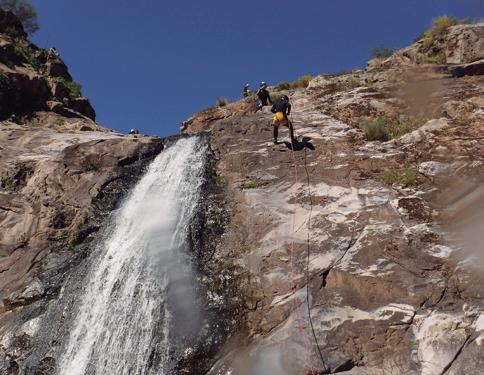



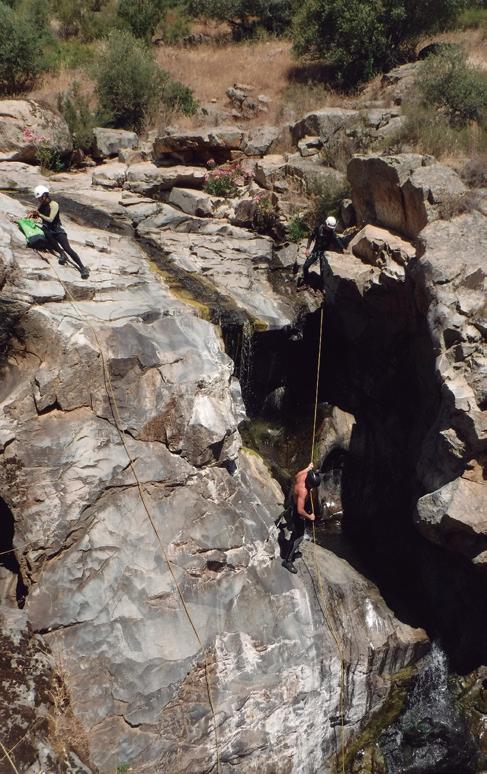
LEVEL 1 CANYONING
Canyoning is a very exciting adventure. It consists of descending along the high course of a river progressing through all the obstacles that nature has to offer; waterfalls, natural slides, rappels and much more.
According to the amount of water, duration and obstacles the sport is categorized at different levels. We propose a level 1 ravine, easy but with some stretches of difficulty, rappels and mandatory jumps.
RIVER CALZADILLAS.
Las Calzadillas ravine is a very picturesque canyon located in the beautiful town of Almadén de la Plata, in the northern Sierra of Seville. The best season to visit is at the beginning of spring, although it is also quite beautiful in autumn and winter. It is not recommended in summer, since its river would be almost dry. We leave all vehicles in an area close to the river and start our trek along its left bank, having a good view of all the spots we will have the chance to explore. It is an open ravine with a very polished, sometimes slippery, stone with small ponds. From a technical point of view, it is not an excessively complicated ravine, but it is a very beautiful place and if you want to a good introduction it is an ideal ravine for it. We found three rappels in this area. The first of about 12 meters, the second of about 25 meters that ended in a large pool and the third is located in the most embedded part of the ravine, which ends in a long and narrow corridor between two large walls where you have to progress by swimming.
Duration: From 3.5 to 4.5 hours.
Minimum / Maximum participants: 7/15 participants.
Recommended Dates: Winter, spring and autumn.
Services:
Experienced guides and equipment. All equipment needed.
First aid kit.
RC and Accident Insurance. Photo report with video summary.
£40 per person (por persona)
BARRANQUISMO DE NIVEL 1
El descenso de barrancos o barranquismo es una aventura muy emocionante. Consiste el descender por el curso alto de un río progresando a través de todos los obstáculos que te propone la naturaleza: saltos al agua, toboganes naturales, ráppeles, destrepes y mucho más.
Según la cantidad de carga de agua, duración y obligatoriedad de los obstáculos se categorizan en distintos niveles.
Proponemos un barranco de nivel 1, fácil pero con algunos tramos de dificultad y ráppeles y saltos obligatorios.
RÍO CALZADILLAS.
El barranco de Las Calzadillas es un cañón muy pintoresco situado en el precioso pueblo de Almadén de la Plata, en la sierra Norte de Sevilla. La mejor época es a comienzos de la primavera, aunque también está bastante bonito en otoño e invierno. No es recomendable en verano, ya que su cauce se queda casi seco. Dejamos los vehículos en una zona próxima al río y lo remontamos por su margen izquierdo, viendo en todo momento los lugares que tendremos la ocasión de descender.
Es un barranco abierto, con una piedra muy pulida, a veces resbaladiza y pequeñas charcas. Desde un punto de vista técnico, no es un barranco excesivamente complicado, pero es un lugar muy bonito y si te quieres iniciar en el barranquismo, es un barranco ideal para ello. Nos encontramos tres rápeles. El primero de unos 12 metros, el segundo de unos 25 metros que acababa en una gran poza y el tercero que se encuentra en la parte más encajada del barranco, que termina en un largo y estrecho pasillo entre dos grandes paredes en el que hay que progresar nadando.
Duración: De 3.5 a 4.5 horas.
Mínimo/Máximo de participantes: 7/15 participantes.
Fechas Recomendadas: Invierno, primavera y otoño.
Servicios: Monitores y equipos especializados. Todo el material técnico. Botiquín primeros auxilios. Seguros RC y Accidentes. Reportaje fotográfico con vídeo resumen.
99 98
ADVENTURE IN THE NORTHERN SIERRA OF SEVILLE AVENTURA EN LA SIERRA NORTE DE SEVILLA
OTWO 08 / MARCH 2020 OTWO 08 / MARCH 2020
Activity Description
From the Visitor Center “El Aljibe” we offer a unique opportunity to discover the characteristics and singularities of the Los Alcornocales Natural Park, through a path of restricted access that runs through the Risco Blanco stream.
The humidity, shadows and leafiness of the route are characteristics of these river valleys that resembles a semitropical landscape. On the trail we can see the forest of Alcornocal and Quejigal very well preserved in addition to mosses, lichens, ferns and plants climbers, such as ivy and sarsaparilla. All these create an almost magical atmosphere in this forest known as “the Canutos y Bosques de Niebla” that form the last jungle in the South of Europe.
Activity Programming:
- Welcome and reception (Visitor Center)
- Introduction to the Natural Park (audiovisual and model of the Park)
- Travel to the beginning of the trail (approximately 45 m.)
- White Trail of Risco Blanco (approximately 3 hours)
- Return to the Visitor Center
The activity will be suspended if a minimum of participants are not registered or the weather is not favorable.
Single price: £85.00 (from 2 to 8 people).
Services included: specialized guide, access to the Natural Park, insurance, healthy breakfast (local cuisine), picnic, binoculars and photographic gift.
Recommendations:
• Use of mountain boots, appropriate comfortable clothing and sun protection.
• This activity is not recommended for people with mobility problems, fatigue or poor physical fitness.
Duration:
6 h. approximately
From 09:00 h. at 3:00 p.m.
Descripción actividad
Desde el Centro de Visitantes “El Aljibe” ofrecemos una oportunidad única para dar a conocer la características y singularidades del Parque Natural Los Alcornocales, a través de un sendero de acceso restringido que discurre por el arroyo de Risco Blanco. La humedad, la sombra y la frondosidad del recorrido son características de estos valles fluviales que recuerdan en parte un paisaje semitropical. En el sendero podremos ver bosque de Alcornocal y Quejigal muy bien conservados además de musgos, líquenes, helechos y plantas trepadoras, como hiedra y zarzaparrilla, que crean un ambiente casi mágico en este bosque conocido como “los Canutos y Bosques de Niebla” que constituyen la última selva del Sur de Europa.
Programación actividad:
- Bienvenida y recepción (Centro de Visitantes).
- Introducción al Parque Natural (audiovisual y maqueta del Parque).
- Desplazamiento hasta el inicio del sendero (45 m. aproximadamente).
- Sendero Canuto de Risco Blanco (3 h. aproximadamente).
- Regreso al Centro de Visitantes
La actividad se suspenderá si no se inscriben un mínimo de participantes o la meteorología no es favorable.
Precio único: £85.00 (desde 2 hasta 8 personas).
Servicios incluidos: guía intérprete especializado, autorizaciones del Parque Natural, seguros, desayuno saludable (gastronomía local), picnic, prismáticos y obsequio de reportaje fotográfico.
Recomendaciones:
- Uso de bota de montaña, ropa adecuada para realizar senderos y protección solar.
- Esta actividad no está recomendada a personas con problemas de movilidad, fatiga o en baja forma física.
Duración:
6 h. aproximadamente De 09:00 h. a 15:00 h.

100 OTWO 08 / MARCH 2020 RISCO BLANCO CANUTO HIKE. LOS ALCORNOCALES NATURAL PARK.
SENDERO CANUTO DE RISCO BLANCO. PARQUE NATURAL LOS ALCORNOCALES.
Enjoy breath taking views across 3 countries and 2 continents, explore Gibraltar’s fascinating history and be introduced to our most famous inhabitants, the Barbary macaques – the only free roaming monkeys in Europe!
Highlights:
Europa Point and Lighthouse, Upper Rock Nature Reserve, Pillars of Hercules Monument, Windsor Suspension Bridge, O’Hara’s Battery (top of Rock 424m), kywalk, Ape’s Den, Great Siege Tunnels, Moorish Castle...and many more.
What’s included?
Premium e-bike by Riese&Müller. Cycle helmet. Safety instructions. Entrance fee into the Nature Reserve. An official tour guide. Bottled water.
Duration:
3 hours. Suitable for everyone over 155 cm, over 12 years old and capable of riding a bicycle.
EBIKES GROUP TOURS. GIBRALTAR
Disfrute de las impresionantes vistas de 3 países y 2 continentes, explore la fascinante historia de Gibraltar y conozca a nuestros habitantes más famosos, los macacos de Berbería, ¡los únicos monos que se desplazan libremente en Europa!
Puntos destacados:
Punta de Europa y el Faro, Reserva Natural Upper Rock (Parte superior del peñon), Monumento de las Columnas de Hércules, Puente colgante de Windsor, Bateria de O’Hara (parte superior del peñon - 424m), El Skywalk, Guarida de los monos, Gran túneles de asedio, Castillo Arabé. …y muchos más ¿Qué está incluido?
Alta calidad E-bike de Riese&Müller. Casco de bicicleta. Instrucciónes de seguridad. Entrada a la reserva natural. Guía oficial. Agua embotellada.
Duración:
3 horas. Adecuadas para todos los que midan más de 155 cm, tengan más de 12 años de edad y puedan montar en bicicleta.
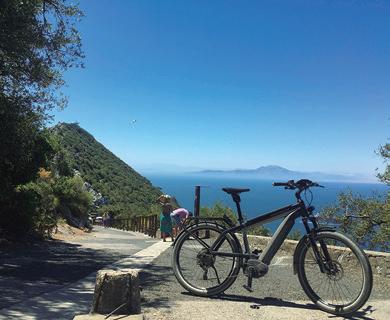

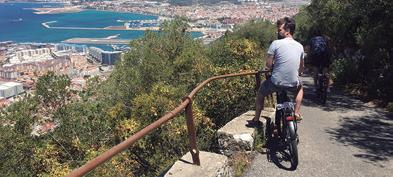

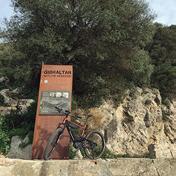

STAND UP PADDLE LESSONS GIBRALTAR
Stand up paddle boarding is such a fun activity to do with your friends and family, it’s a perfect way to see the rugged side of Gibraltar. This is a popular activity and you don’t require any previous boarding or canoeing experience to pick it up! Join us for a beginner SUP session to learn the basics from kneeling and to finally stand up paddle boarding. Once you have completed this session, you will be able to join in on more advanced SUP adventures such as the Sunset and the SUP Safari around the stunning southerly coastline of Gibraltar. This session is for people who are keen to develop paddling skills, learn the correct techniques and keep safe on the water.
Duration : 2hrs
What’s included?
Brief induction on safety skills. All SUP equipment required.
Paddle Board rental for 2rs.
Fully Qualified instructor.
SUP Certificate from the British SUP Association An experience you will never forget!
Ages 8-14 will obtain the “Born to Ride” Certification
Ages 14+ will obtain the “Ready to Ride” Certification. All must be confident swimmers.
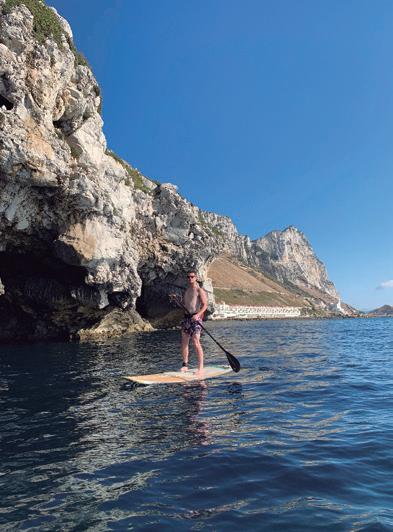

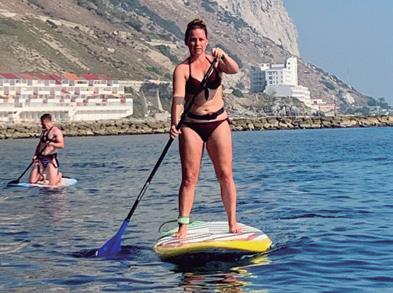
El stand up paddle board es una actividad muy divertida para disfrutar con tus amigos y familiares, es una manera perfecta de ver el lado escarpado de Gibraltar.
¡Esta es una actividad popular y no necesita experiencia previa en boarding o canotaje para recogerla! Únase a nosotros para una sesión de SUP para principiantes y aprender los conceptos básicos de arrodillarse y finalmente pararse en el paddle surf. Una vez que hayas completado esta sesión, podrás unirte a aventuras de SUP más avanzadas, como el Sunset y el Safari de SUP en la impresionante costa sur de Gibraltar.
Esta sesión es para personas que desean desarrollar habilidades para remar, aprender las técnicas correctas y mantenerse a salvo en el agua.
Duración: 2 horas.
¿Qué está incluido?
Breve inducción sobre habilidades de seguridad. Se requiere todo el equipo de SUP. Alquiler de Paddle Board por 2 horas.
Instructor totalmente calificado.
Certificado SUP de la Asociación Británica de SUP ¡Una experiencia que nunca olvidaras!
De 8 a 14 años obtendrán la certificación “Born to Ride”
Los mayores de 14 años obtendrán la certificación “Listo para surf”
Todos deben ser nadadores seguros
EBIKES DAILY ROCK TOURS. Gibraltar
£69 per person (por persona)
LECCIONES DE STAND UP PADDLE GIBRALTAR
102 103 Reserveonlineonthedayofyourtour andusePromocode:OTWO10togeta10%discount! (subjecttoavailability) ReservaonlineeneldíadeturecorridoyusarelPromocodeOTWO10 paraundescuentodel10%(sujetoadisponibilidad) www.ebike-gibraltar.com £40 per person (por persona) OTWO 08 / MARCH 2020


